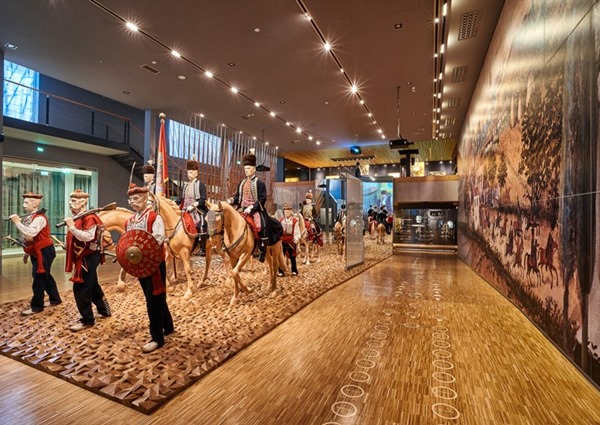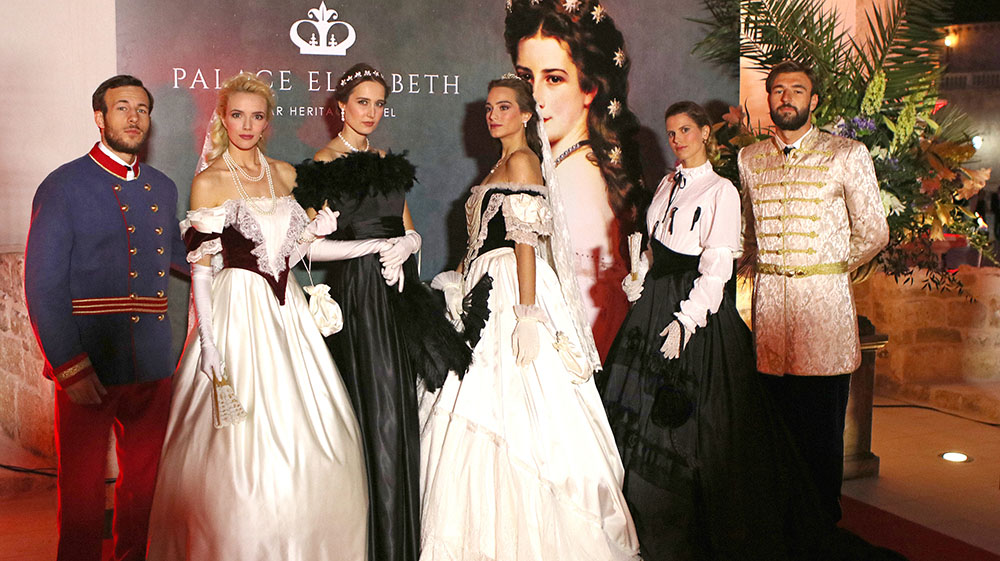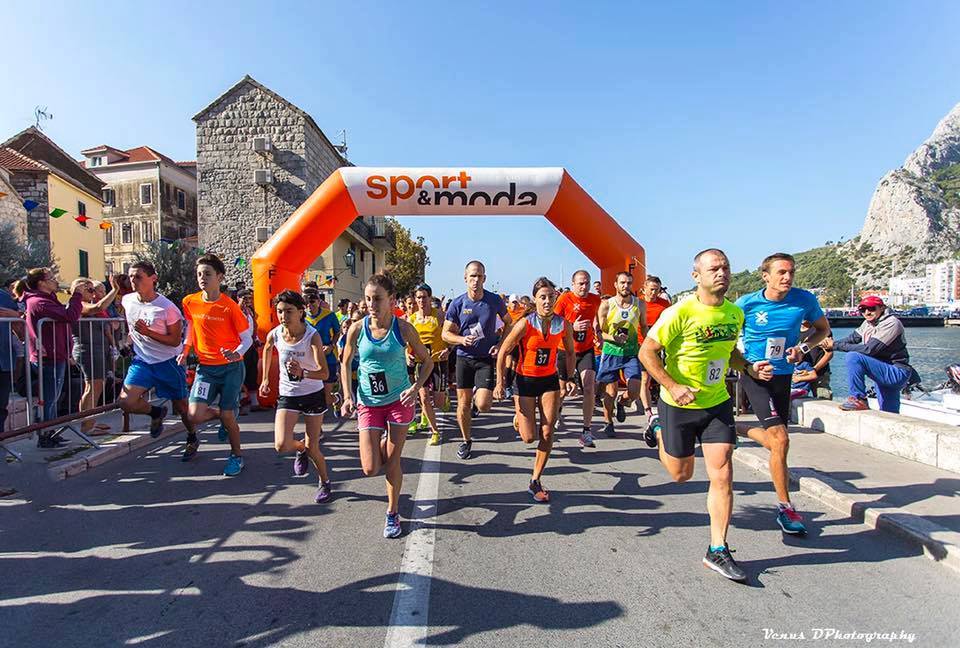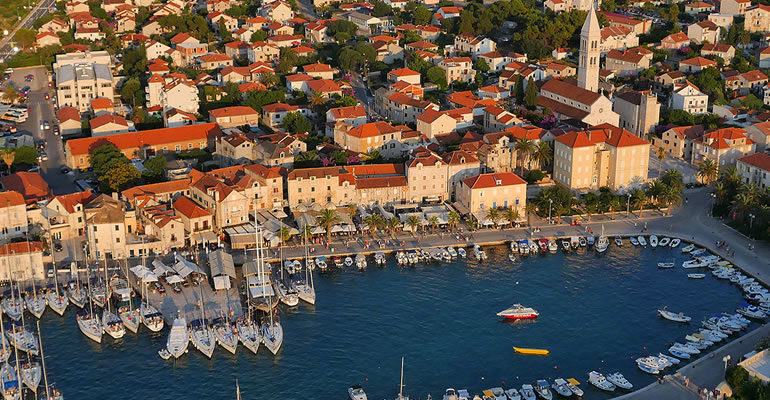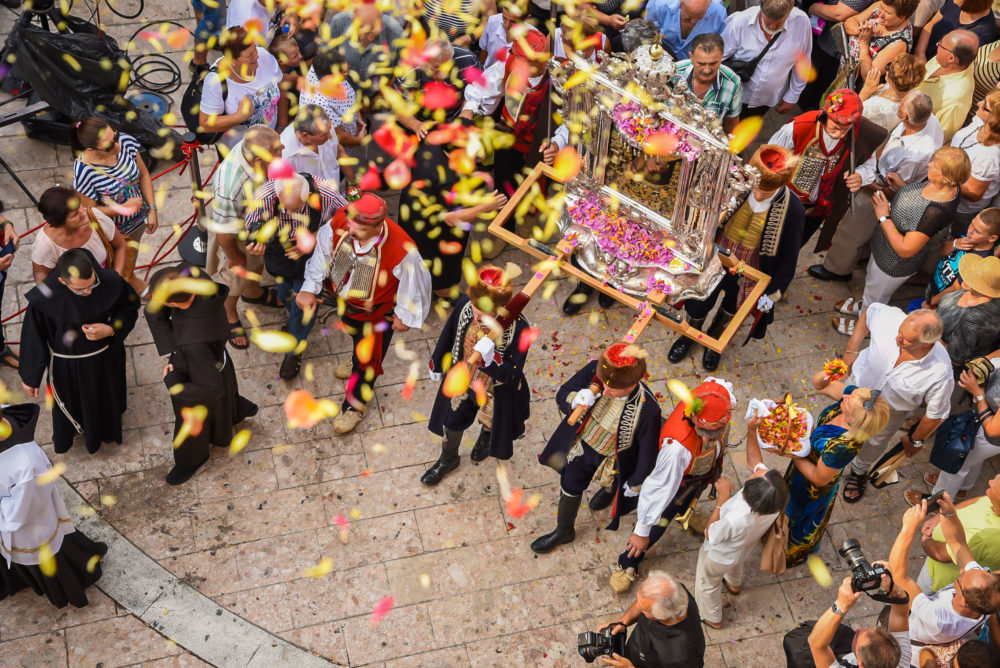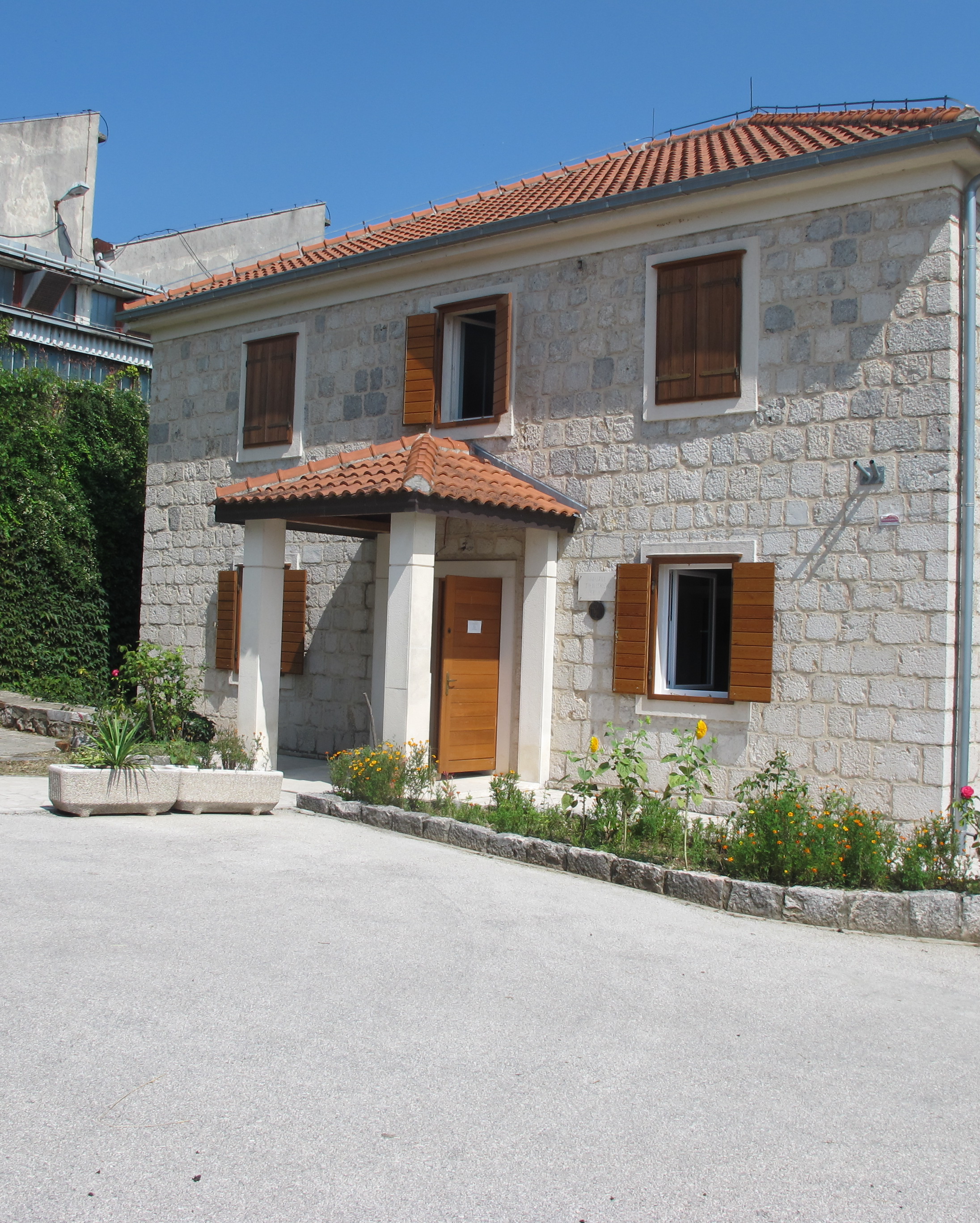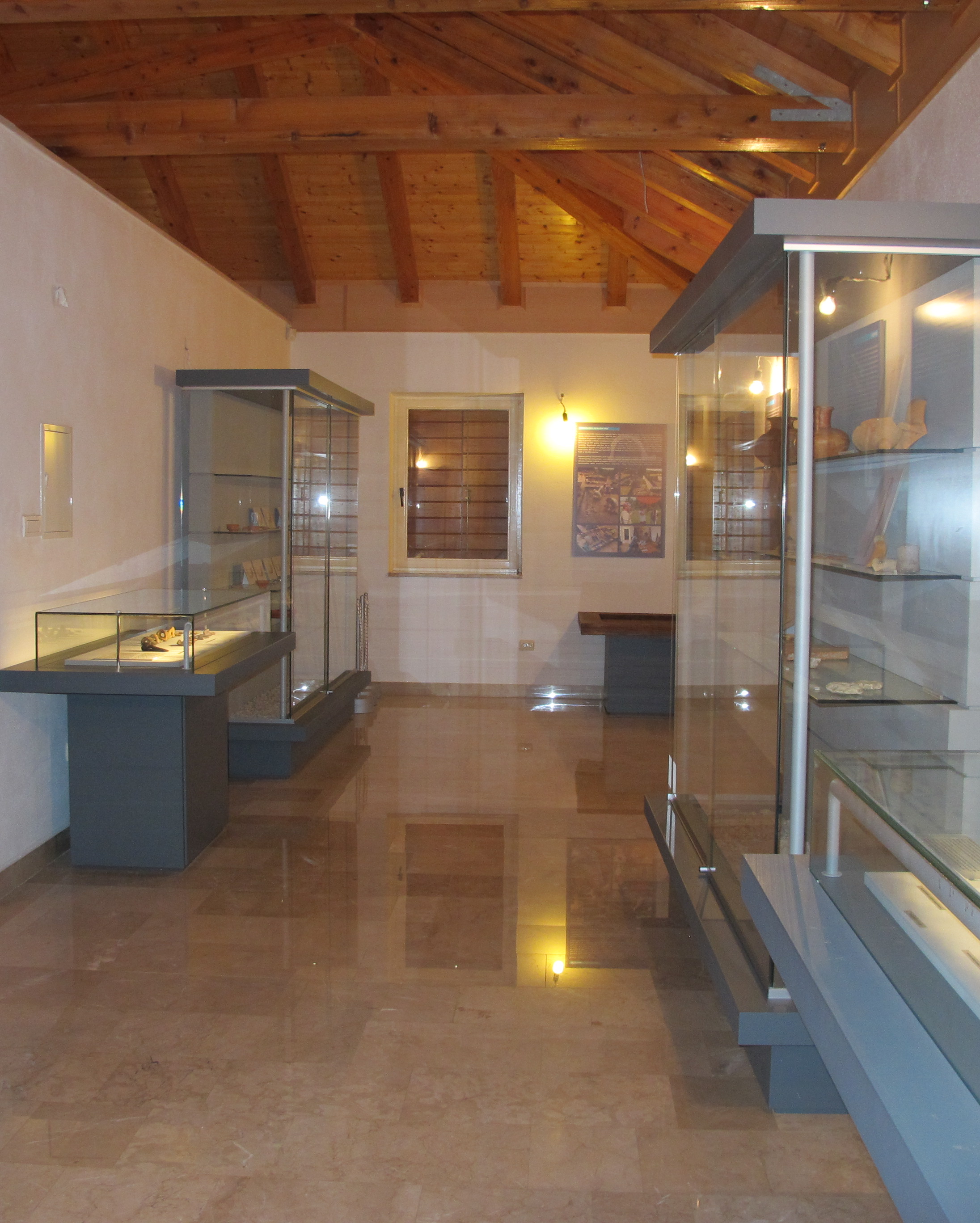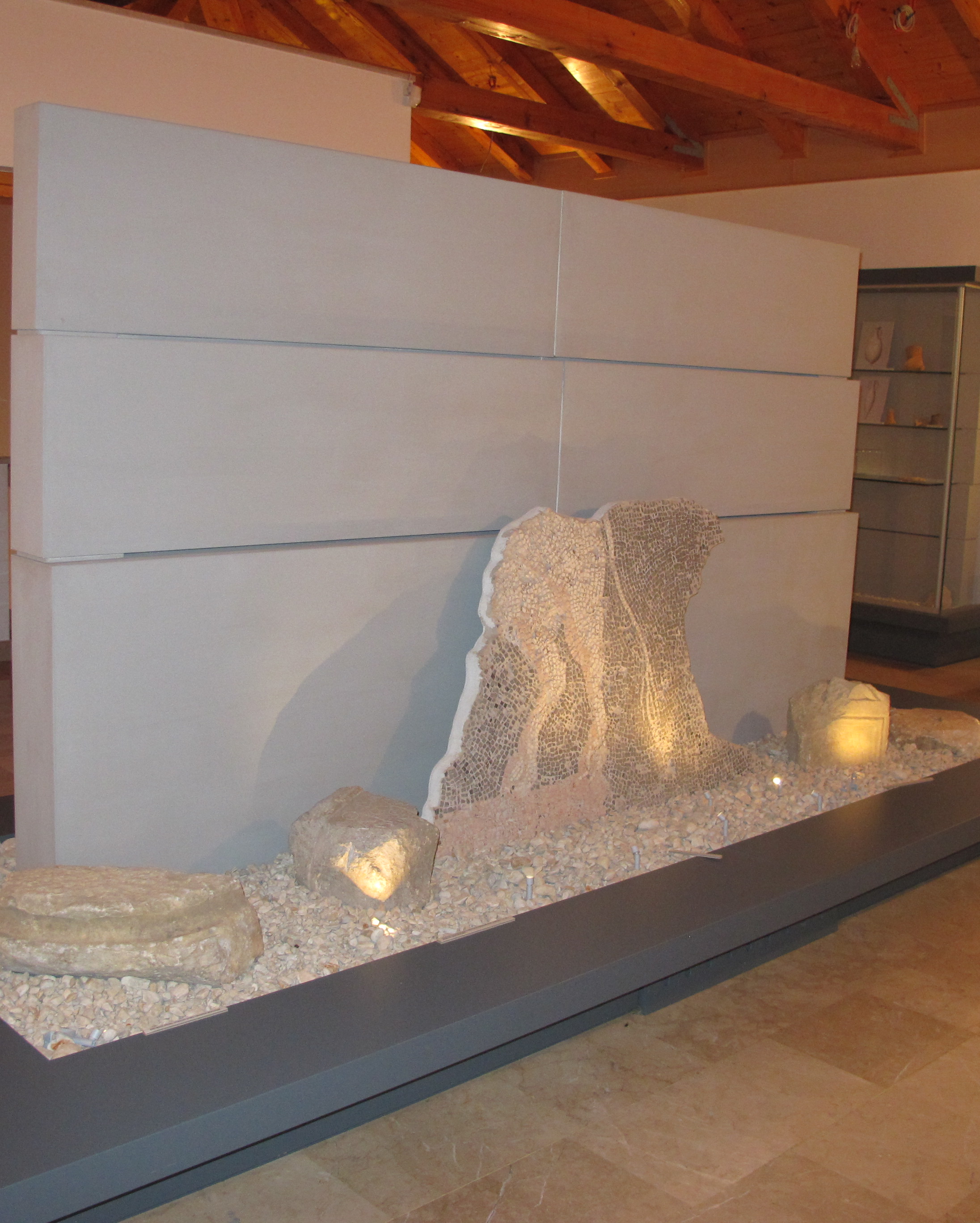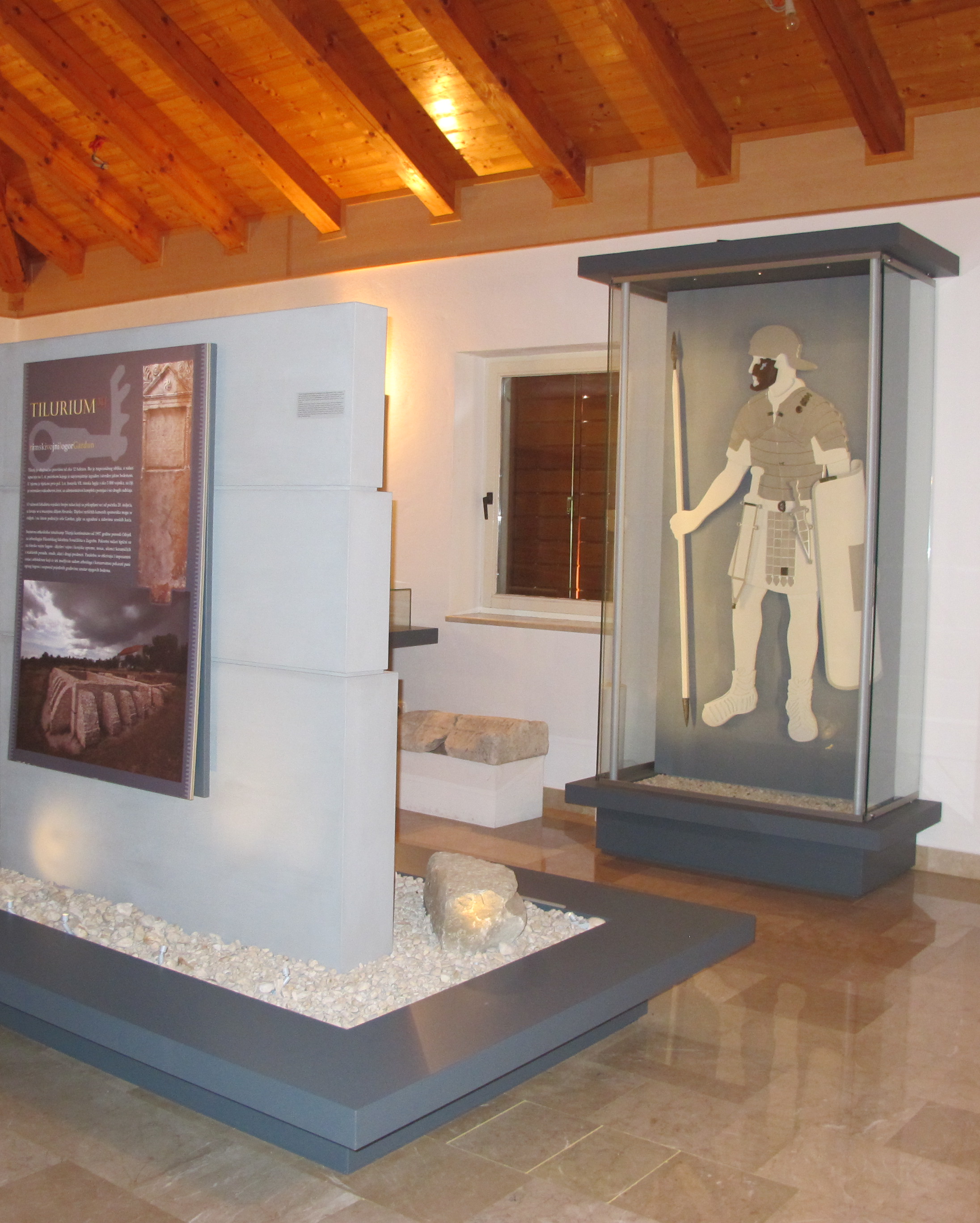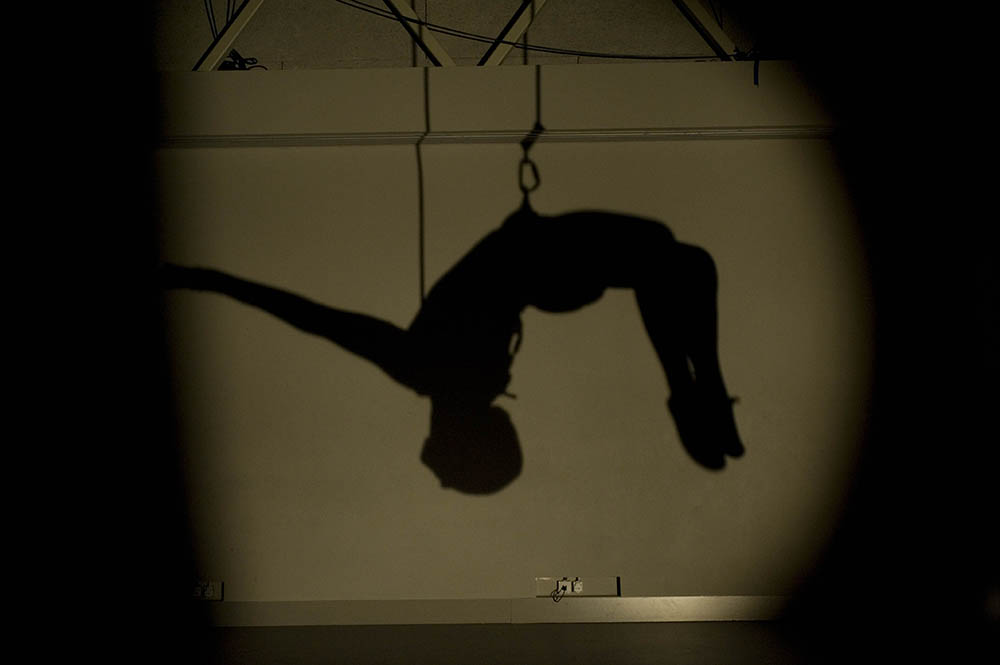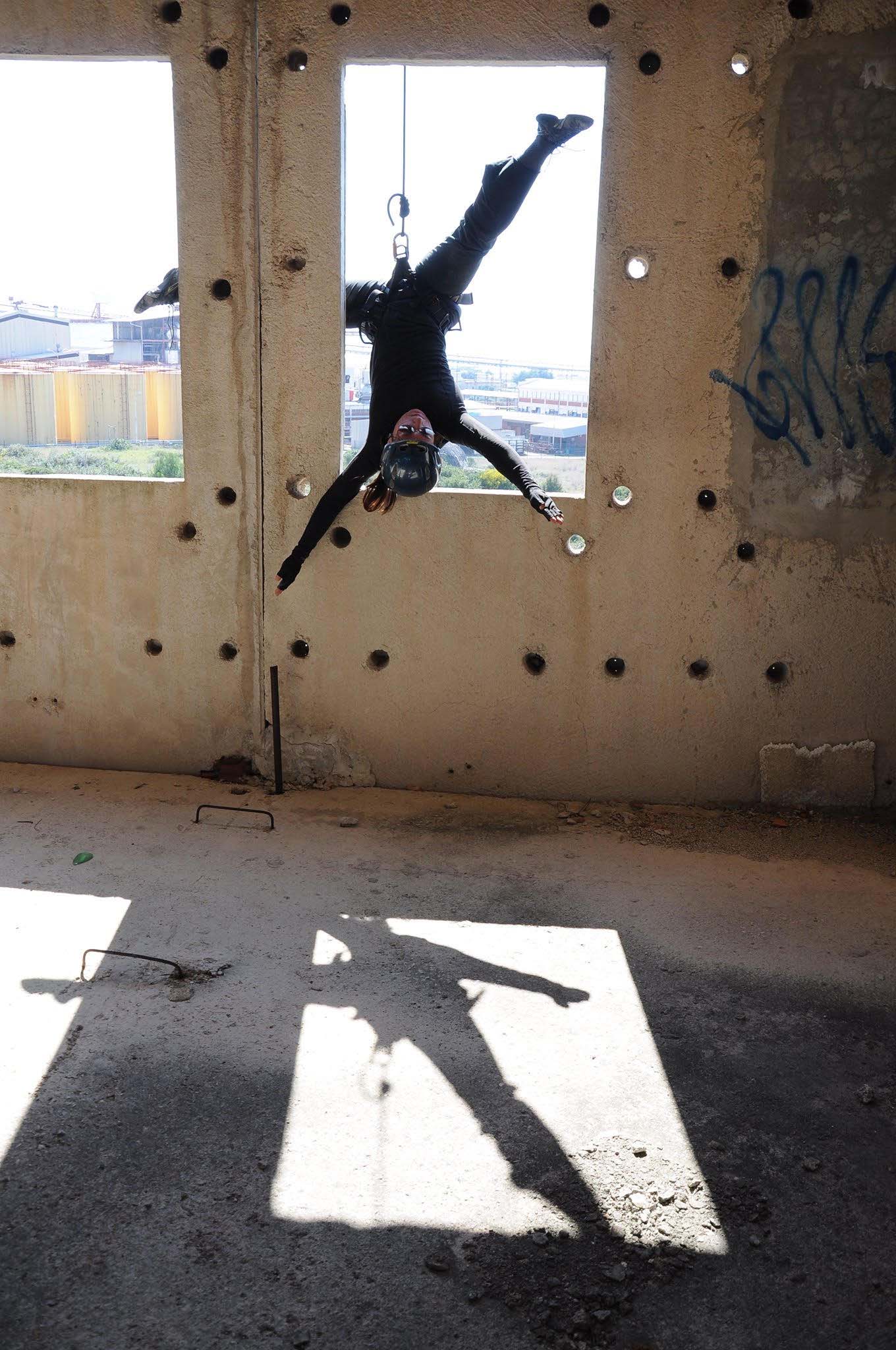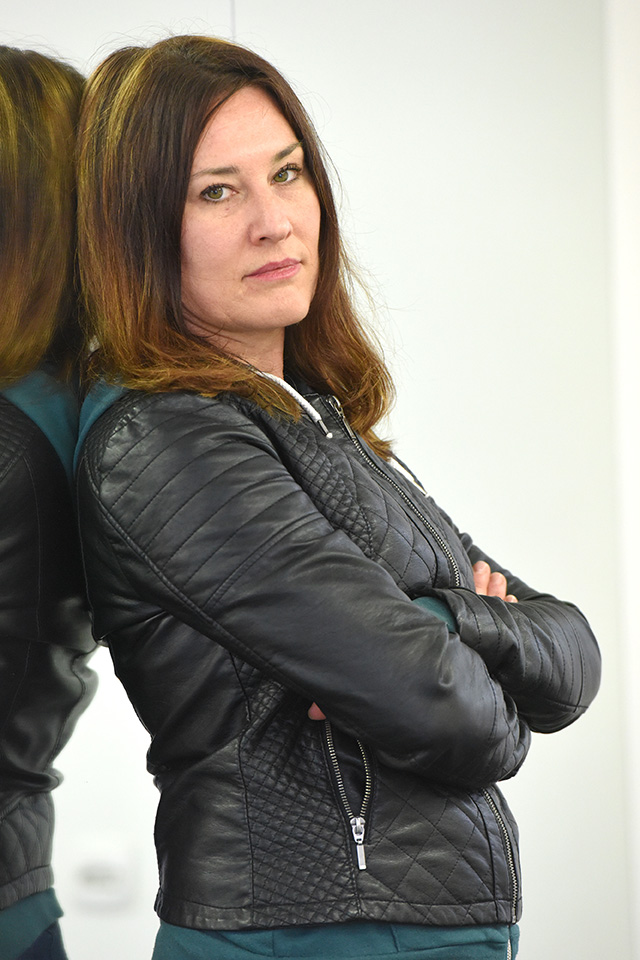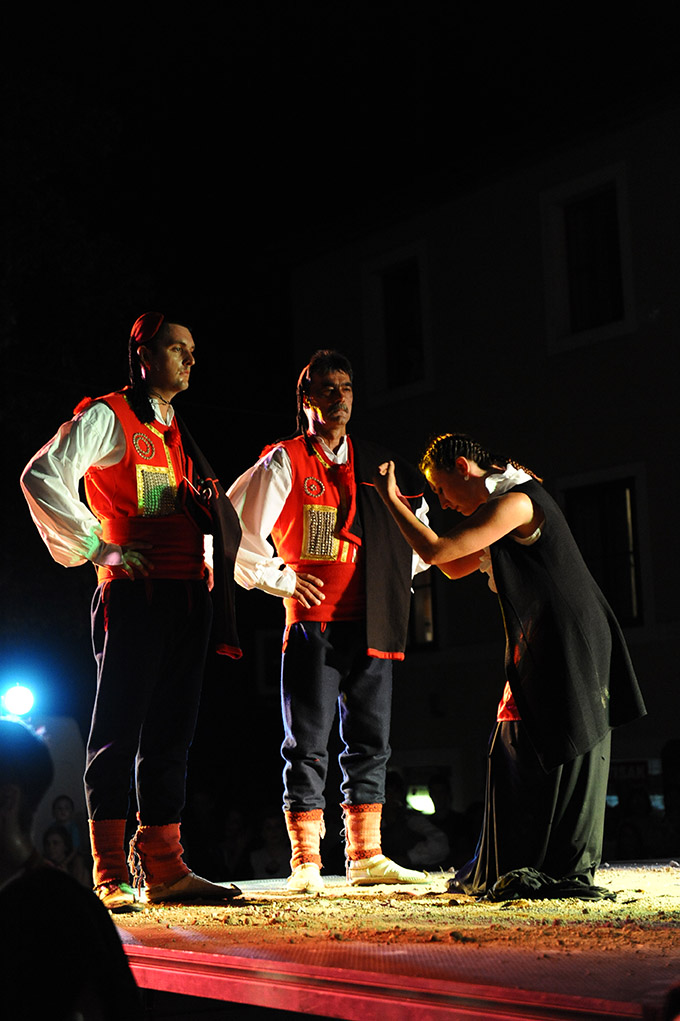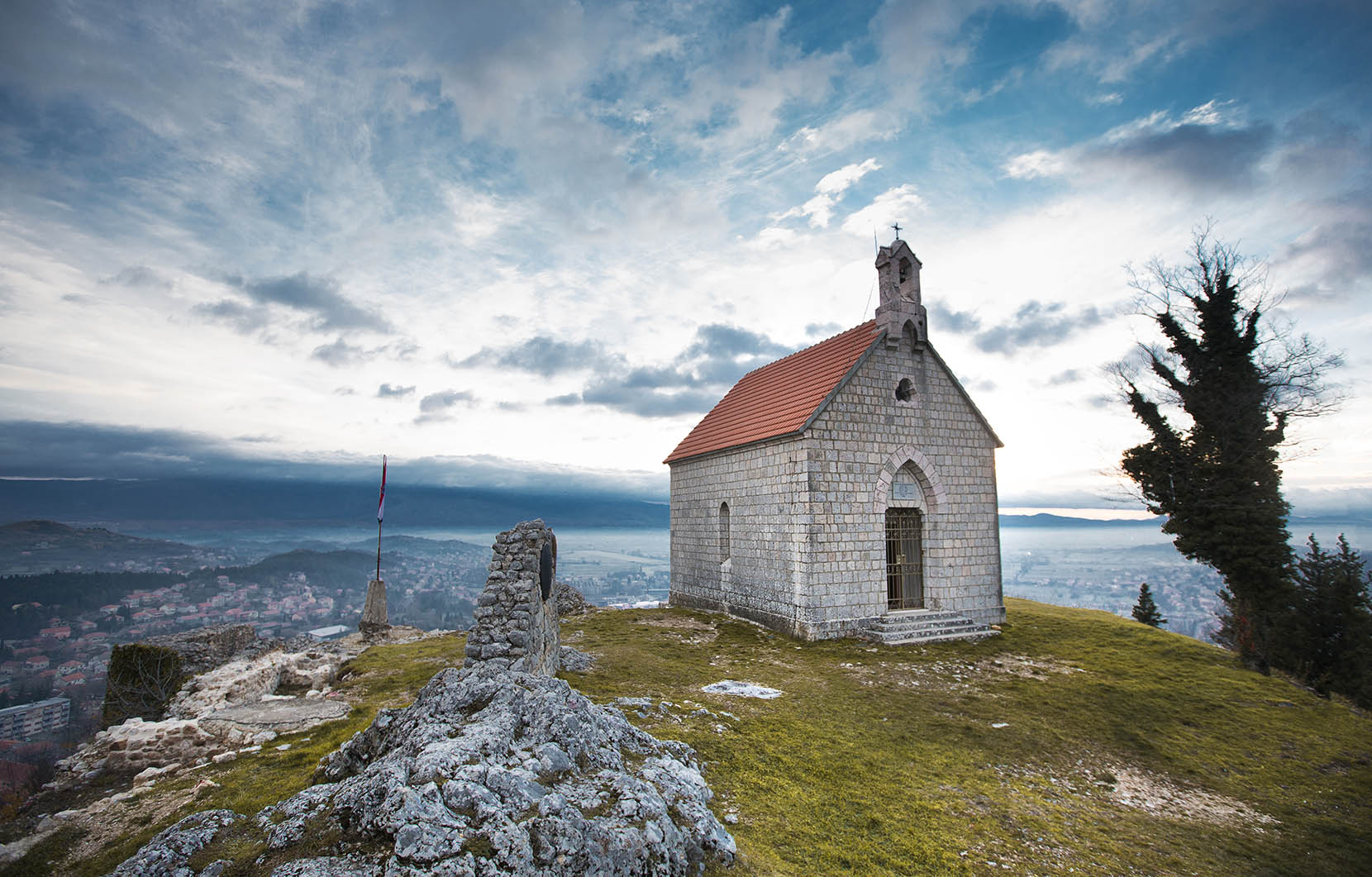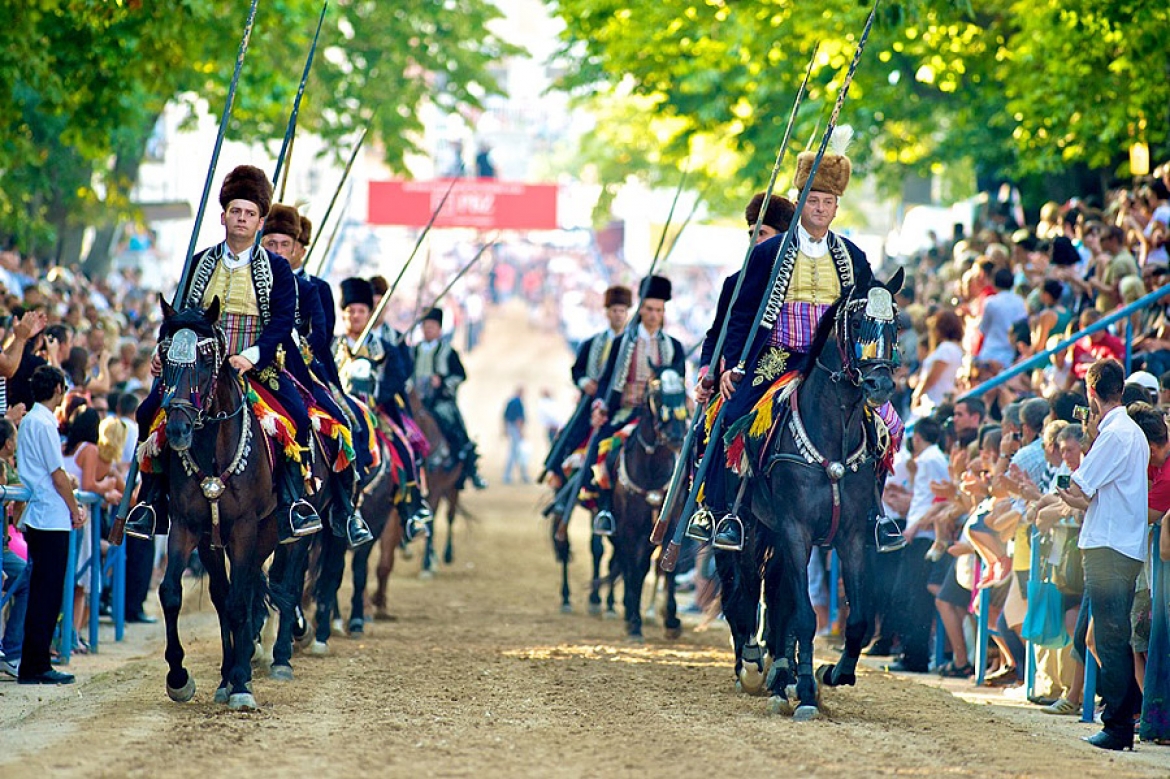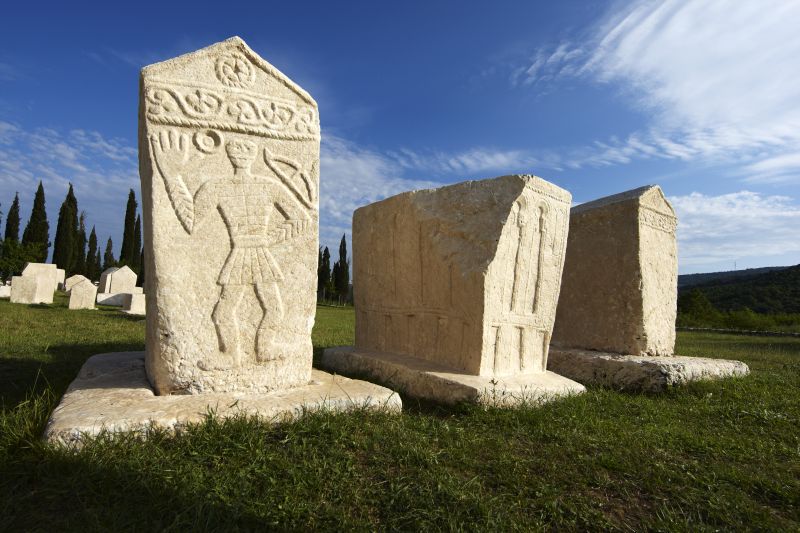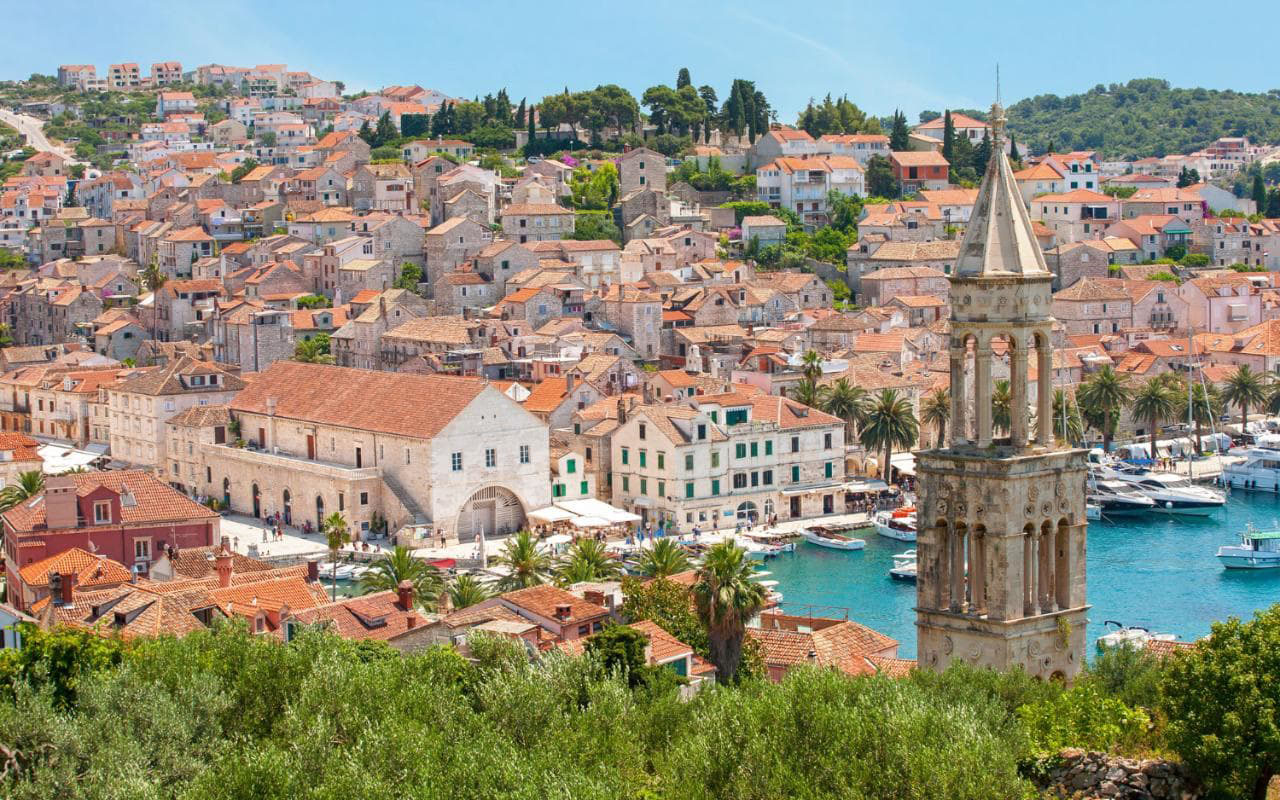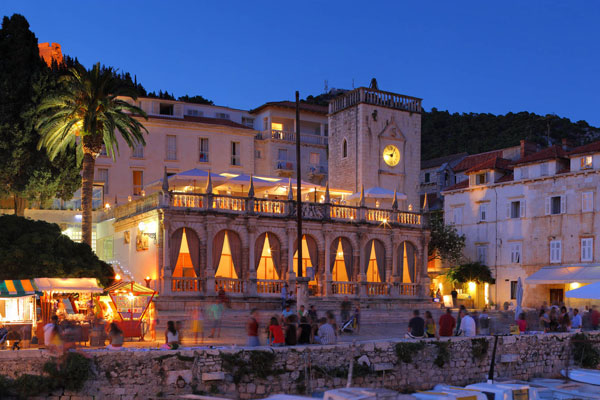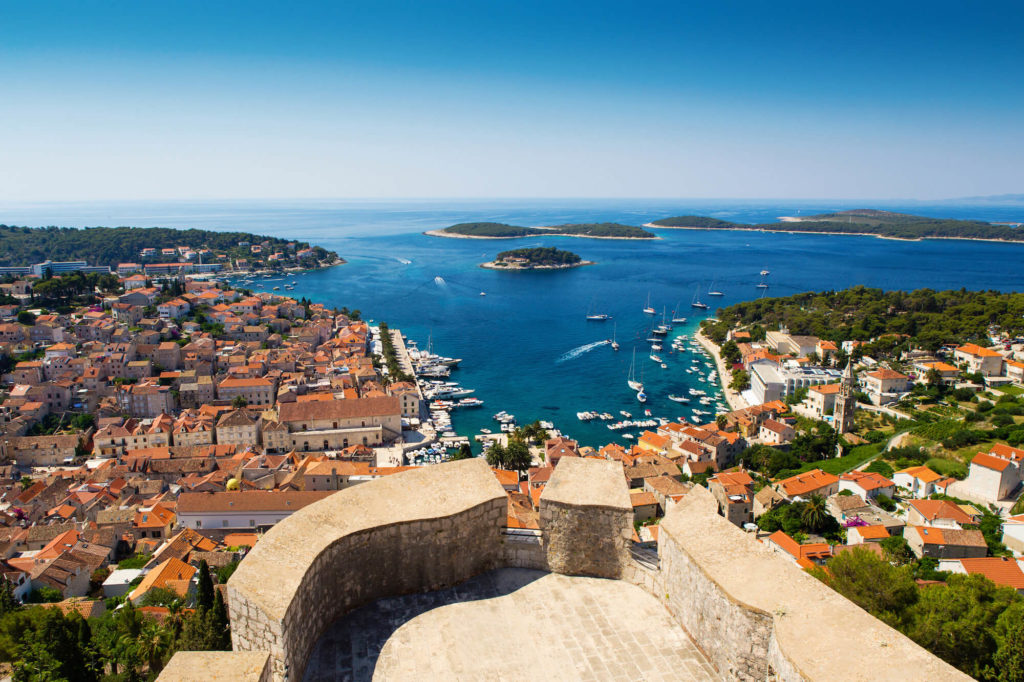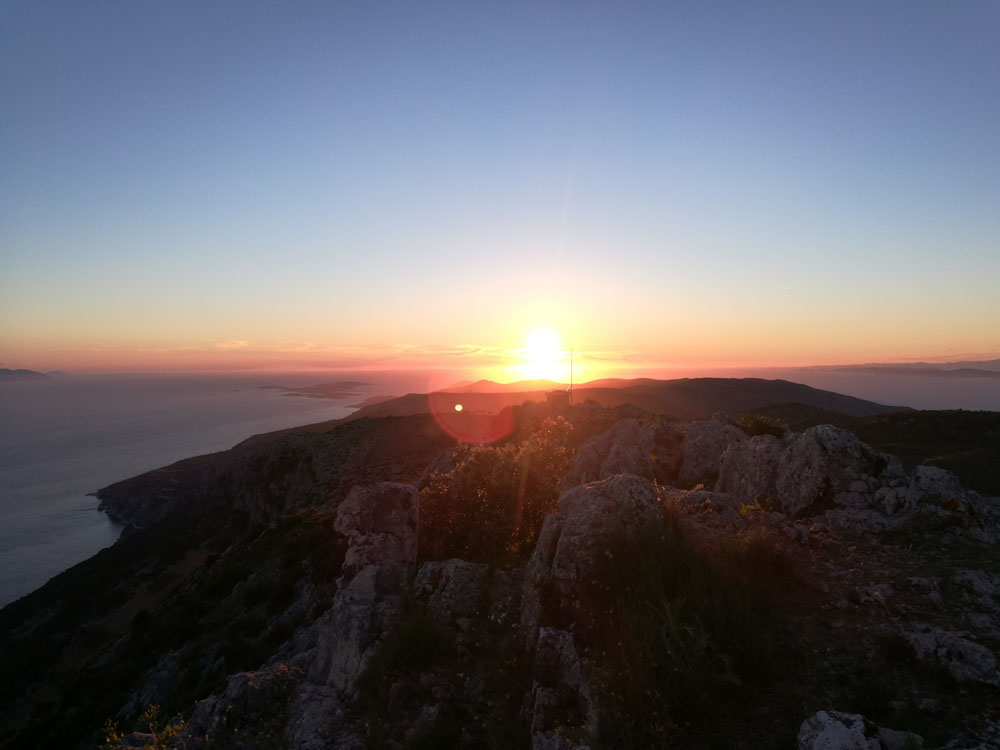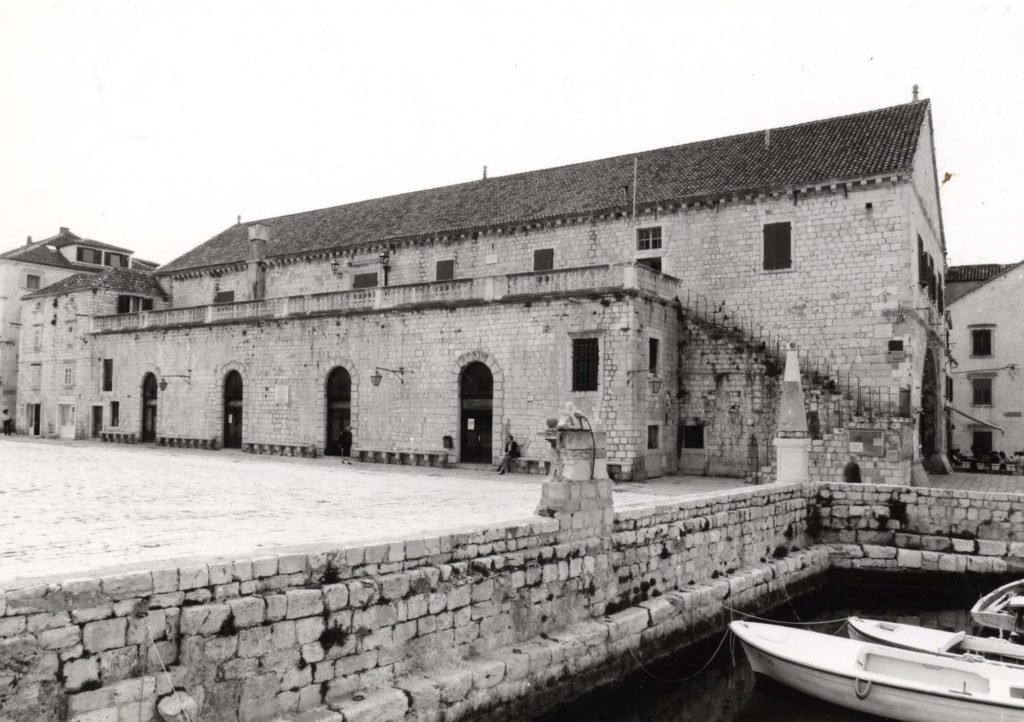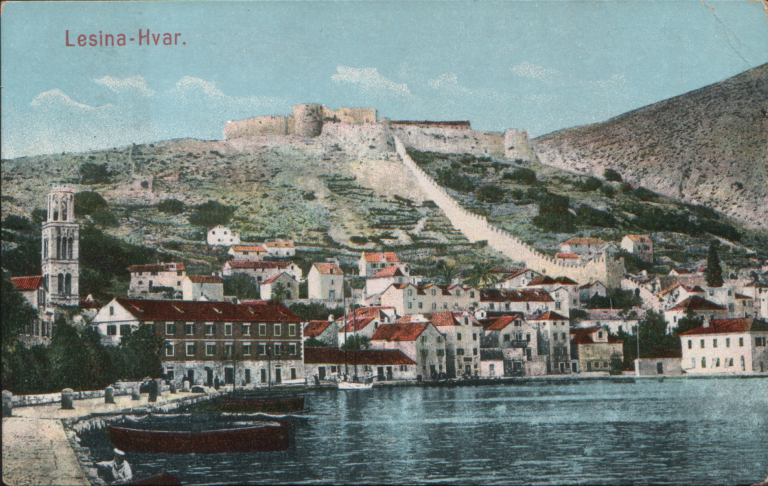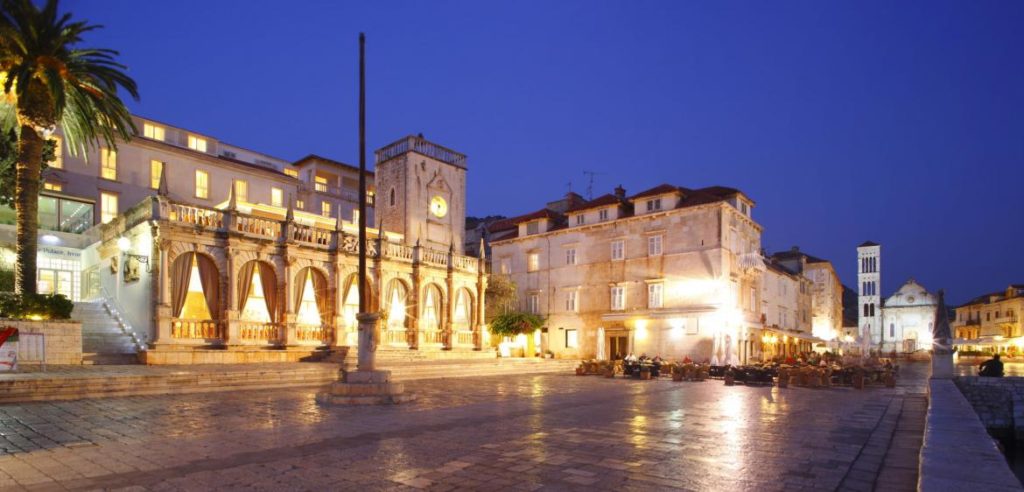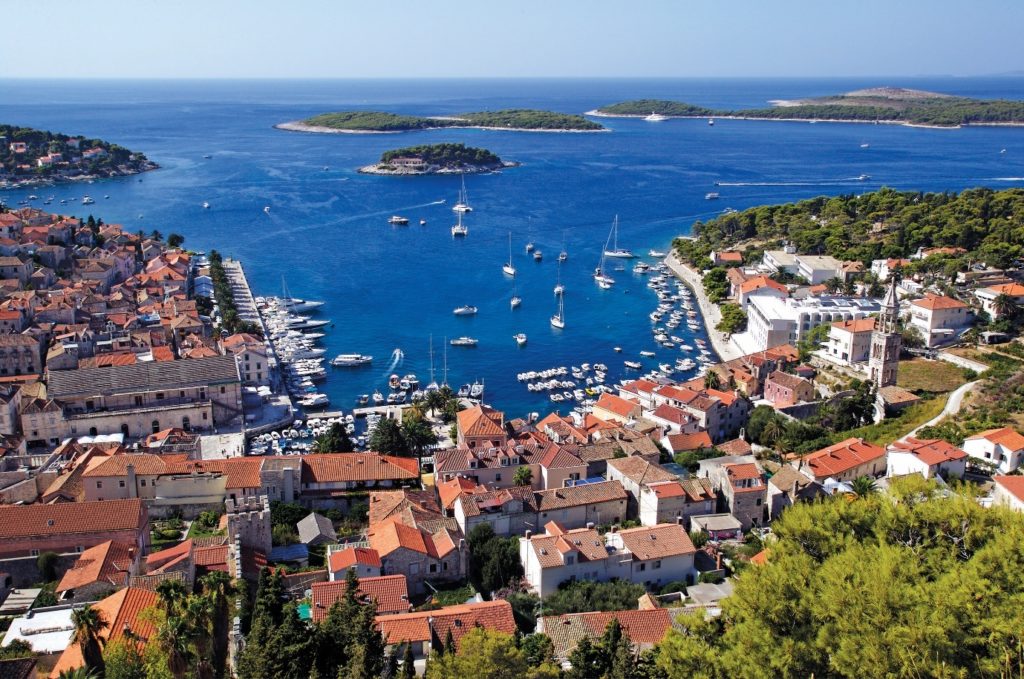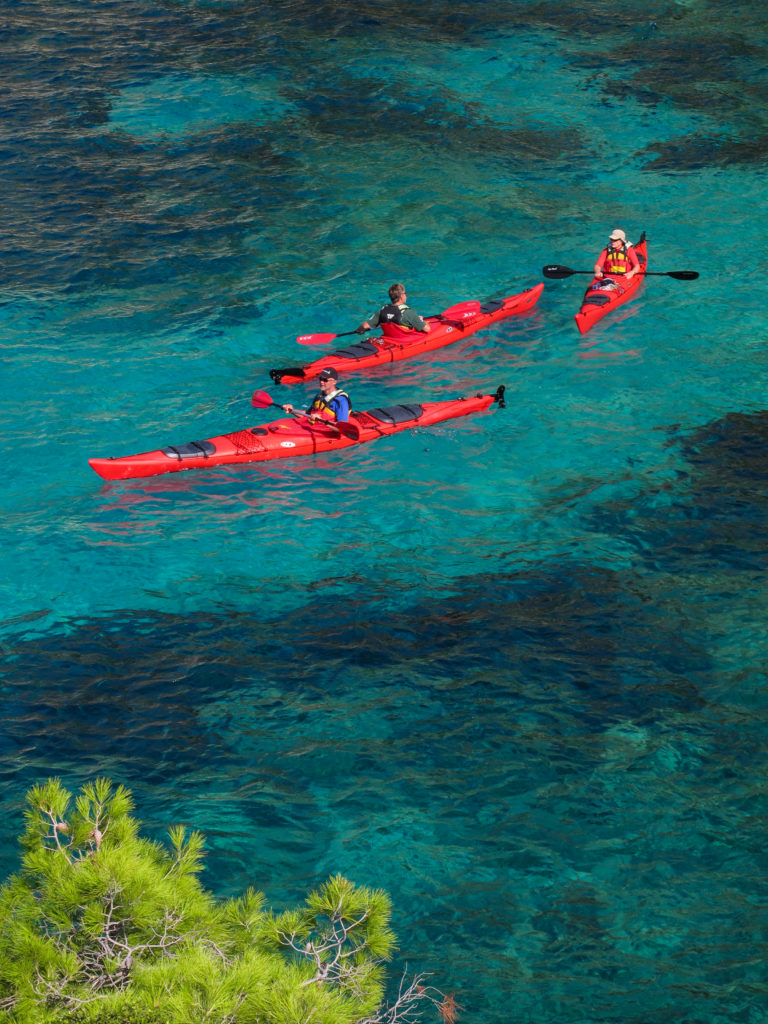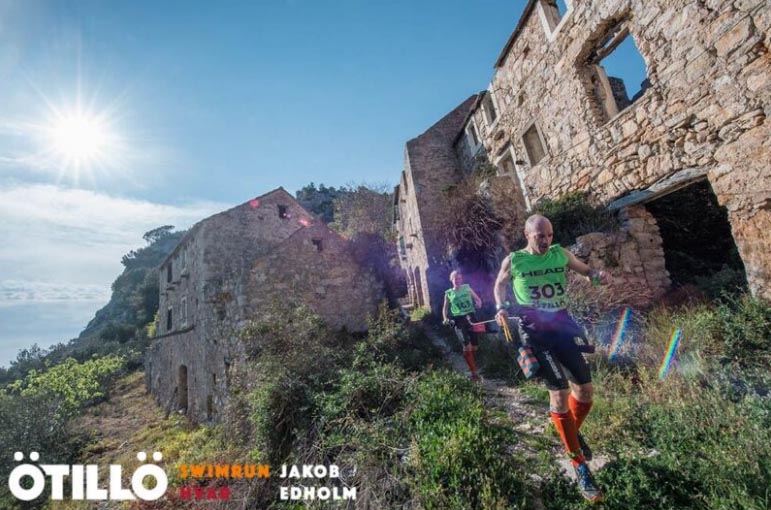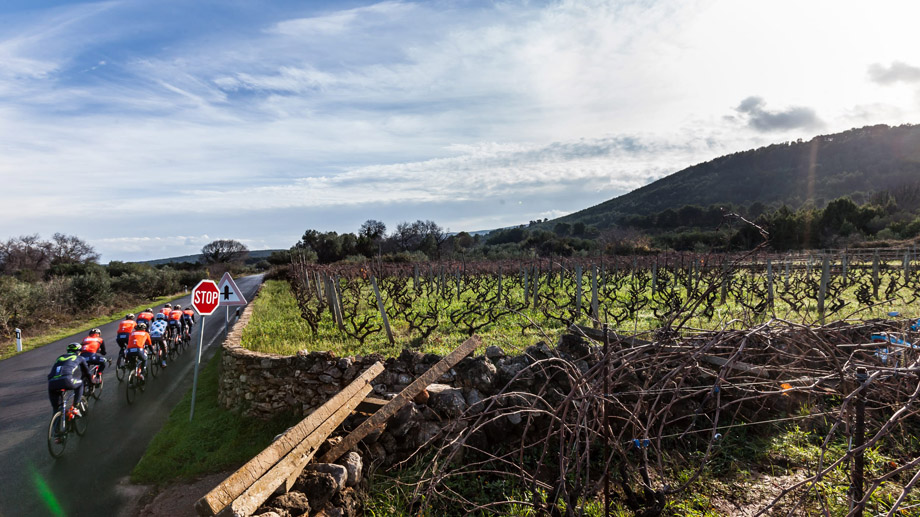Museums and galleries of Cetina region
There are so many reasons to love, even adore the Cetina region! For some it is Our Great Lady festivity in Sinj, while others are enchanted with miraculous Alka, visited by more and more people every summer.
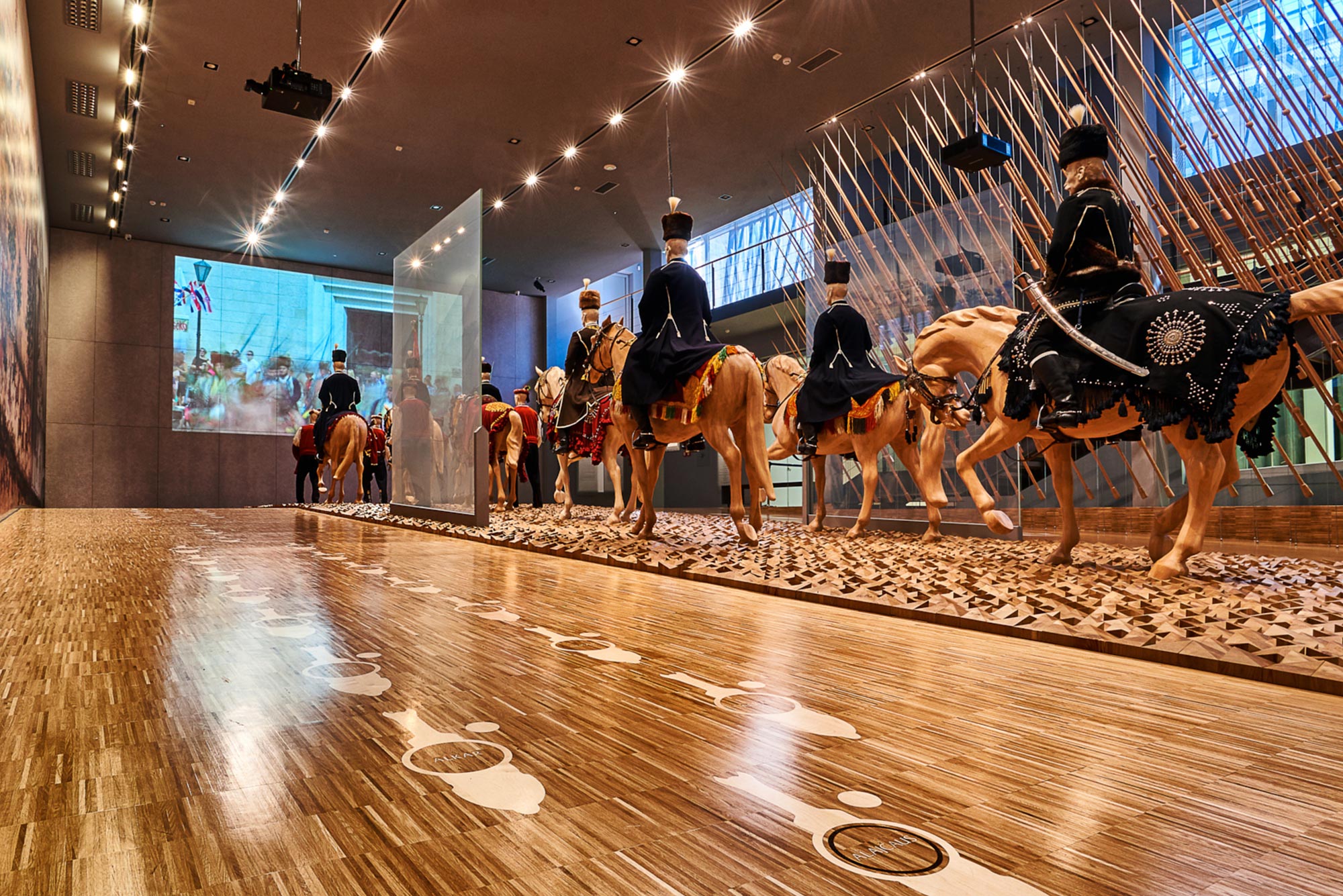
Gourmet's main reason could be Sinj's arambašići simmering in a pot with delicious bacon or tasty frog legs grilled in idyllic ambience of mystique and intriguing Trilj; or even hot delicious doughnuts from Vrlika. Those of more adventurous spirit may be drawn to this region by Cetina's rapids and its amazing blue eye over which you can practice adrenaline stunts to impress those less daring, with for example highline. Whatever it is you like about the Cetina region, we're sure you have good reason for it, but take our advice and sneak a peek into its museums – treasuries of history and culture. We're sure you'll love it even more!

CAN'T DO WITHOUT ALKA. To start this text in solemn and glorious way, it is enough to mention famous Alka, and its museum which you should look for in – Alka courtyard!
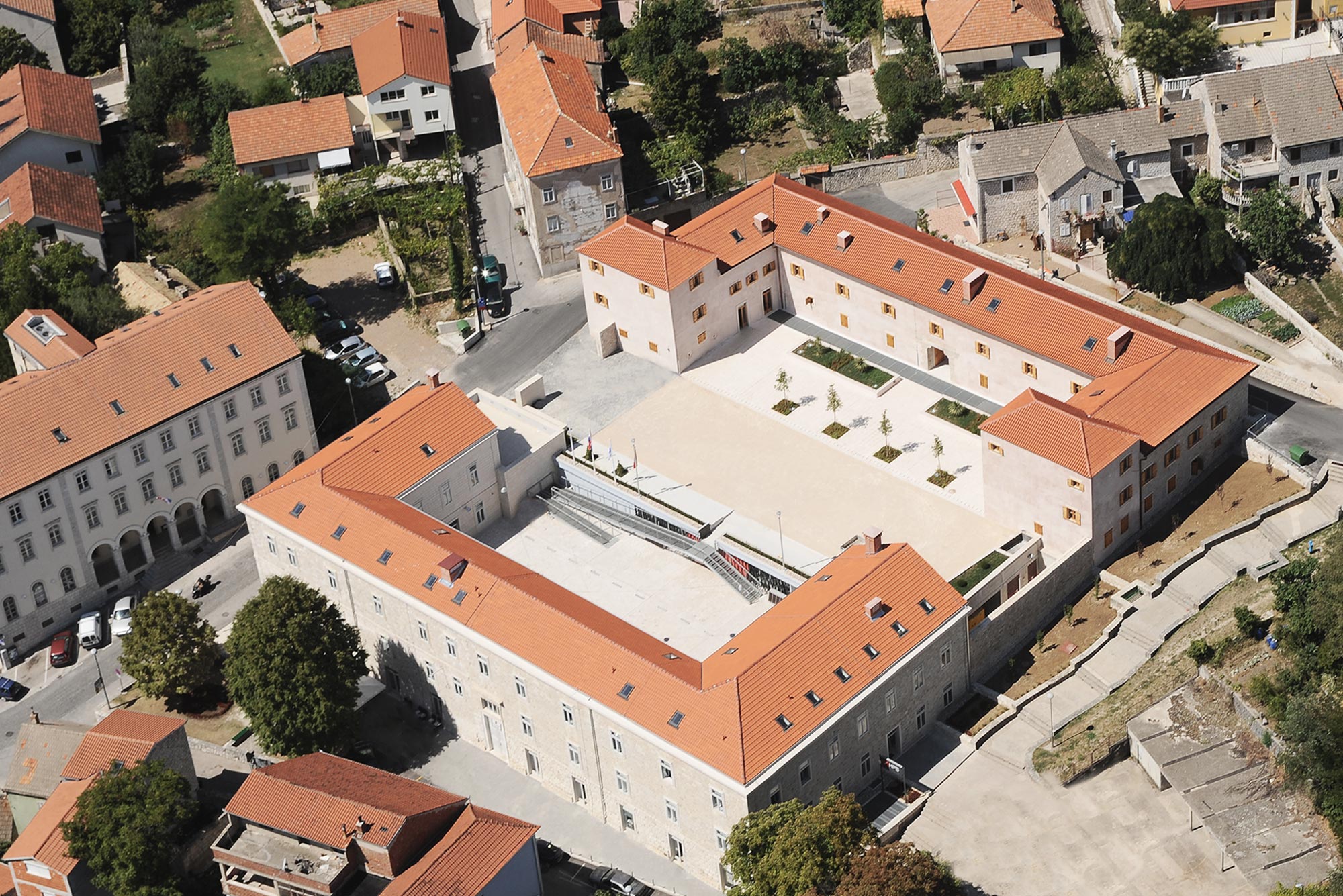
Alka courtyard with the Alka museum are located in one of rarely preserved Venetian kvartirs (barracks to accommodate the cavalry) in Dalmatia, so the very location is in its way sensational.

Museum, which gave this incredible knight’s game new presentational form, is an excellent blend of tradition and modern - do not miss to delve into a story of Alka told by the most contemporary equipment, thanks to which you can have a try at the game yourselves, fight with the Ottomans, see digitalizes archive documents and video materials of all winners from 1784 till today!

IN MONUMENT BUILDING PALACINA, which is a part of historical complex nearby Kamičak fort, another edifice worth visiting is located – the Museum of the Cetina region!

Culture enthusiasts will be enchanted with even 12 different museum collections, whose beauty is impossible to describe: archaeological, cultural-historical, ethnographical and natural history collections, as well as arms collection; orders, medals and plaques collection, collection of photographies and photographic equipment, document collection, poster collection, postcard collection.

There is even a collection which presents works of the 20th century Cetina region artists, so it is truly one comprehensive object, make sure not to miss it!
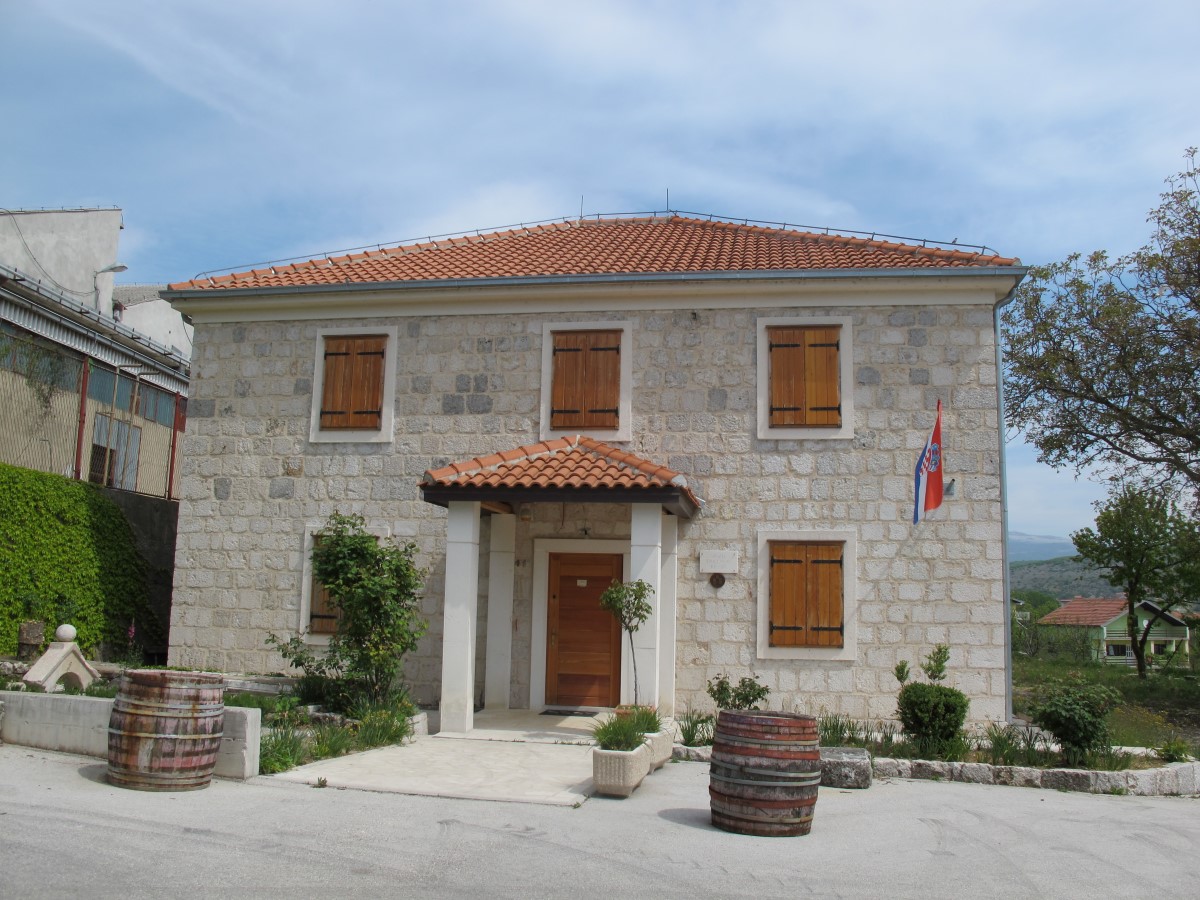
ONE OF THE YOUNGEST CROATIAN MUSEUMS is Trilj Region Museum, located since 1996 in adapted parish church. Main task of this museum is to present cultural heritage of Trilj through archaeological, ethnographical, cultural-historical and numismatic collection.
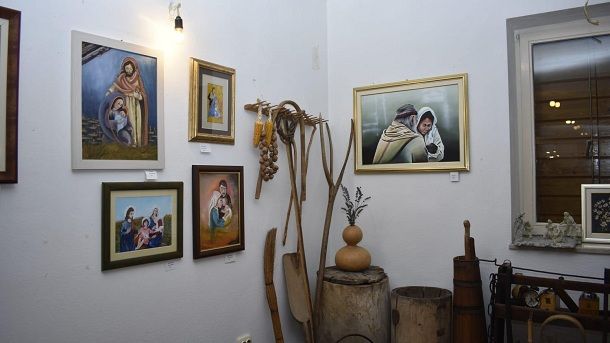
Visit this museum and see permanent collection ''Tilurij – Roman military camp'' and get a closer look of Roman legionary camp Tilurij in Gardun village near Trilj.
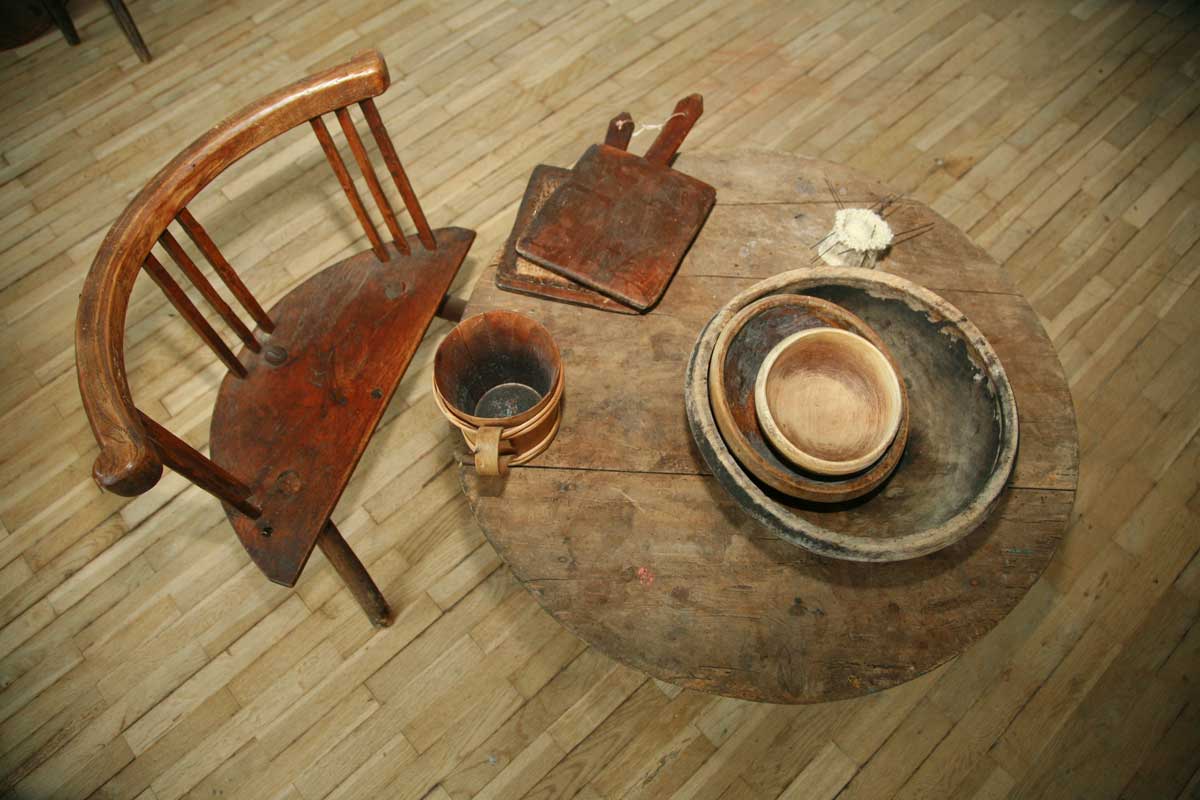
If you want to know more about traditional everyday life of Trilj region inhabitants from late 19th and early 20th century, a real treat will be its ethnographic collection!
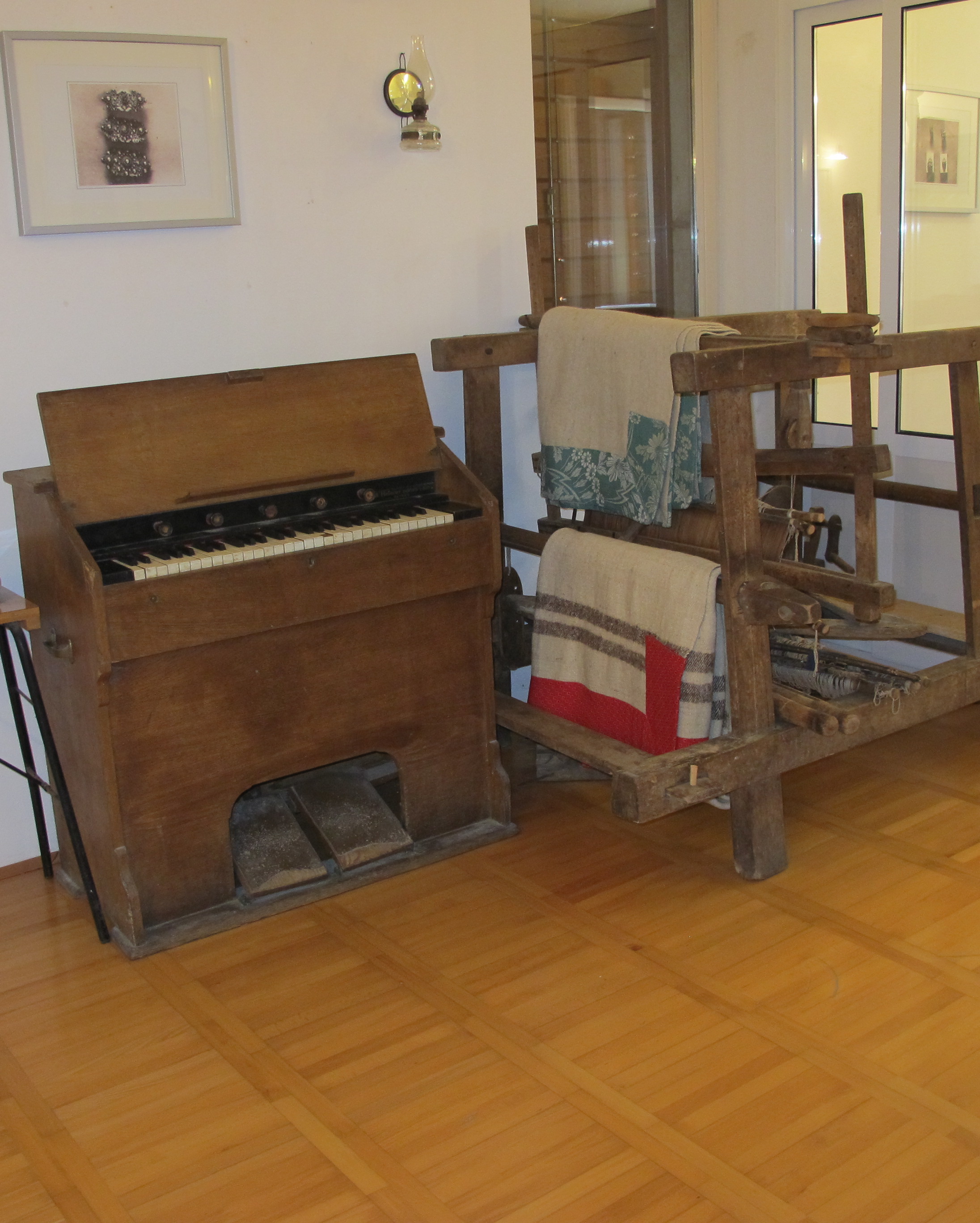
SIKIRICA GALLERY IN ITS FUNDUS HAS OVER 500 WORKS. Author Stipe Sikirica has always been especially close to Alka. The gallery is located in Alka courtyard. .

It bears the name of academic sculptor who donated his entire work to Sinj town. Sikirica is a sculptor of Sinj, the Cetina region and Alka. His public monuments are centres of town's public life.

Apart from public sculpture of the horse-rider on Alka's runway, Sikirica is also an author of a fountain On the Spring and doors of church of Our Miraculous Lady of Sinj.

GALIOTOVIĆ GALLERY IS A CULTURAL CENTRE OF Sinj people and their guests. It was opened in August 1999. Tt bears the name of its donator Iva Galiotović, who donated her life savings for its building. In the gallery there have been over 50 exhibitions so far. Great names of Croatian art had their exhibitions there, same as numerous Sinj artists. Galiotović gallery is also a place for classical music concerts, various workshops ad gatherings. It is located in three-story building on Alka runway.

ARCHAEOLOGICAL COLLECTION OF FRANCISCAN MONASTERY IS ONE OF THE OLDEST AND WORTHIEST IN CROATIA. THE REASON FOR ITS FOUNDING WAS A FACT THAT IN Sinj and its region many archaeological monuments were discovered. Objects in this collection do not come from systematic excavations but are mostly found by chance thanks to hardworking monks and people's willingness to preserve historical monuments. It is most famous for findings from archaeological site Aequuma near Sinj, today's village Čitluk.

DO NOT FORGET CULTURAL TREASURES – IN THE OPEN! Although museums are a true delicacy for culture enthusiasts, it would be a shame to visit the Cetina region and not to see other worthy monuments of cultural heritage that are like museums in the open!

Get inspired and look for sculpture Newlyweds, statue of St. Michael, a monument to the Cetina river, Trilj's Old bridge…or some incredible examples of sacral heritage, like impressive church of St. Spas near the Cetina spring – it is not only one of the most significant pre-Romanesque buildings in Croatia, but the one that takes a special place in European pre-Romanesque period!
Want to find out more? Visit: www.cetinska-krajina.hr
The project “Sinj u sridu” was co-financed by the European Union from the European Regional Development Fund and the Operational Program Competitiveness and Cohesion.
The content of this article is responsibility of the RERA public institution for the coordination and development of Split-Dalmatia County, and doesn’t reflects the position of the European Union and / or the Managing Authority.

Photo: TB Trilj, TB Sinj, TB Vrlika, Adventure Dalmatia
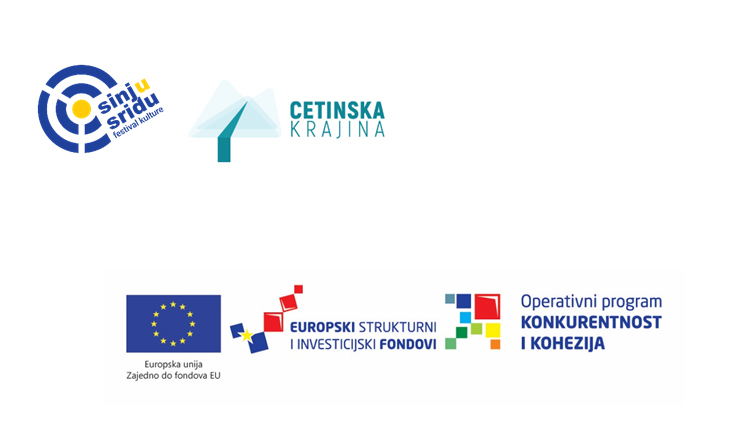
The newly-renovated Palace Elisabeth Hotel on Hvar - the first five-star hotel on the island - officially opens
The history of the oldest Hvar hotel and Empress Sisi were the
inspiration, motive and inspiration behind the hotel's grand opening. The hotel
has been rebuilt and redesigned with a new face and raised the quality scale
that guests expect when on Hvar.
The opening ceremony of the newly renovated Palace Elisabeth
Hotel was held on Hvar on Saturday, September the 21st, 2019.
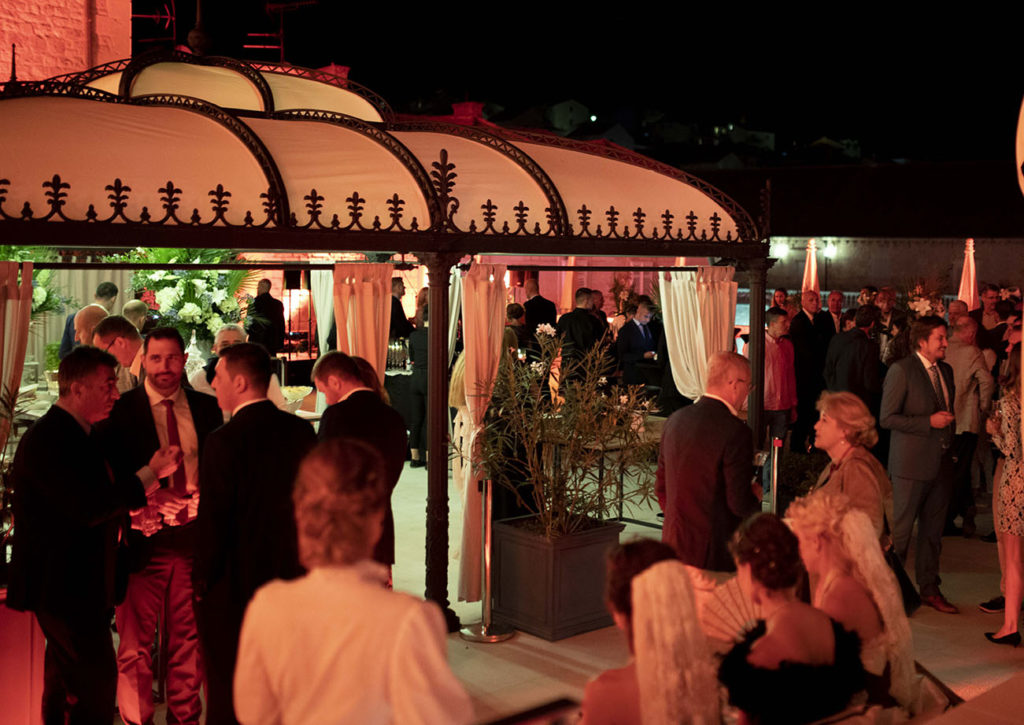
The first 5 star hotel
on Hvar
As one of the most beautiful buildings in this area, in
addition to the city Loggia, the Palace Elisabeth Hotel is considered one of
the symbols of the city of Hvar. It consists of 45 luxury rooms and suites of a
larger size, an indoor pool, a luxury spa and two outdoor terraces.

The hotel exudes elegance and promotes all the best of the
city, it has always been a favourite meeting place of Hvar locals and guests.
Therefore, a visit to the city of Hvar is not complete unless you have a cup of
coffee on the terrace of the Palace Elisabeth Hotel, because there are few
places where you can enjoy such a beautiful view of Hvar's historic centre, the
market, the waterfront, the Arsenal, the Pakleni islands and the city’s port.
The hotel was opened with the attention of the social elite and the world’s media
The opening ceremony was dealt with by Marie Vitek, the wife of
Radovan Vitek, the owner of Sunčani Hvar.
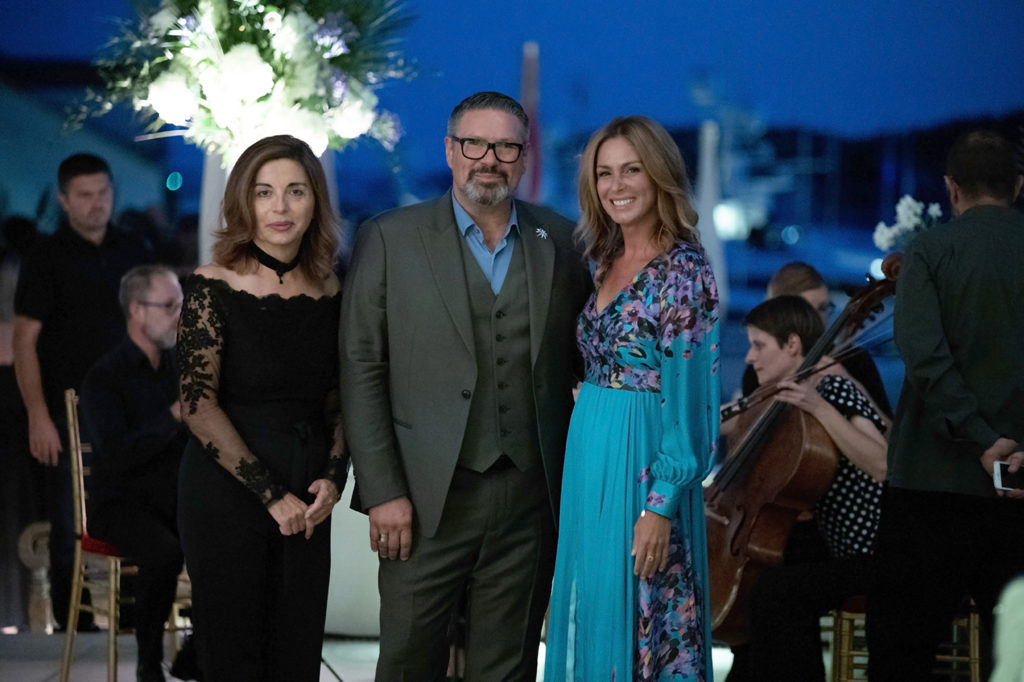
Speeches were delivered by Gordana Tomičić, CEO of Sunčani Hvar, Tourism Minister Gari Cappelli and Martin Nemeček, CEO of the CPI Group.
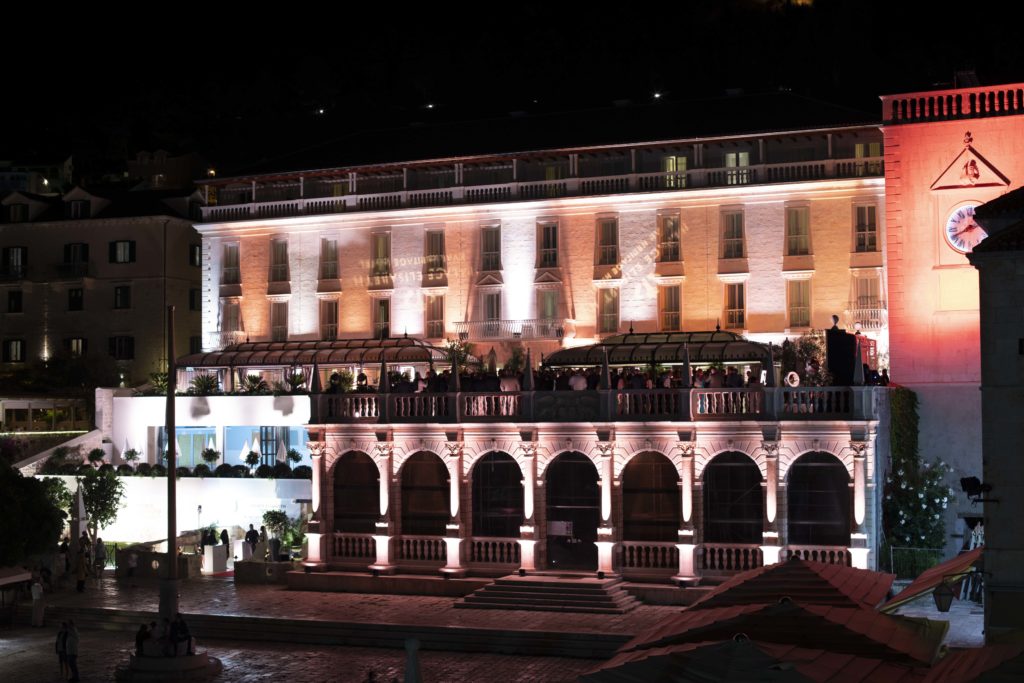
"The opening of the Palace Elisabeth Hotel further elevates the existing offer [of Hvar] to a higher level and at the same time contributes to the attractiveness of a destination that offers high quality holidays in all segments," said Management Board President Gordana Tomičić.
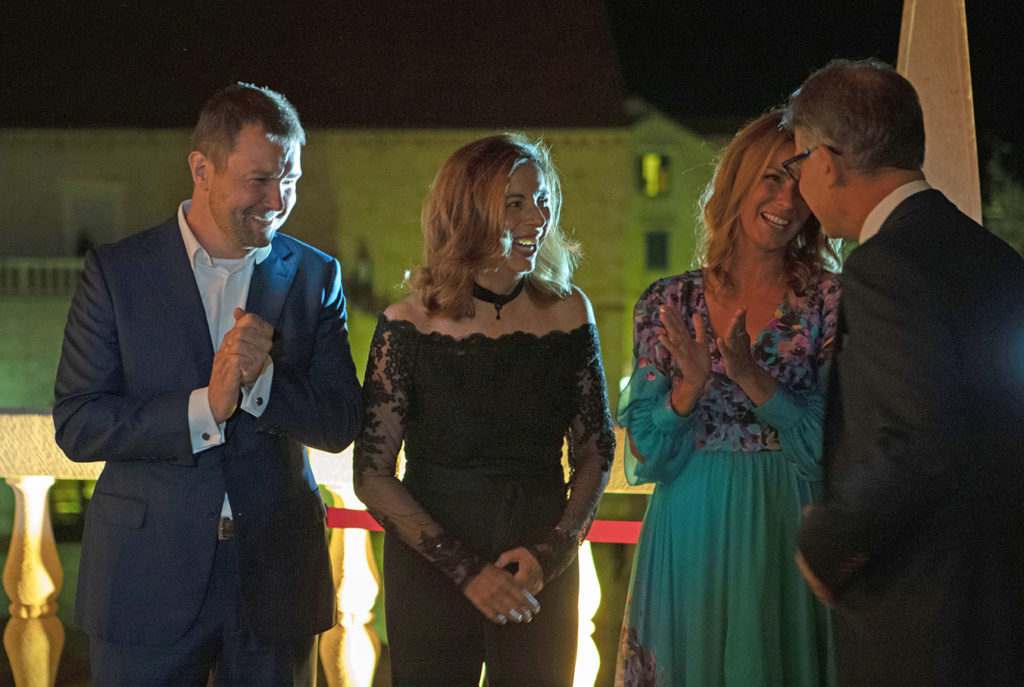
PThe history of the Palace Elisabeth Hotel dates back to the 13th century. In 1898, the hotel was rebuilt and named Spa Hotel Empress Elisabeth, after the Austrian Empress Sisi who was a generous sponsor of its construction.
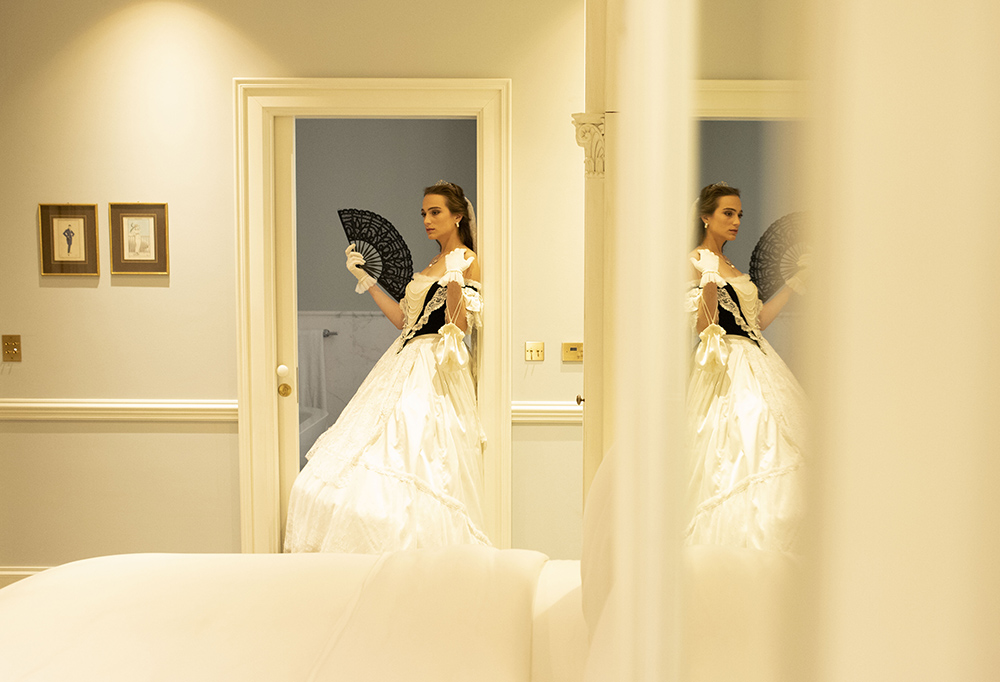
The history of this oldest Hvar hotel and the Empress Sisi were the inspiration, motive and inspiration of the opening ceremony of the hotel.
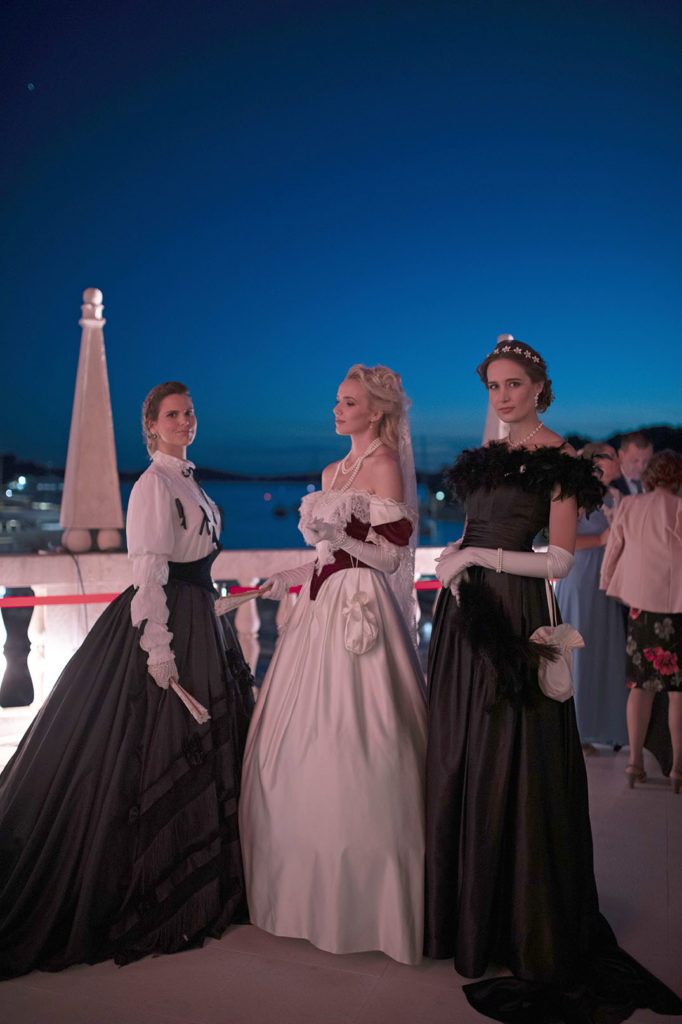
Thanks to an investment from the Sunčani Hvar tourist group, of HRK 100 million, Palace Elisabeth has become the first five-star hotel on the island, and a member of the elite hotel association of luxury hotels, ‘’The Leading Hotels of the World’’.
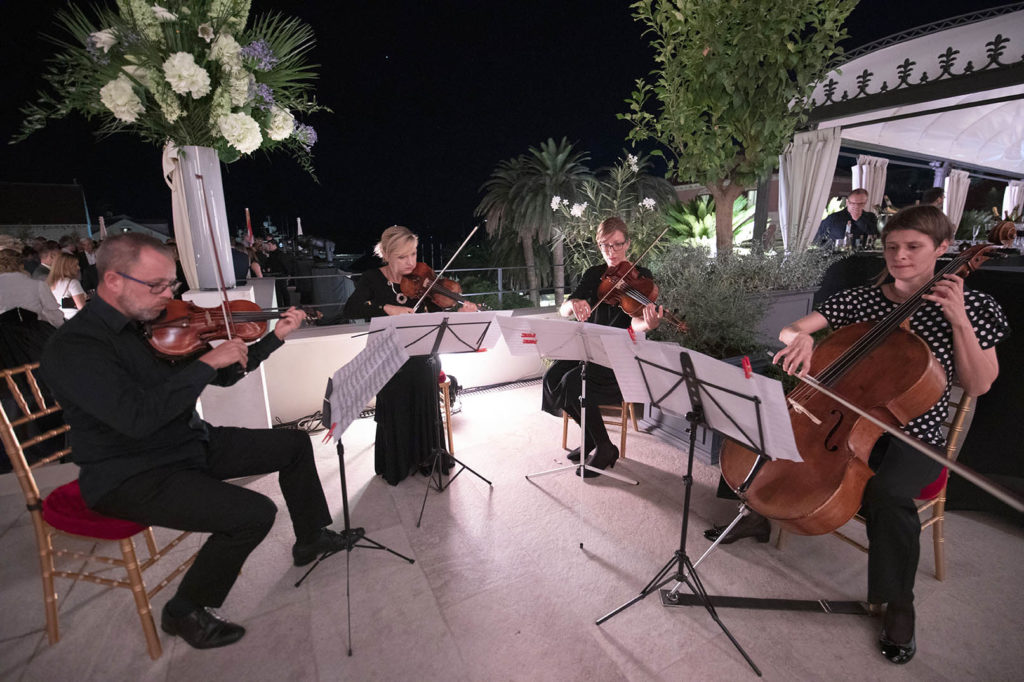
To be more specific, there was an investment of €300,000 per room, which is one of the largest investments in the Croatian hotel industry.
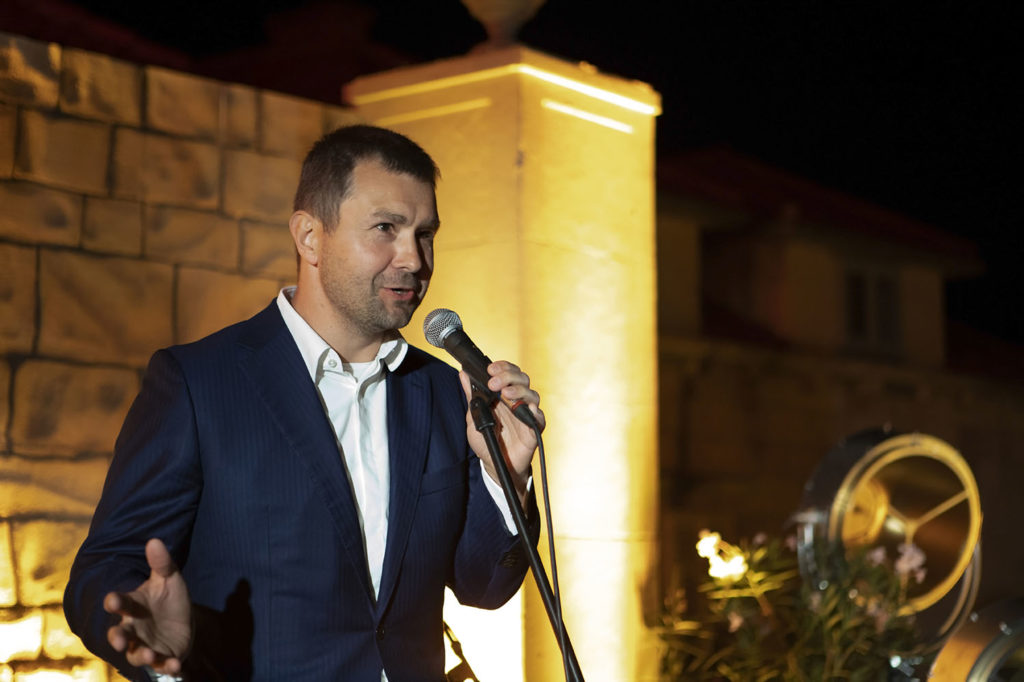
"Of all the facilities we have, the Palace Elisabeth Hotel is special. This was not an easy project to realise as it had to be handled with special care given its cultural heritage. We plan to invest in other Sunčani Hvar facilities,’’ said Martin Nemeček, the CEO of the CPI Group.
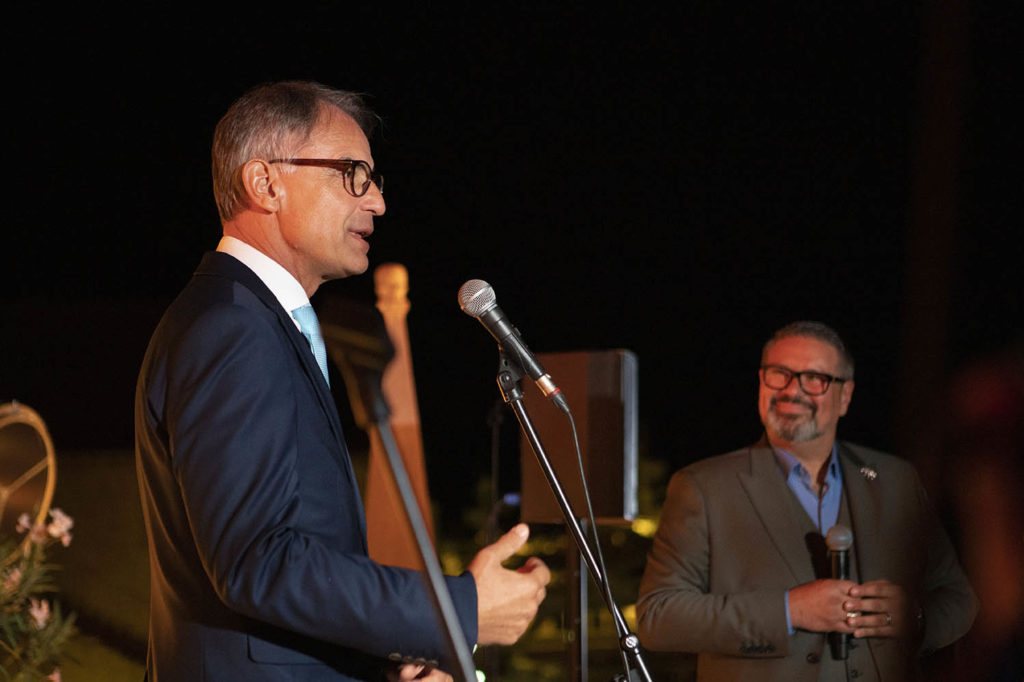
In addition to local journalists, many international journalists attended the opening ceremony. There were reporters from the New York Times, Robb Report, Vogue, National Geographic, Conde Nast Traveler and Architectural Digest, who enthusiastically followed the event.
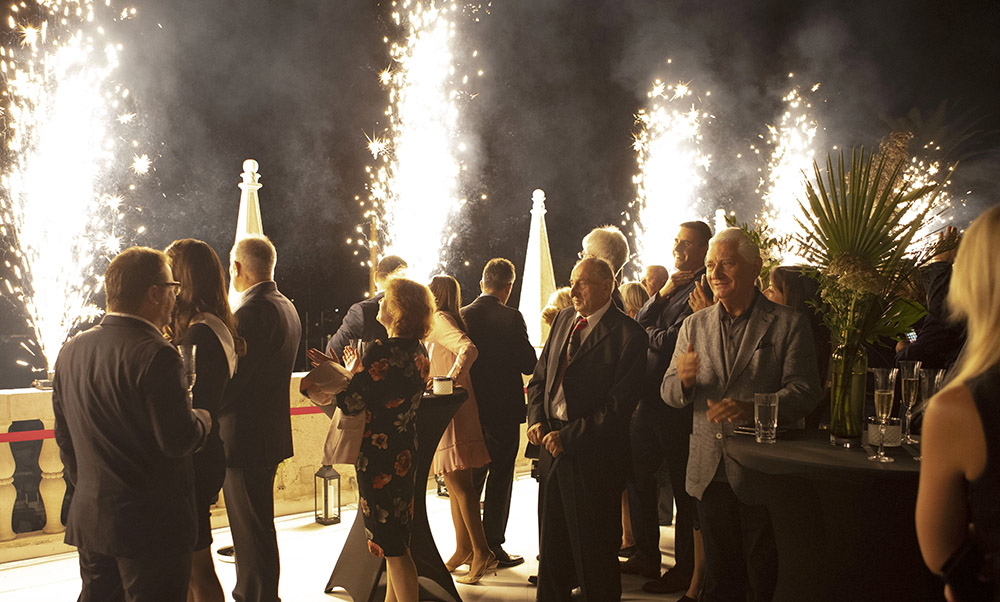
Along with a number of distinguished guests, the opening ceremony was attended by Minister of Tourism, Gari Cappelli, State Secretary of the Ministry of Tourism, Tonči Glavina, Director of the Tourist Board of Split-Dalmatia County, Joško Stella, and the Mayor of the City of Hvar, Rikardo Novak.
More: www.suncanihvar.com
Explore why Omiš Half Marathon is called the 'hidden gem' of the running season!
If your adventure portfolio lacks a really unique running treat, save this September for a visit to Omiš. The minute you step foot in this small town surrounded by steep mountain cliffs, you'll understand why the Omiš Half Marathon is called the 'hidden gem' of the running season.

Many of its first-time participants are indeed baffled by the fact that a flat marathon course of over 20 kilometres is set within such impressive mountains, virtually reaching all the way to the sea.

And the course is indeed located in one of the most amazing sceneries in this part of Europe - in the Cetina river canyon which you enter through a small road tunnel right from the old historical part of town, where the Omiš Half Marathon both starts and finishes. And behind the tunnel, kilometres of pure untouched nature await.

This year's event again includes two races - the half marathon with the start and finish line in the old town of Omiš and a recreational 6 kilometre race, both within the Cetina river canyon, which has been a protected landscape ever since 1963.
Running through the canyon you'll pass some of the best rafting, kayaking, trekking, hiking and free-climbing locations in Croatia. The impressive scenery has attracted some well-known runners over the years, and the names of our last year's winners are perhaps the best evidence of the race's quality - Alija Imamović (Olympic runner from Bosnia and Herzegovina) and Nikolina Šustić (ultra-marathon world champion).

But don't let these impressive names intimidate you - the Omiš Half Marathon is an event for professional and recreational runners alike, and this year's fourth annual race is expected to host the greatest number of competitors so far, both from Croatia and from abroad.

The Omiš Half Marathon has, in a relatively short time, grown into quite a popular event, which is partly due to the quality of its attractive race course, but also to the fantastic atmosphere created around the race in our small town, which as a well-known adventure destination welcomes adrenaline and nature lovers with great enthusiasm.

The Omiš Half Marathon is a race you'll remember for years, or one you won't remember at all - depending on how enthusiastically you give yourself over to the mentioned heartfelt welcome by the locals after passing the finish line :)

To make this a day of true family fun, in addition to the two main races, the young ones will also be able to participate in a kids' race and a toddlers' obstacle course race.

The Omiš Half Marathon is organised by the Town of Omiš Tourist Board, in cooperation with the sport association of the Omiš Swim marathon, under the sponsorship of the Town of Omiš, the Split-Dalmatia County and the Split-Dalmatia County Tourist Board.
Find more FB: www.facebook.com/omiskipolumaraton/

HALF MARATHON IN THE CETINA RIVER CANYON – OMIŠ 2019
Race date: 28 September 2019
Race area: Omis – the Cetina river canyon
TYPE OF RACE: road race
START/ FINISH: Poljički trg (Poljica Square), Omiš
RACE COURSE: 21,097 km (round 4*5,274 km) 6 km
RACE START:
Half Marathon - Poljički trg (Poljica Square) 10:00 am
Recreational 6 km race - Poljički trg (Poljica Square) 10:00 am
REFRESHMENT POINTS: Start/Finish, 5 (10) km stop.
CATEGORIES:
Half Marathon:
Female: FU22, FS, F35, F40, F45, F50, F55 +
Male: MU22, MS, M35, M40, M45, M50, M55, M60, M65, M70 +
6 km race: Female, Male
RACE COURSE DESCRIPTION:
Half Marathon start:
Poljički trg/Poljica Square (turn left after crossing the bridge, 50m upriver) – 5,274 km upstream along the flat land course through the Cetina river canyon – turn around and head back to the start line – turn around – again back to the same location – the same course downstream to the finish line (the starting location).
6 km race start:
Poljički trg/Poljica Square (turn left after crossing the bridge, 50m upriver) – 3 km upstream along the flat land course through the Cetina river canyon – turn around and head back to the finish line (the starting location)
AWARDS
For the Half Marathon: Cash prizes for 1st-5th place in both categories (M+F)
Trophies for 1st – 3rd place in M/F overall ranking
Categories: medals 1st – 3rd place in both categories (M+F)
Sponsor gifts
Start packs
For the 6 km race:
Trophies for 1st – 3rd place in M/F overall ranking
Start packs
Cash prizes:
HALF MARATHON
Female 1st
1 500,00 kn
Male st
1 500,00 kn
All half marathon and 6K race participants will
receive a finisher medal, along with lunch.
T-shirts are guaranteed for the first 200 registered participants.
ENTRY FEES:
Half Marathon:
| by 26 September 2019 | 100,00 kn | |
|
after 27 September and at the start line |
150,00 kn | |
| 6 km | ||
| by 26 September 2019 | 30,00 kn | |
|
after 27 September and at the start line |
50,00 kn |
APPLICATIONS:
Registrations are possible
under www.stotinka.hr (https://stotinka.hr/eng/event/897)
and race entries are accepted at the start line from 8 – 9 AM on the day of the
race.
IMPORTANT INFO:
The race is limited to 2:30 hours; Participants with less than 10 km within a 1h 10min time frame, as well as those with less than 15 km within a 1h 45min time frame will be disqualified
The winners will be announced at 1.00 pm
Each participant runs at his/her own risk
More information is available under www.visitomis.hr
Facebook

More: www.dalmatia.hr
Photo: www.dalmatia.hr, visitomis.hr, archive of tourist boards of Split - Dalmatia county

Visit Omiš – a town of pirates!
They went any length even against the Pope, their fast boats were a thorn in Venetian's side, and not one ship could pass without paying them fee

Not much is needed for happiness, a saying familiar to the owner of a house where even today stays a writing Thank you Lord for my presence on this world. Locals especially like it, tourists find it attractive, so the house got a name The House of a Happy Man.

Relaxed lifestyle, perfect climate and beautiful landscape shaped by the Cetina canyon, the sea and Dinara mountain make Omiš people truly fortunate. Their town is not just another attractive holiday destination on the Adriatic, but also a place of rich cultural heritage.

The Nemesis of
Split and Dubrovnik
Historians would probably
start from the beginning – two thousand years ago when Cetina mouth was being
inhabited. But, we'll skip all those centuries of long and turbulent past and
take you to 12th and 13th century, in time of Kačić princes who had the most
famous pirate fleet on the Adriatic. Striking everyone with fear, Omiš's
pirates charged free sailing to everyone who passed their town.
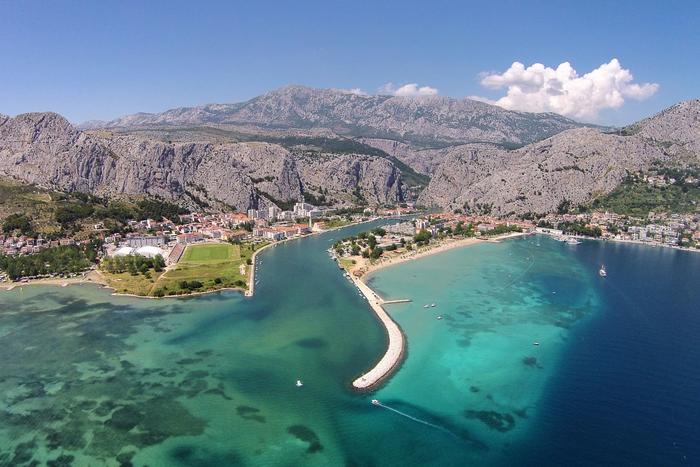
For almost two centuries they ruled this part of the Adriatic while attacking merchant ships of great maritime cities of Split, Dubrovnik, Kotor and Venice. They didn't even flinch before Pope's galleys sailing to Palestine. It was pope Honorius III who lost the First Crusade against Omiš people in 1221. 60 years later, in the Second Crusade, fought by Venetians on behalf of the Pope, Omiš pirates weren't so lucky. Not long after the lost battle Kačičs retrieved from the town, defeated and weakened, but not giving up piracy for a long time.

It resisted the battles, but not a thunderstroke
As a permanent reminder of famous history above the old town stands fortress Mirabela– former pirate lookout from which entire Brač channel is visible, ensuring that no ship passes unspotted. Thanks to Byzantine coin found in its foundations its construction is dated back to the 13th century.
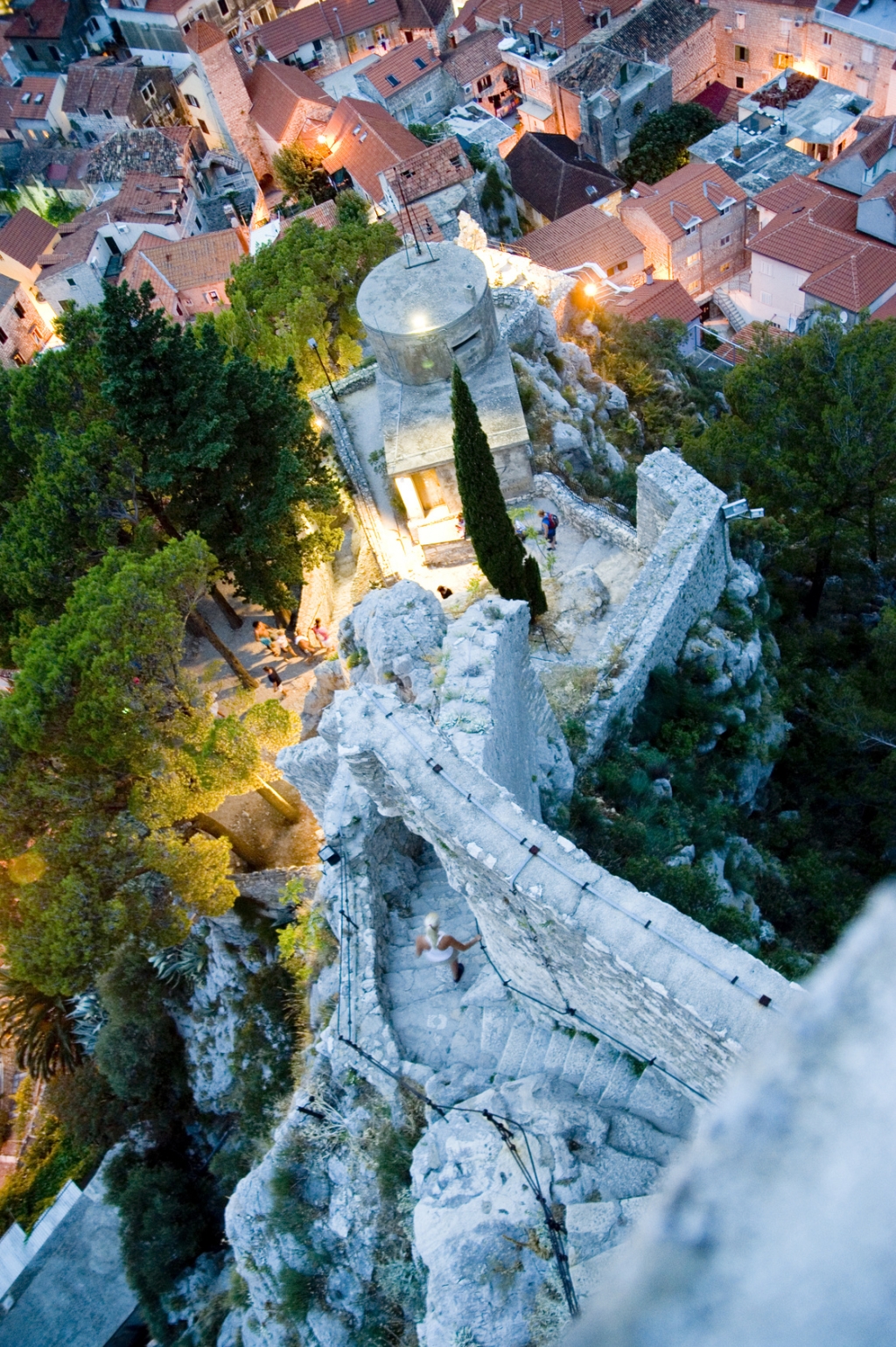
Those foundations resisted numerous battles and wars, but not a thunderstorm 30 years ago, when a thunder stroke at the top of the fortress and demolished it completely. Today it is restored into its original shape and is a favourite tourist site. It is most easily reached by steps that start at Omiš's largest church – St. Michael's.

The biggest summer
manifestation in Dalmatia
Although they've given up piracy centuries ago, Omiš
people still keep their sea agility, which is confirmed every 18 August. On
this day more than ten thousand visitors from all over the world come to Omiš
to enjoy in history revived and reconstruction of Pirate Battle between Omiš
people and Venetians. Apart from Omiš's pirates many historical groups take
part in this manifestation: Dubrovnik Trombunjeri, Klis Uskoks, Knight's
society Kumpanija from Blato on Korčula, Župski Gospari, Pirates from Župa
Dubrovačka and Cultural Society St. Juraj, Poljica.
More: www.dalmatia.hr
Photo: www.dalmatia.hr, croatia.hr, archive of tourist boards of Split – Dalmatia County

“DICA MORA” is an ecological and educational project designed by the City of Supetar
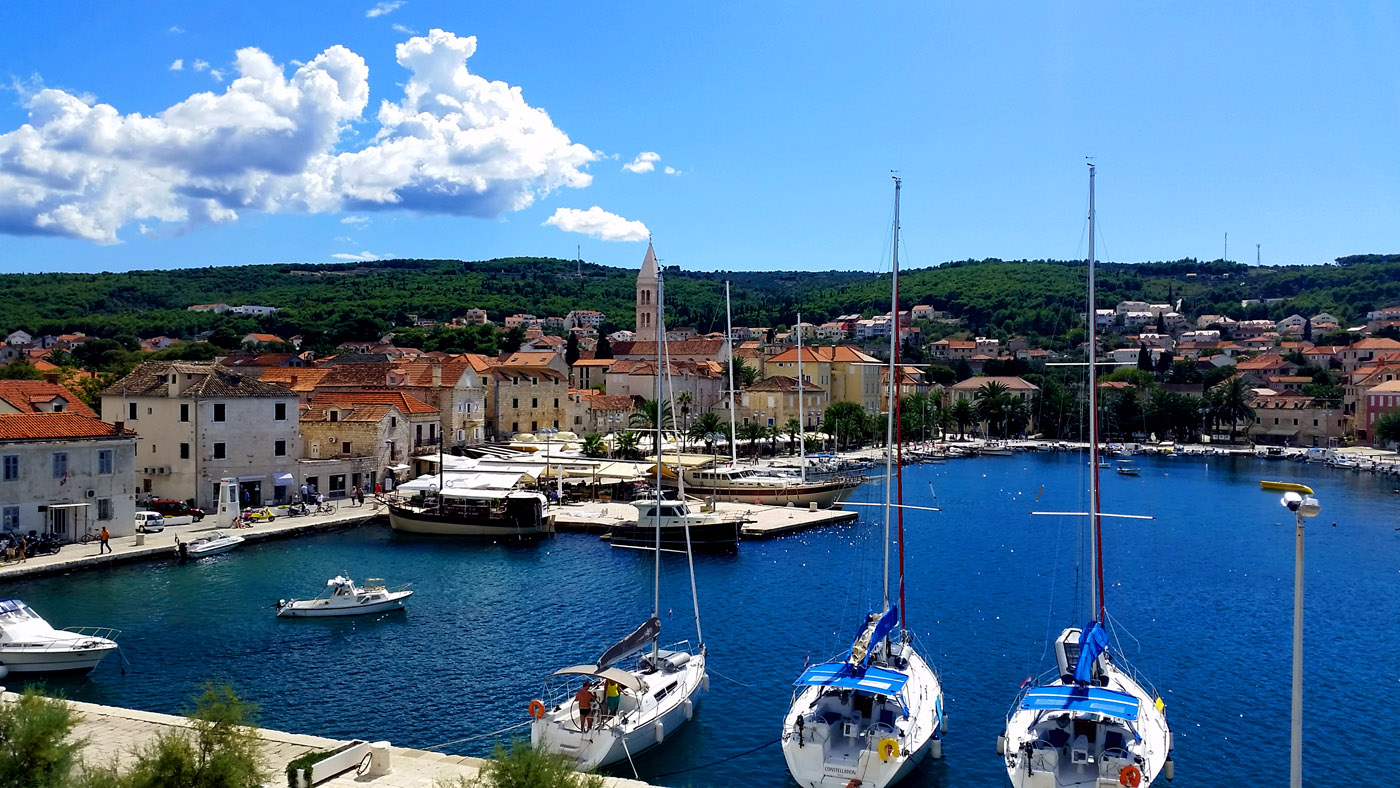
“DICA MORA” is the name of a joint ecological and educational project designed by the City of Supetar, the Tourist Board of the City of Supetar, the Municipal Company “City”, the Volunteer Fire Department of Supetar and the “Arbun” Sport Fishing Club, and which we have set as one of the most important orientations of our work in the future.
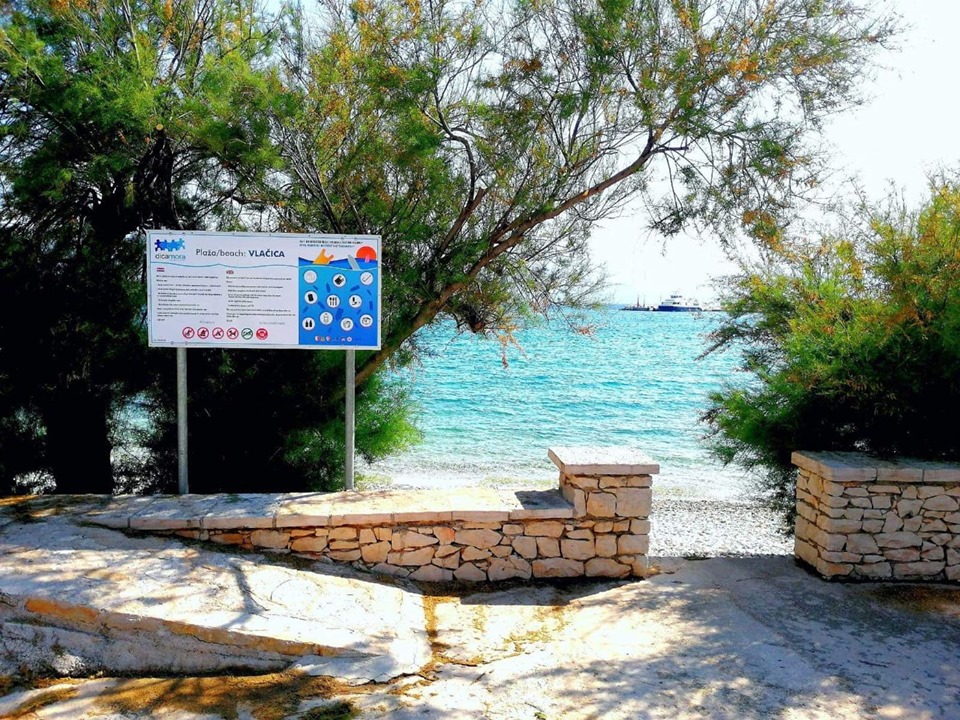
Tempted by the devastating fact that, globally speaking, our human environment, especially the sea, is polluted by waste to worrisome proportions and led by the old saying “think globally, act locally”, we have decided in the city of Supetar to do as much as we can to minimize pollution, and to talk about this immense problem continuously.

The project “DICA MORA” has following goals:
- raising the awareness of the local population on the importance of environmental protection, especially the sea and the coastal belt and saving the forest of fire, with special emphasis on children and young people
- continually informing tourists and visitors about the importance of preserving the sea and the coast of garbage
- continually informing tourists and visitors about the importance of forest fire protection and
- reduction of potential pollution of the sea and coastline and reduction of the risk of forest fires during the summer months.
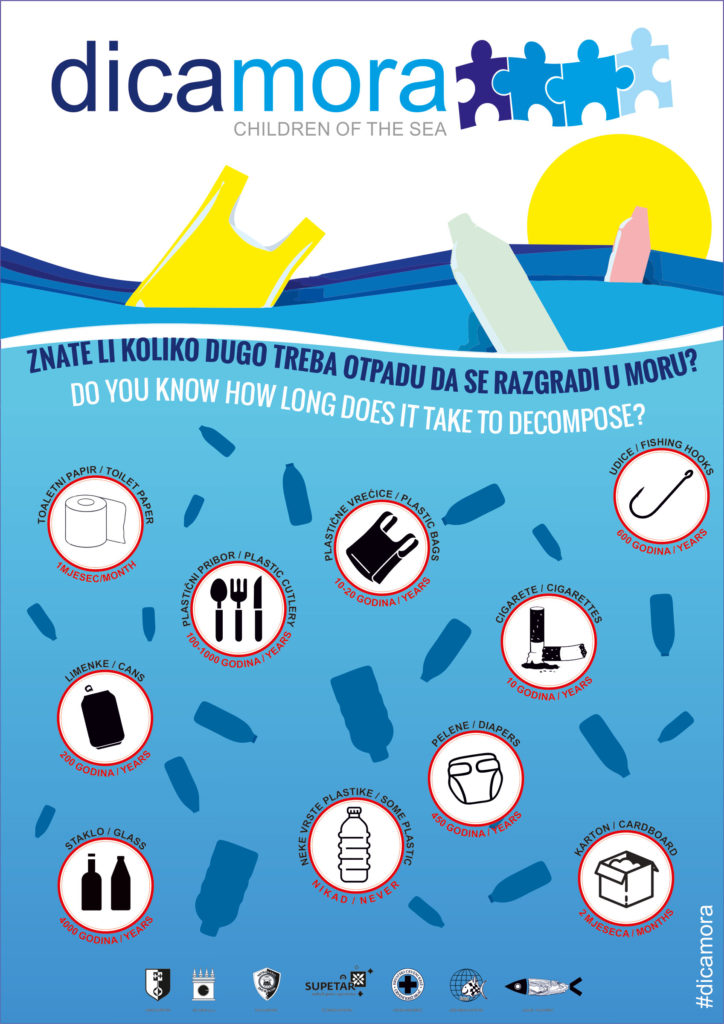
PROJEKT SE PROVODI U PRAKSI: PLANIRAN JE NIZ RADIONICA I AKCIJA NA TERENU
The project “DICA MORA” has an ecological and educational dimension, and both will be implemented through a series of educational workshops on the field and online. The project also has its own communal dimension. We will print the promotional material of the project, procure beach charters with rules of conduct and warnings about the importance of preserving the sea and coastline, we are going to purchase more beach ashtrays, order new beach dressers, which will also be promoters of the basic project goals.
In the future, through the project we plan to purchase sea defense dams for oil pollution and educate members of our DVD to act in such cases.
The planned value of the project is just over one million kunas, and the project itself will be carried out continuously through the work and activities of the institutions and associations included in the project. The first concrete results of the project will be visible to the public at the beginning of this tourist season.
For the end of this post, let’s ask ourselves whether we really need straws, plastic plates, plastic cups and plastic bags. Say “NO TO PLASTIC” today and we have already made a huge step forward!
Photo: Tz grada Supetra

Program for Days of Alka and The Assumption of Mary (Velika Gospa)
Days of Alka and Velika Gospa, an umbrella event that groups a multitude of colorful and attractive events in the summer months, has always been eagerly awaited by the people of Sinj and their welcome visitors.
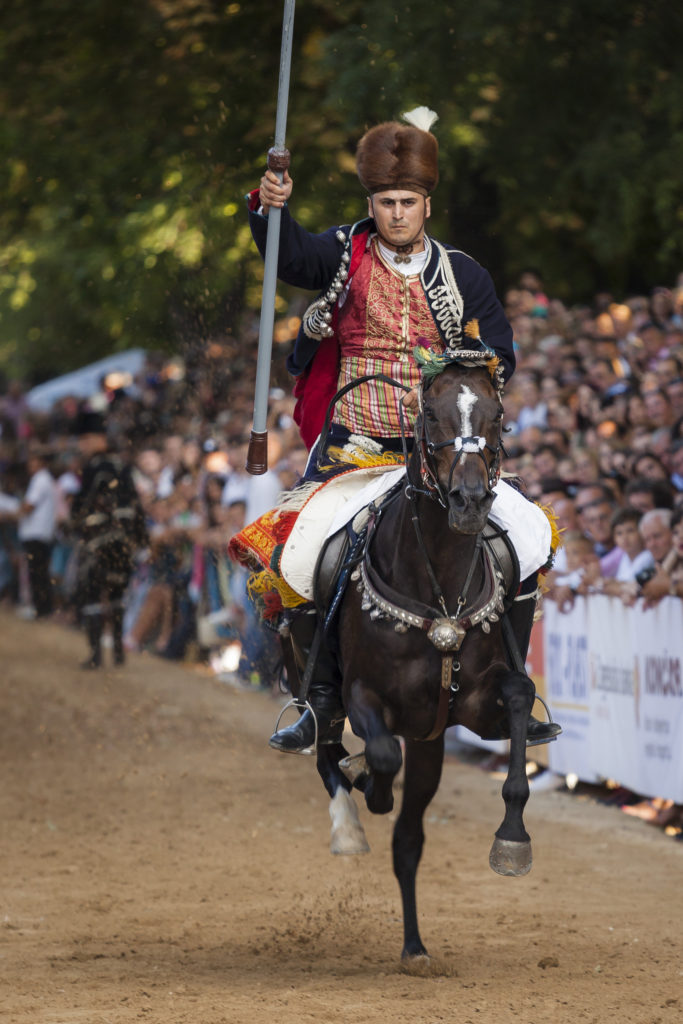
Organizers made sure that the program is rich in diversity and everyone can easily find something to their liking: from concerts of contemporary and classical music, exhibitions, rock and ethno festivals, creative workshops and sports tournaments to Alka ceremonies and church celebrations. Exceptionally designed events, combined with the unparalleled ambiance of Sinj, guarantee unforgettable summer nights in the city at the foot of Kamičak.

The celebrations begin on July 12th in the main city square, Piazza, with the Alka’s Bride play performed by the Sinj Amateur Theatre. A sacred concert will be held at the Church of Our Miraculous Lady of Sinj just before the official opening. Multi-award winning young musicians of the ensemble (Martin Krpan, violin, Dunja Čolić, oboe, Anna Ivanov, violin, Ivo Ilakovac, cello, Michael Buturić, organ) will present an attractive program suitable for the sacred space: sacral sonatas by the Baroque composers such as J.S. Bach, G.F. Händel and G.P. Telemann as well as seldom performed Mozart’s church sonatas. A special musical treat is J. Prajz’s modern composition, composed this year for this ensemble in particular.
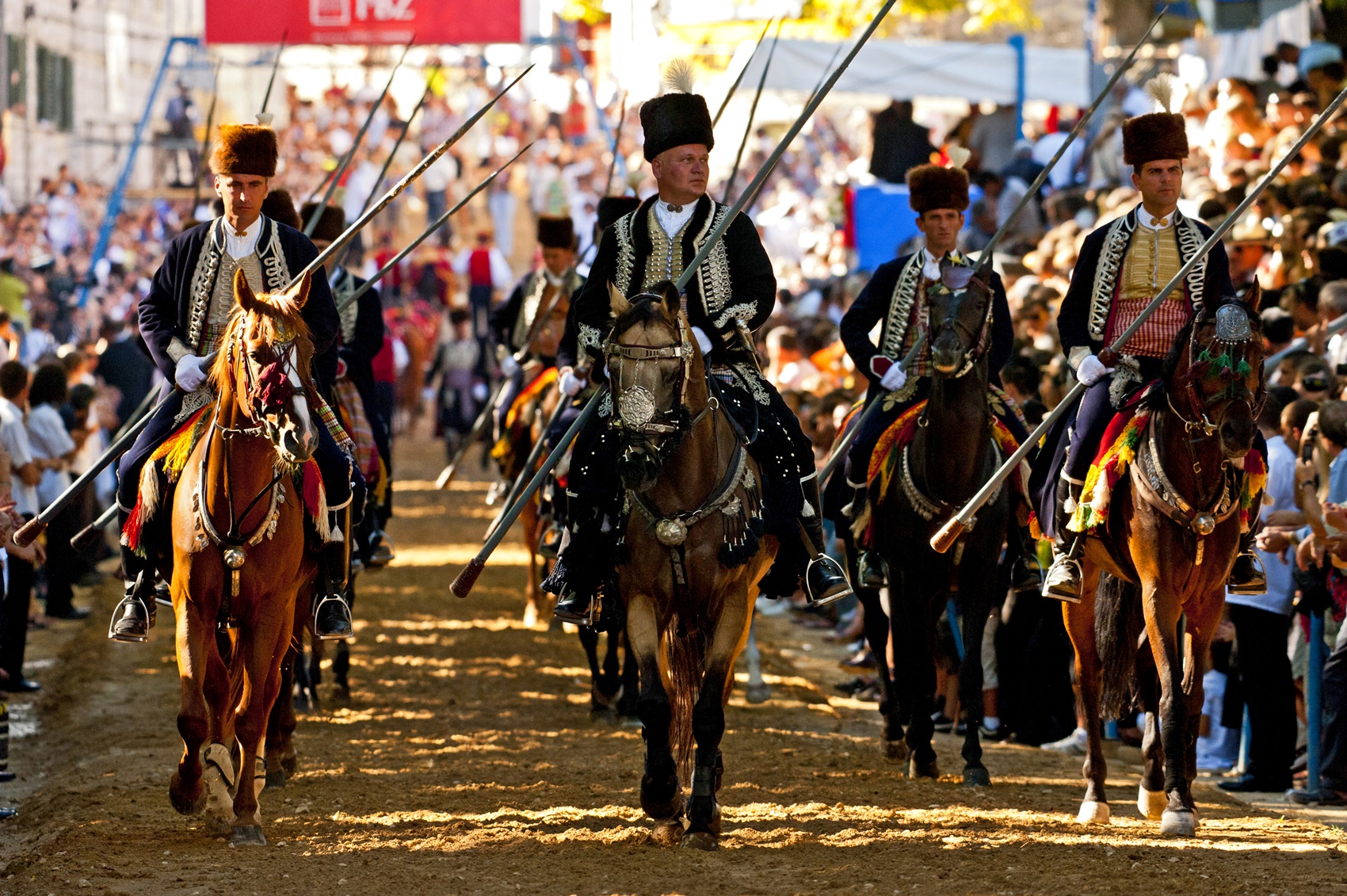
The traditional festival of the Marian spiritual songs titled Klapas to Our Lady Mary of Sinj, performed by klapas, will be held on August 1st in a similar meditative space, in the courtyard of the Monastery of Our Lady. Organized by the Sinj Tourist Board, the Music evenings at Kamičak Fort are an exceptional music event that has been breathing new life into this star-shaped fort that watches over the city of alkars. On August 17th, at 8 pm, the musical notes of the fantastic jazz music performed by renowned world performers - featuring Ratko Zjača - Stefano Bedetti and Nocturnal Four, will be scattered all over the ancient walls.
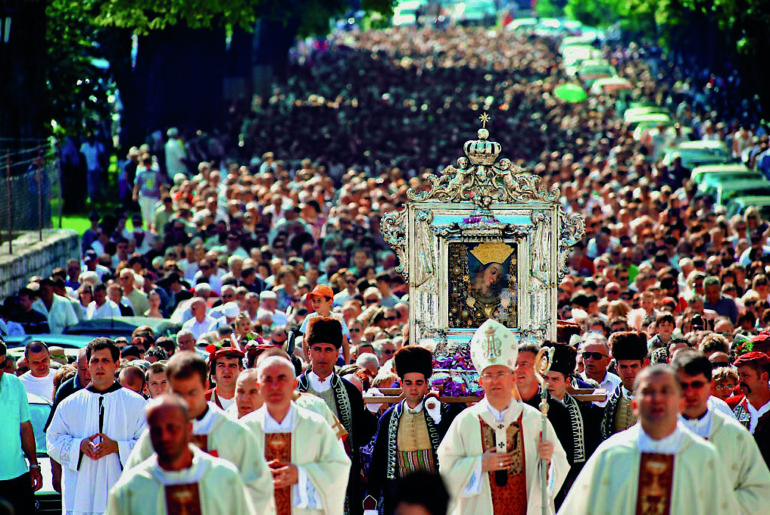
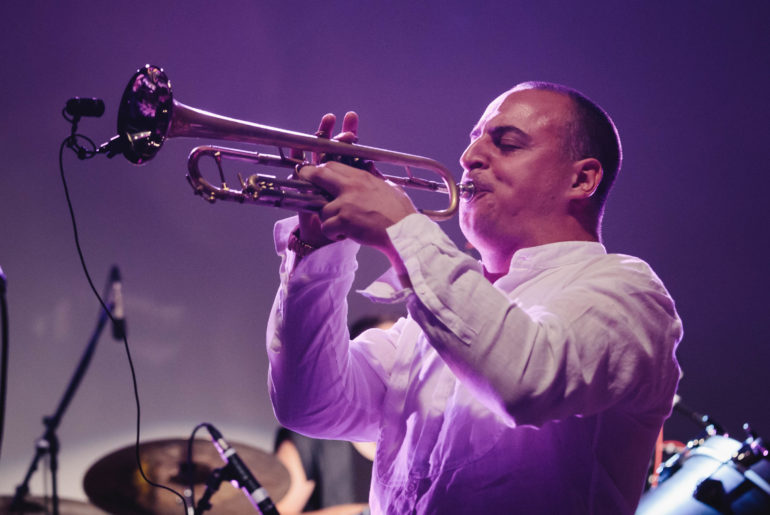
On August 23rd and 24th, Kamičak will also host the Kamičak Ethno Festival, yet another splendid music event with foreign and local performers. Argentinean duo Turica Doncel brings the touch of Argentinean folklore combined with the contemporary musical expression. “Nomad girls”, the band Perija, will arrive from Macedonia.
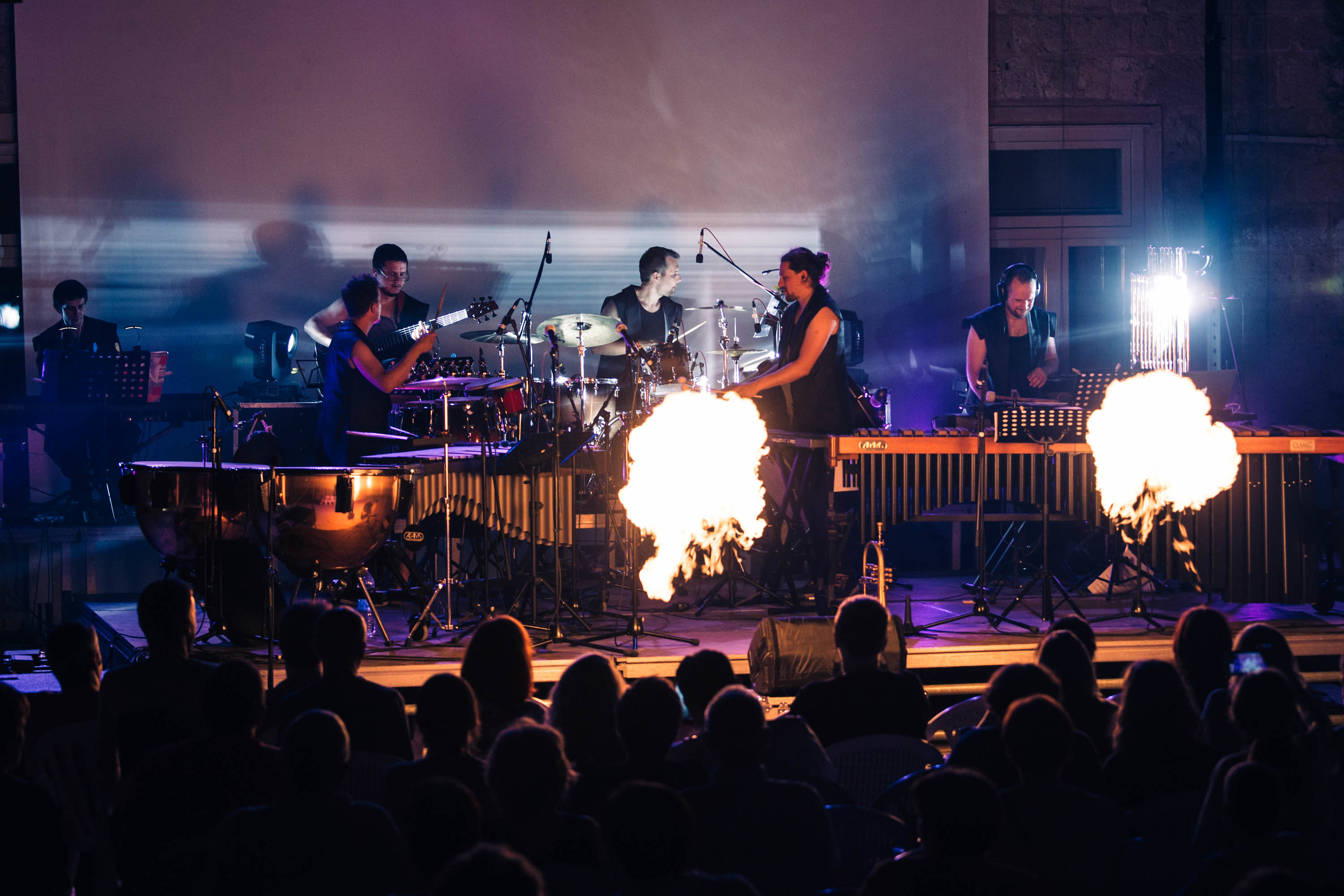
They are street performers whose musical expression is based on the authentic interpretation of traditional rhythms of Balkans, especially ethno sounds of Turkey, Bulgaria and Macedonia. A unique interpretation of the musical tradition of Balkans will be presented by the praised band from Belgrade called Naked and Ogenj i Kazan, a great domestic band that will also make an appearance at the festival. Patrick Walker Trio of the English folk scene will present the rhythms of the traditional Irish music at Kamičak.
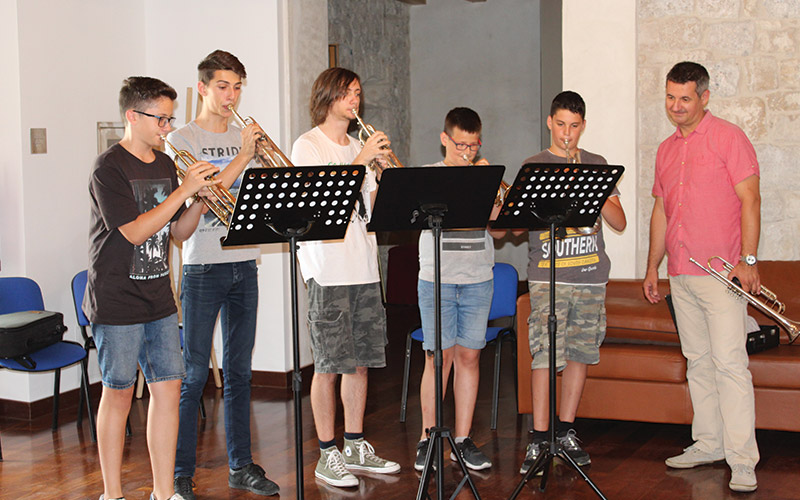
In the magnificent Alka Knights Court, the people of Sinj and guests will enjoy the performance of the Argentine Tribute band founded in Buenos Aires as a tribute to the famous Croatian musician Oliver Dragojević (on August 11th). With the concert, Argentinian Croats will cover songs of the prematurely deceased beloved singer.
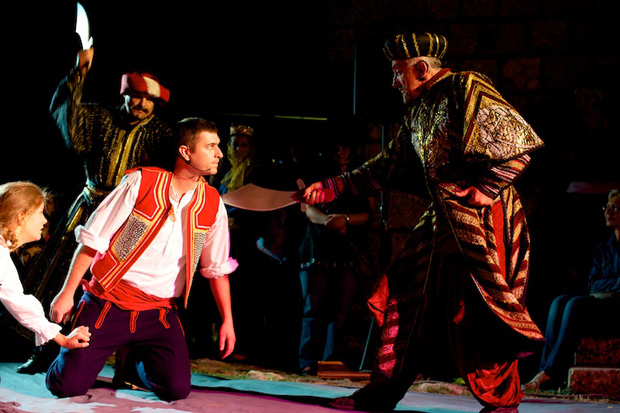
Summer music school is held from July 8th to 20th and it gathers many young musicians of all ages which have a great opportunity to collaborate with famous professors through different professional approaches and educational methods. Photo workshop The World in colors (August 30th - September 3rd), co-organized by Foto Hrvatska and Sinj Tourist Board, challenges everyone to have a new perspective on what is known and what is unknown through the camera lens.
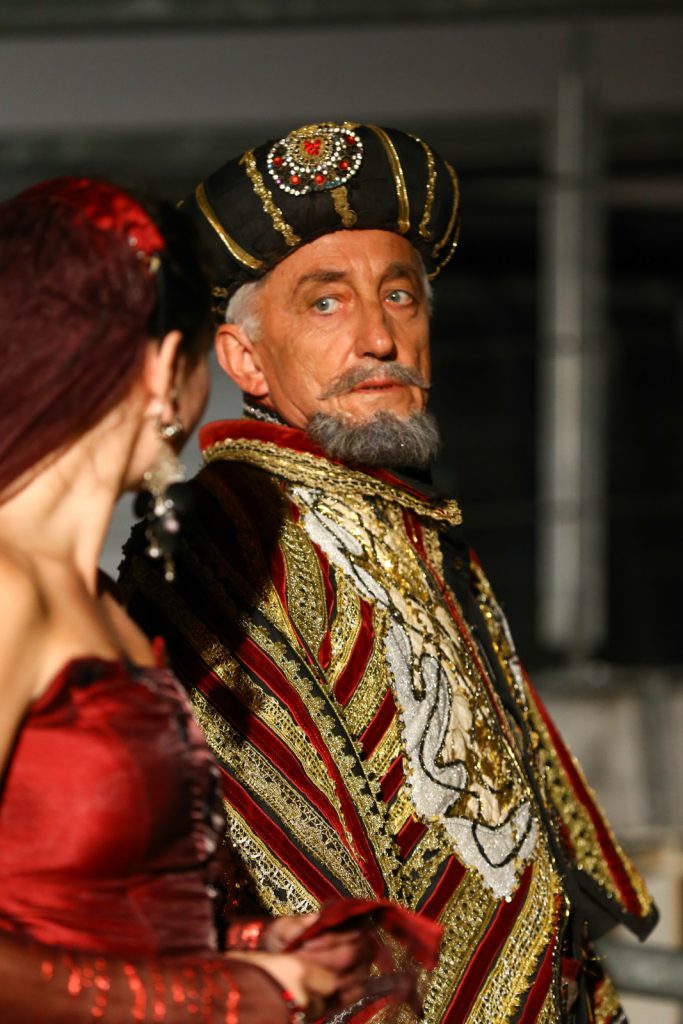
For history lovers, Sinj Tourist Board with associates is preparing a historical spectacle The 1715 Siege of Sinj (on August 8th). The indispensible part of the past of Sinj and Croatia is the battle with the Ottomans which gave birth to Alka knights’ tournament and the celebration of Our Miraculous Lady of Sinj and it is played out in all its glory before the spectator’s eyes. The bang of the flintlock pistol, the clatter of horses’ hooves, the cries of the grieving people – all serve as reminders of 300 year old events!

The game between Delmats and Romans takes us even further back into the past (on July 28th). Organized by the association Gaius Laberius, the sworn enemies face each other on the football field under the watchful eye of the emperor Diocletian and empress Prisca. The result is irrelevant – the only reward is a moment of glory (and the realization that the first football was indeed played in the Cetina Region).

The sensational 2019 Sinj Air Show will be held at the Sinj sport airport Piket from August 30th to September 1st. The Air Show is organized by the Aeronautical-Technical association of Sinj and the city of Sinj. The attractive adrenaline acrobatics attract visitors of all ages as well as fans of aeronautics.

Guests from Italian Sansepolcro, a sister city of Sinj, will present their traditional medieval archery tournament, Palio della Balestra on August 3rd.
Organized by the SKUP association, 17th Music and beer festival S.A.R.S. will be held from July 19th to 21st and it will host performers of many different music genres: Vojko Vrućina, M.O.R.T., Grše, Jufkamental, Limbonaut, Edo Majka,, Atheist Rap, Dregermajster, Teški Osjećaji, Tony Rose & The Band of Jakeys.
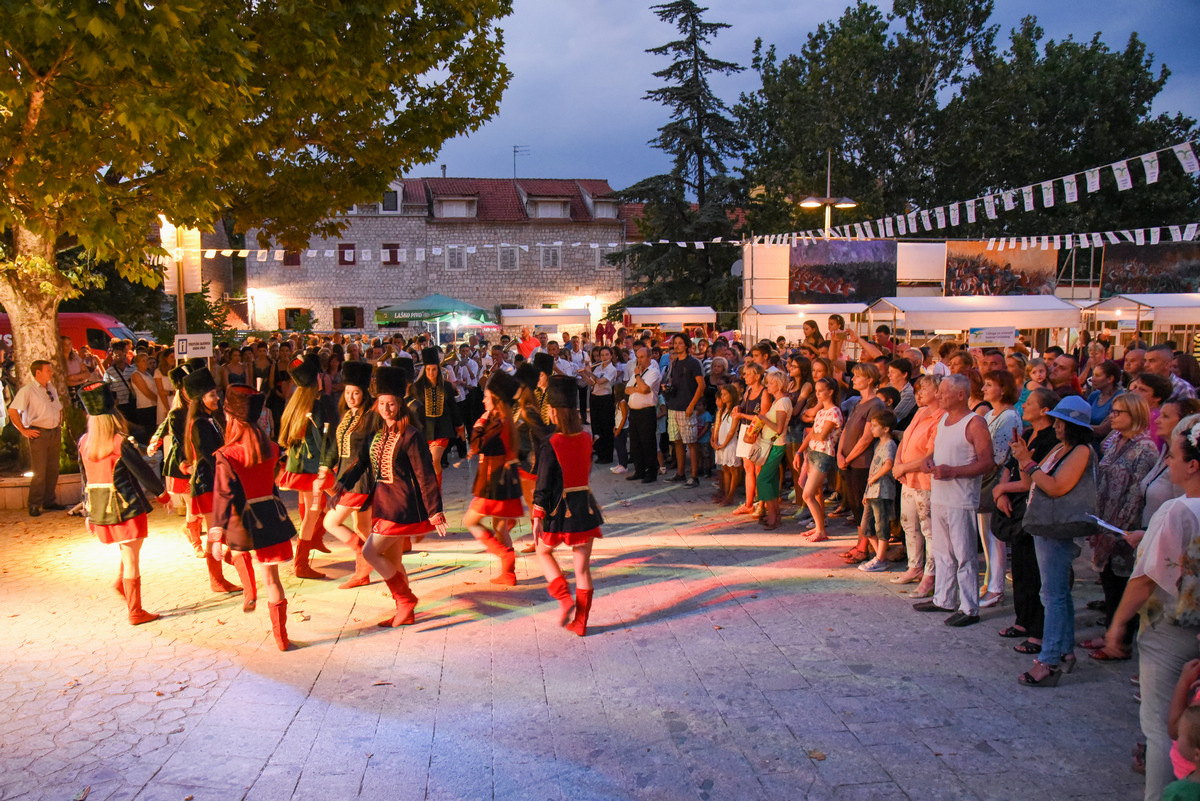
Dr. Franjo Tuđman Square is traditionally a home to Sinj Village Fair on August 2nd and 3rd and it will host many exhibitors who will display and offer ornaments, handicrafts, delicacies and products from our villages and islands. In hope to preserve old crafts that could go extinct, the Sinj Tourist Board, under the patronage of the Ministry of Culture, is organizing an educational traditional hand-wheel pottery workshop. Visitors will have an opportunity to see how clay pots are made in crafty hands of the potter Ivan Knezović. It is important to mention the long forgotten craft of opanak-making (Lilja Vojković).
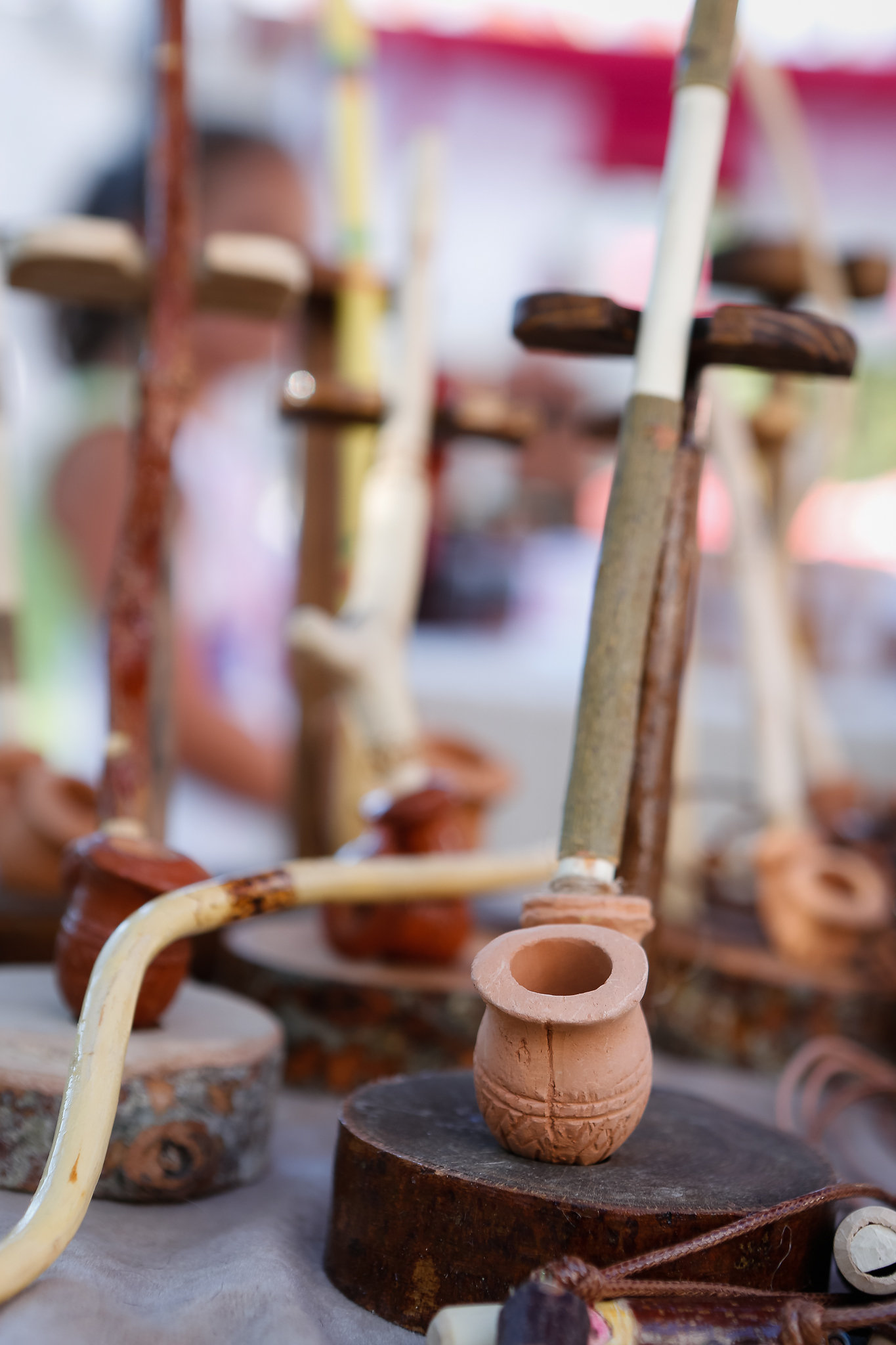
Visitors have an opportunity to taste domestic products and dishes at the fair. Apart from the exhibition and enogastronomic part, the visitors will also enjoy the entertainment program including the performances of many associations and culture and art societies. We will see the performances of the Sinj majorettes, Culture and Art Society Cetina, Culture and Art Society Vrilo, Associations for the Preservation of the Heritage of the Cetina region, URIG from Otok and HKUD Peruća. Traditional circle dances will be performed along with klapa singing and rera singing, traditionally sung at dernek (traditional folk party).

Sinj Tourist Board invites everyone who is interested, guests or local people, to join our free tours every Thursday in 7 pm from July 18th to August 29th. It’s a great opportunity to familiarize with the city in the hands of professional tourist guides. Make sure to visit the Alka race track in mid-July to see the preparations of alkars for the highly anticipated competition in August. A relaxing atmosphere of Prova offers a new perspective on the Alka competition.
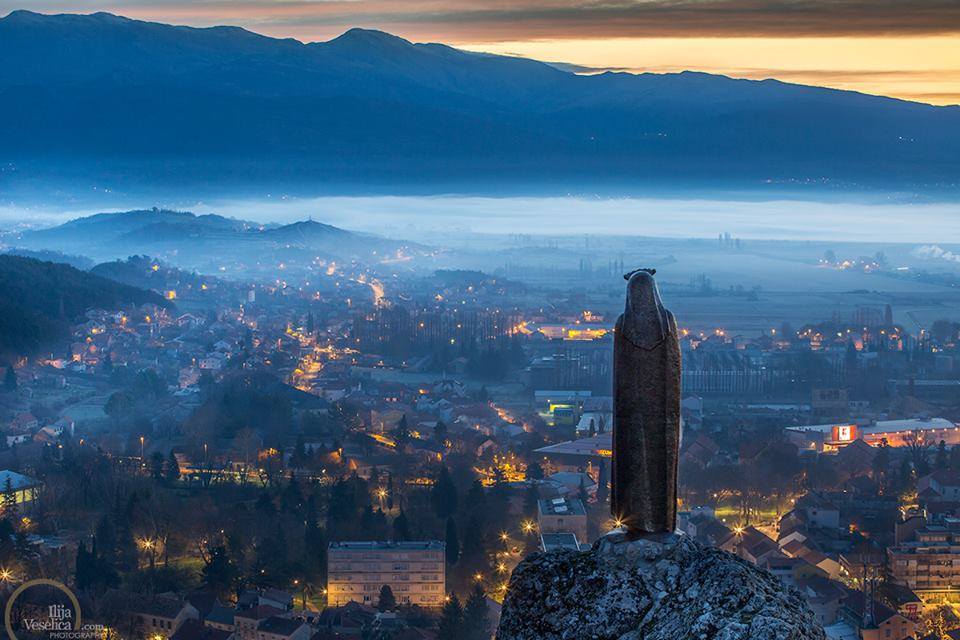
The highlights of this great manifestation are undoubtedly Alka ceremonies (Bara on August 2nd, Čoja on August 3rd, Alka on August 4th) and the Feast of Assumption of Mary, the heavenly patroness of our city. On this day we celebrate the Day of the town Sinj! We invite you to have a look at the program The days of Alka and the Assumption 2019, and join us in the summer atmosphere of Sinj!

Photo: www.visitsinj.com
The Project “Sinj u sridu”, as
well as promotional materials and their implementation was co-financed by the
European Union from the EU Fund for regional development and operational
programme Competitiveness and cohesion 2014-2020.
Content of promotional article
is sole responsibility of JU RERA for coordination and development of
Split-Dalmatia County and under no circumstances does it reflect the attitude
of the EU and/or the governing body.
For more information visit www.strukturnifondovi.hr
More: www.cetinska-krajina.hr
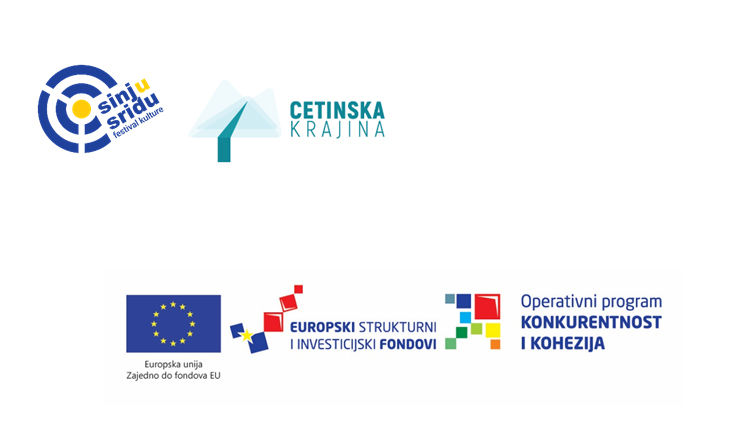
Split becomes Hollywood! The prestigious My Global Fashion Awards 2019 to be presented in Split’s Perivoj
DASH OF
WORLD’S GLAMOR IN DREAMY COURT OF SPLIT’S PERIVOJ
Designers,
models, photographers, fashion icons, world-famous bloggers, an entire pleiad
of publicly famous names will shine on
the one & only red carpet in Croatia on June 05th in the fairy-tale court of Split's Perivoj, where the second prestigious presentation
of My
Global Fashion Awards will be held.
Who will take the title of best designer of men's or women's
clothing, who will be the "best model 2018" and who be celebrated as
fashion icon – we will find out in less
than a week, at the biggest fashion event.

There are five categories of nominees, yet the number of nominated people was significantly higher so the expert jury members - Nenad Korkut, Zvona Vučković, Neda Makjanić-Kunić, Josip Grabovac, Marco Consoli and Vanja Ljubić had not an easy task to pick the best ones.
The categories in which we already know the new owners of the award statuettes are "Life Achievement and Contribution to Fashion" , which will be awarded to Tihana Harapin Zalepugin and the "Fashion Icon" category, which will be awarded to Judita Franković, by the jury's direct decision.
The other nominees in five categories , will be kept on tenterhooks for a few more days, says Gianna Apostolski, organizer and founder of My Global Fashion Awards.

There are reasons for that too, as the names of nominees were carefully selected, so in the category "Men's Fashion Designer", Toni Rico, Anthony Avangard and Tomislav Bahorić will compete, and in the women's version of the award, the competitors are Twins, Loredana Bahorić and Arileo.
The competition is strong in other categories as well, in the one for best designer of fashion accessories - Sovilj, Grubić Design and Tamara Bombardeli, and int he category of "Fashion photographer 2018" the race will be decided between Mare Milin, our local force from Split - Bruna Kazinoti and Filip Koludrović.
Gordana Dude, Ana Lea Janžić and Drago Pezić are competing for the title "Model 2018" and the main prize of the MGF Award will be kept as the biggest secret till the award ceremony, which is also the highest award of this event.
Like last year, this year's event as well includes guests from different countries of the world, and some of them will receive direct awards in certain categories.

We must point out that the award for "MGF blogger 2018" will be awarded to the world-renowned blogger Tamara Kalinić, who works with world-famous designers and brands and has just launched her own sunglasses line named So Shady, worn by Camila Coelho, Janice Joostema, Sophia Smith and many others.
This year, a special MGFs Master Tailor 2018 Award will be appointed to the hands of the famous Italian Luca Moritto, a junior member of the old academy founded in 1575 in Rome.
The Oscar-styled program will be hosted by actor Slavko Sobin and tv columnist, comedian and radio host Andrea Andrassy, while the famous radio host Ines Nosić, will be reporting from the red carpet.
All those who will have the honor of attending the awards ceremony, will be able to treat their taste buds with delicious dishes of our chefs Hrvoje Zirojević, Braco Sanjin and Ivan Pažanin, supported by the gastro-partner Tommy.
Let's not forget that the fun continues even on the next day, during the fabulous MGF Party on Palmižana at Laganini Lounge Bar, where only selected guests will enjoy in the sea, sun, top quality food, drinks and good entertainment.
"I lived in direct contact with the history tailoring thanks to the Marchesini brothers and I want that this
connection remains a guideline for my professionalism. I will follow my own
style, support my creativity, but from the roots of trade born from the hands
of great people, I will draw out the beauty that knows how to overcome time, "said the young talented Italian.
The Oscar-styled program will be hosted by actor Slavko
Sobin and tv columnist, comedian and radio host Andrea Andrassy, while the famous radio host Ines Nosić, will be reporting from the red carpet.
All those who will have the honor of attending the awards ceremony, will be
able to treat their taste buds with delicious dishes of our chefs Hrvoje Zirojević, Braco Sanjin and Ivan
Pažanin, supported by the gastro-partner Tommy.
Let's not forget that the fun continues even on the next day, during the
fabulous MGF Party on Palmižana at Laganini Lounge Bar, where only selected guests will enjoy in the sea,
sun, top quality food, drinks and good entertainment.

Visit Sinj and hit the centre – new glow of Alka's city
Megaproject Sinj u sridu (Sinj in centre) is designed as an integrated project of renewal and embellishing unique cultural heritage of Sinj. Project, worth 68 million and 114 thousand kunas, is focused on reconstruction, renewal and revitalization of immovable cultural heritage and valorisation of intangible cultural heritage.
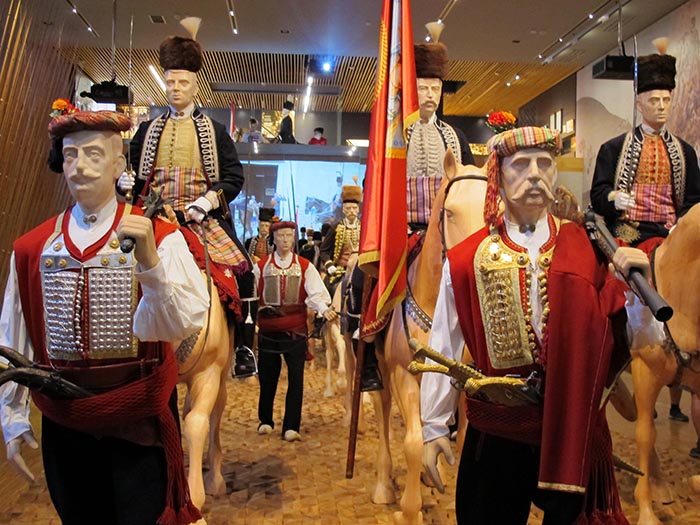
Within this project streets were reconstructed, and entire urban city core was equipped. Also, Stari Grad fort was arranged as well as Kamičak fort and a bell tower. Building Palacina was also renewed, which is of exceptional cultural-historical value. Here a completely new, arranged Museum of Cetina region will be located, together with multifunctional hall for presentation of traditional crafts and products. This is especially important for numerous family rural households, small crafts and cooperatives dealing with production of autochthonous products and souvenirs. From now on they will be able to present and sell their products throughout the year.
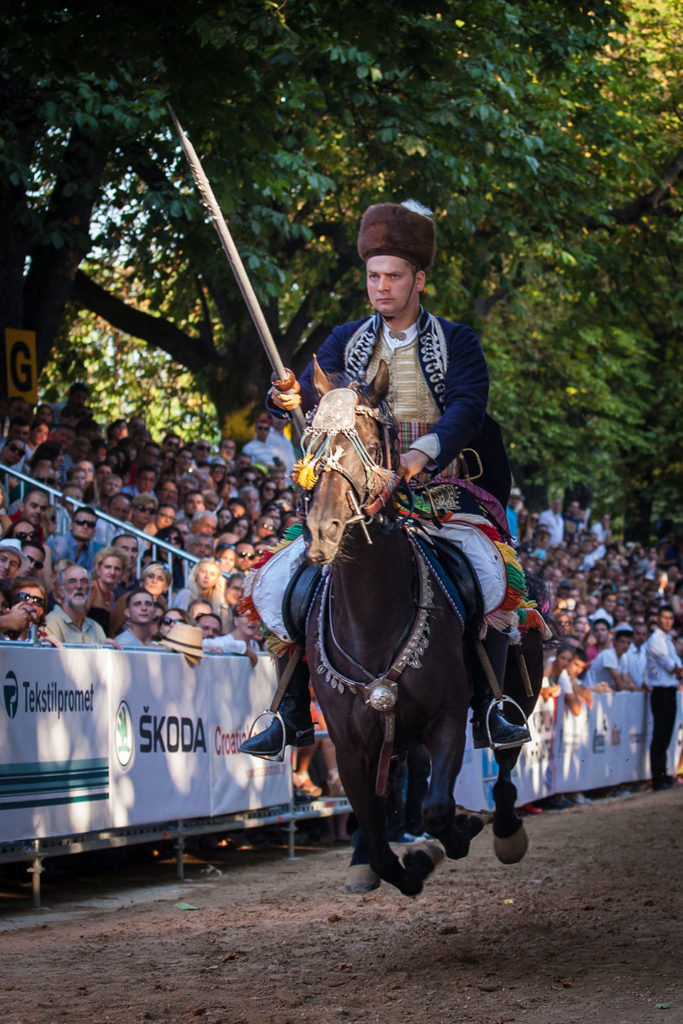
Significant amount of finances go to theme Sinj Alka – mainly for purchase of equipment and development of new multimedia interpretation forms and centre dedicated especially to this knights’ competition, upgrading of souvenir production and other contents.
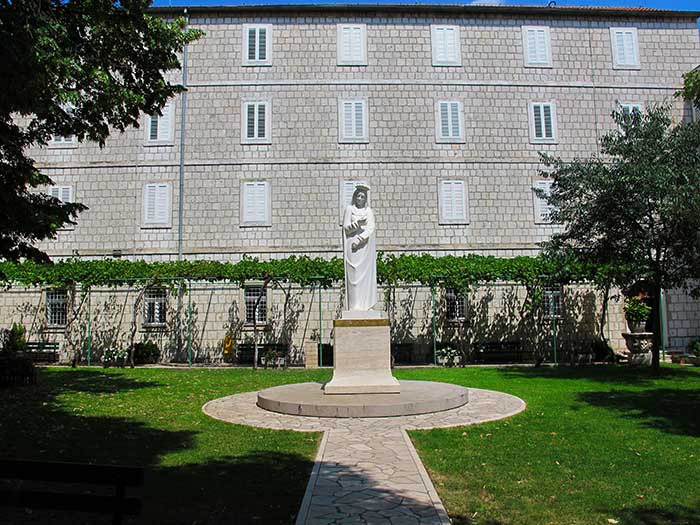
They also plan to build Interpretation-educational centre on Sinj hippodrome, on almost 2500m2. Centre is planned as a space where visitors will be able to participate in Alka's horse-riding school, and feel real presence and vicinity of noble horses from Alka's stables at first-hand, and even feel original Alka costumes.
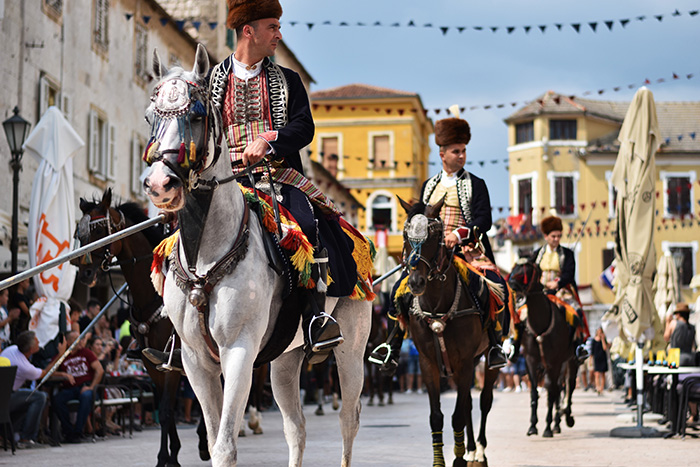
On this project, together with Sinj Town as project holder, another five project partners are involved that are relevant for social and economic development of the region and management of cultural heritage.
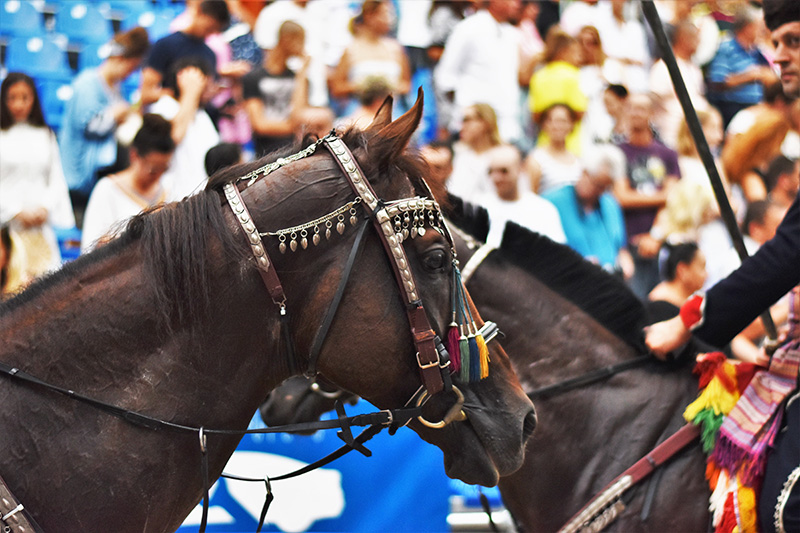
Sinj is proud of its efforts in sustainable tourism, constantly aiming to ensure pleasurable everyday life for the locals and attraction and freshness to its guests. This was recognized by EDEN network (European destinations of excellence), which awarded this town with first prize in category ''Exceptional cultural-tourist offer in EDEN destinations''.
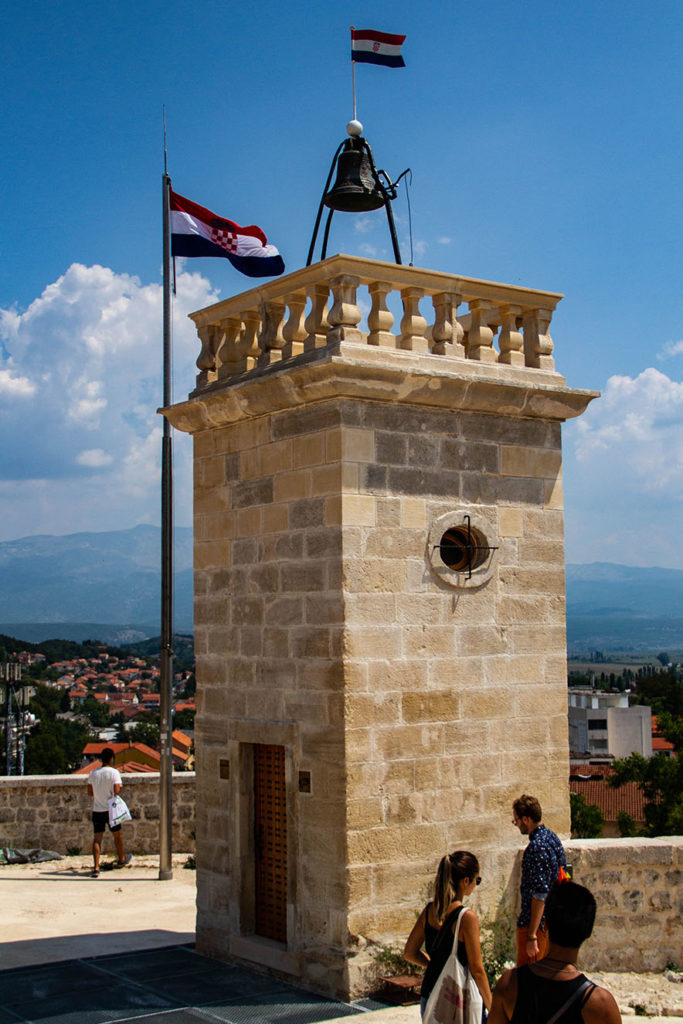
Numerous significant cultural-art events contributed to winning this award, together with numerous places in town that are used as a stage for various manifestations. The presence of the spirit of past times floating over Sinj is just fascinating – priceless cultural heritage is not just a look in the past, but a firm base for shiny future.
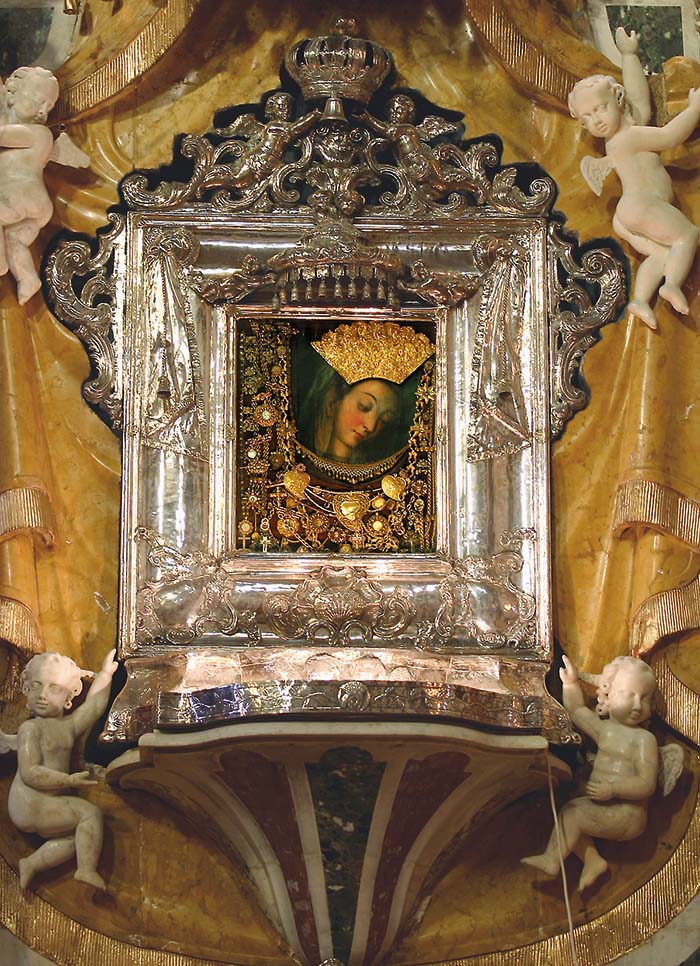
Sinj Alka – organized in honour of victory over Ottomans in 1715, is a sort of time machine that takes you back to some ancient times where one can hear rattling sables and firelocks, neighing of decorated horses, while proud knights of hawk eye and firm fist throw their spears in the centre, the smallest circle of the metal target; but, there is more to see in Sinj.
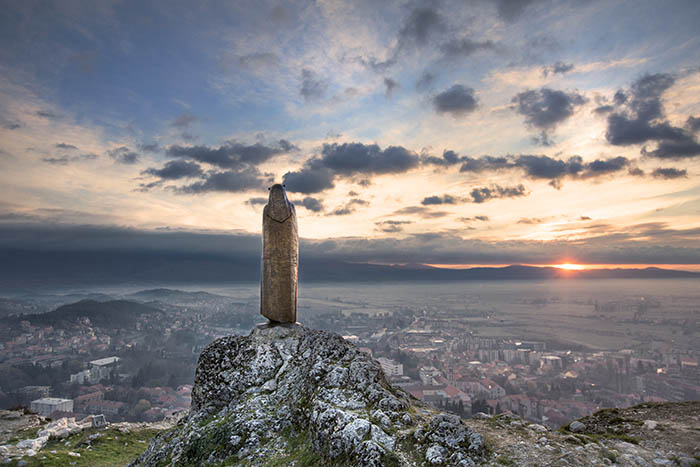
The church and a monastery of Our Miracuouls Lady of Sinj is one of the biggest Croatian Marian sanctuaries and it is a host of the very top of Croatian klapa (acapella) singing, on a traditional concert Klape To Our Lady of Sinj. Spiritual acapella compositions of exceptional quality in open space of meditative monastery garden must be heard live.
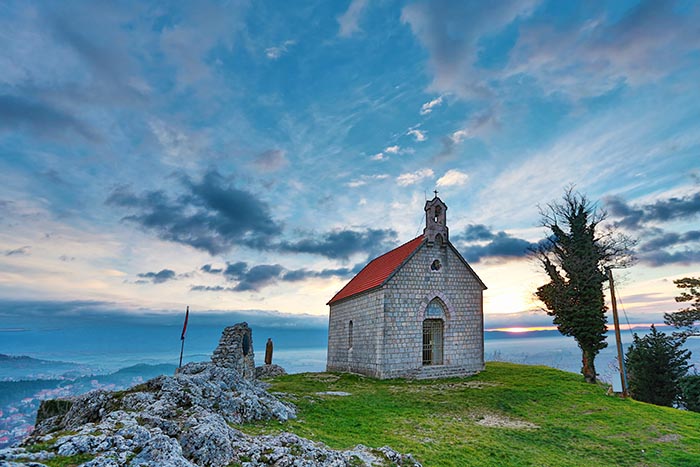
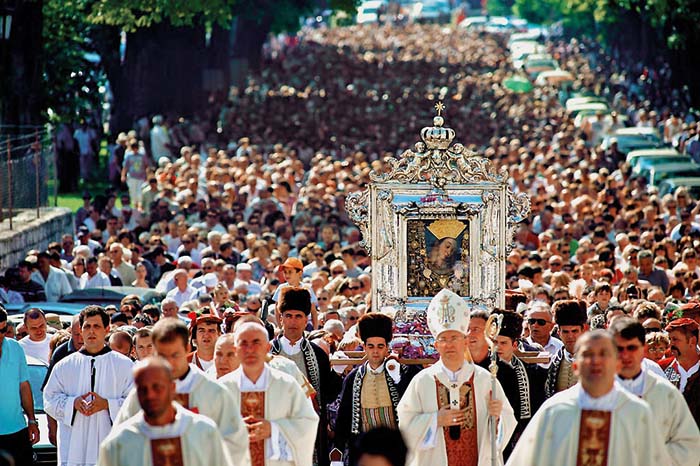
For their vows, pilgrims will hike the Road of Our Lady of Sinj, along ancient roads and picturesque bridges on the Cetina River, traditional hiking and horse-riding paths near the remains of defence walls, abandoned route Rera, former Sinj rail. Stations of the Cross on Grad fort are unique works of sculpture art and are exquisitely incorporated in ambience of a walkway, surrounded by tranquillity of the greenery.
In Cetina Region Museum and Archaeological collection of Franciscan monastery many priceless historical objects from local finds are on display (ancient settlement Aequum, Tilurium), which testify of early civilizations on this area. Multimedia Sinj Alka Museum (Europa Nostra award winner – award for cultural heritage of the EU) in a modern and interesting way presents specificities of knights’ game, and in gallery Sikirica, apart from permanent exhibition of works of Stipe Sikirica, many exhibitions, literary nights and various cultural events are held.
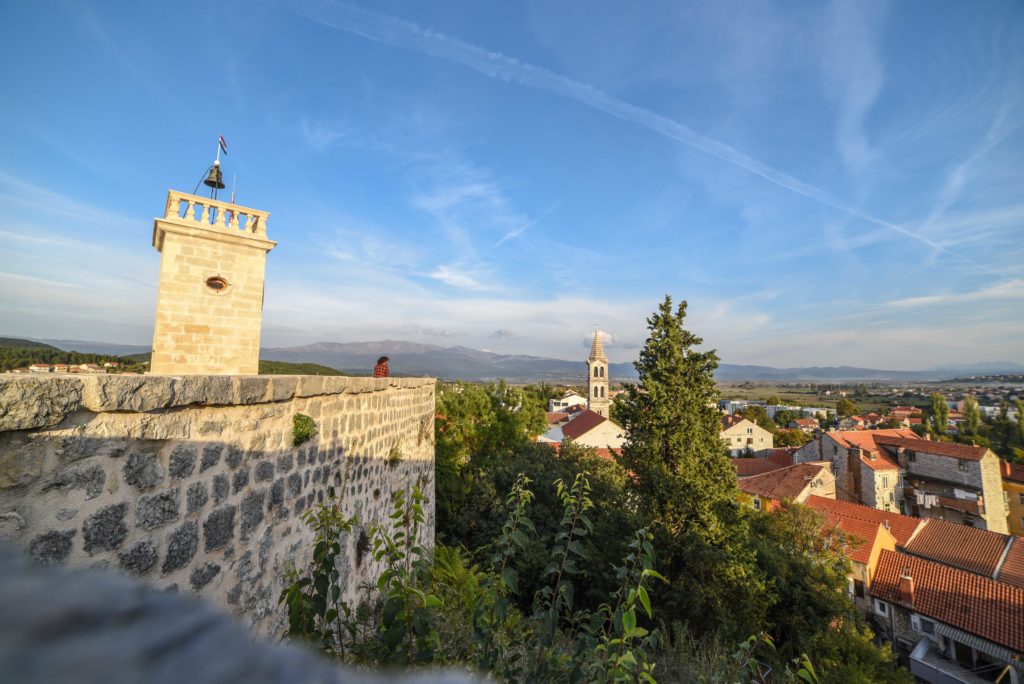
Kamičak, small fort of star-shaped layout, former watchtower whose clock is the main time-orientation point for all the locals even today, is an ideal stage for cultural evets and concerts like Music Nights. Sounds of classical, traditional and jazz music under the starry sky will most certainly delight you and make you come back the next year as well.

Show The Siege of Sinj 1715 is a historical drama spectacle that takes place on authentic locations and shows events from famous battle in 1715. Do not miss to experience how 700 Sinj’s defenders resisted the attack of 70 000 Ottoman soldiers led by Mehmed-paša-Čelić!
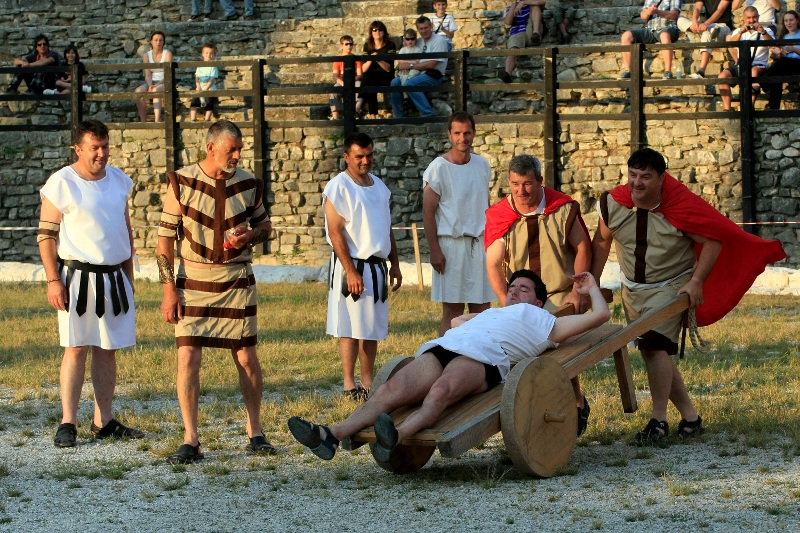
Football is definitely home in Croatia, and you will be reminded of this with football game between Delmats and Romans, designed on the basis of historical fact tied to headstone of Gaj Liberije – ‘kid with a ball’, as they call him in Sinj. The game is actually a comic theatre show, with fictional rules, in spirit of ancient times. In main roles there are emperor Diocletian and empress Priska with their consultants, surrounded by guards and soldiers in their loge. On the field there are musicians, a referee, ten Delamats and ten Roman players, all dressed up in original costumes. Unusual and fun, certainly worth visiting, even if you don’t know what offside is.

S.A.R.S. (Sinj amateur rock gathering) is a festival of alternative culture organized by S.K.U.P. association (Sinj Cultural Urban Movement) for many years. Festival is initiated to promote amateur rock bands from all over the country, but with time, famous both Croatian and international musicians came to perform. With the occurrence of more famous music bands, audience grew as well, so they come not only from towns and places around Sinj, but from more distant places and even from abroad. With musical part, association organizes performances, literary nights, film projections and various activities and workshops. Mark the end of July in your calendar – S.A.R.S. will definitely have one performer according to your taste.

Gljevstock is made for your inner hippy. Conceived as informal music gathering of Sinj’s music band members and their friends, festival soon outgrew its boundaries and continues to thrive year after year. The main goals of this festival are socialising and freedom, bends always play in presentational way, not as a competition. In the spirit of festival, camping and entrance are free, and to organizers, positive reviews are the most important. Pack your tent and check if they’re right.
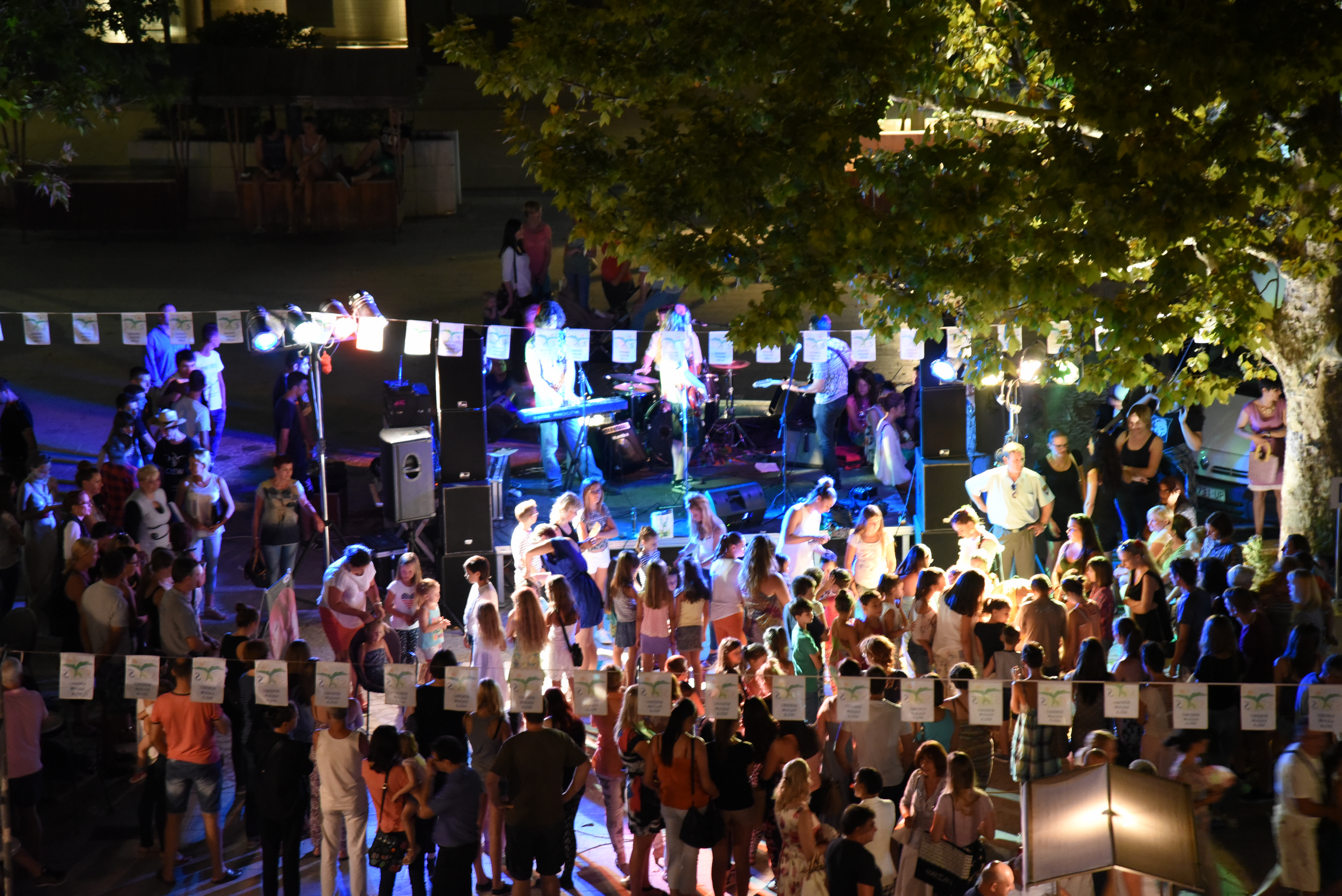
Sinj Village festival is an excellent opportunity for getting familiar with local products and crafts. Small and medium rural households from rural Sinj area and its surrounding are offered with a precious opportunity to present their traditional high quality homemade products that can’t easily reach consumers: homemade cheese, honey and other bee products, homemade meat delicatessen, wine, brandy, liqueurs, oils, eco-products and so on. Various types of traditional souvenirs are also on display, like hand embroidery, every day and decorative items and natural jewellery – all are a result of utmost care and responsibility towards heritage that is jealously kept, transferred from one generation to another and kept from oblivion. Programme is enriched with performances of cultural-art societies, bands and Sinj’s majorettes. You will leave Sinj with a full belly and full of impressions.
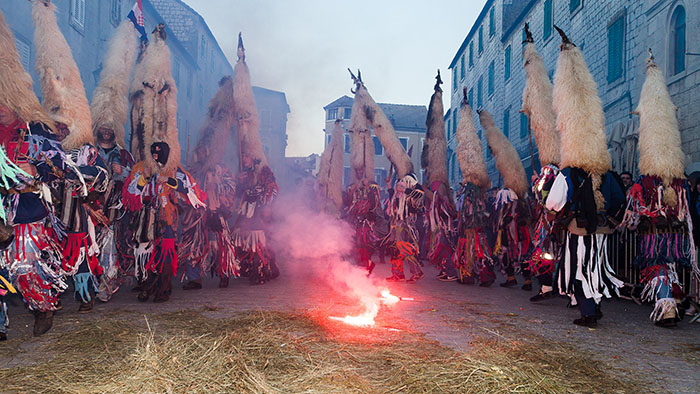
Measureless richness of tradition that is necessary to preserve for
future generations was recognized by Ministry of Culture of Croatia. It protected
rera (colourful two-part singing) as
a cultural heritage, together with annual carnival
customs of villages under Kamešnica led by Grandfathers from Kamešnica, while silent dance, unique folk dance with no musical background has been
listed on UNESCO intangible heritage list.
It’s busy in Sinj for Advent
too, when the cold is chased away with good entertainment and holiday music,
with plenty of good meals and quality drops. As soon as Chrisman and New Year’s
holidays are gone, town keys are handed over to carnival participants, led by
traditional Grandfathers from Kamešnica.
Sinj also organizes Easter breakfast,
pleasant socialising in merry atmosphere of celebrating the greatest Catholic
holiday.

It is hard to single out just one thing that makes the town under Kamičak a magical place – maybe the embrace of mountains, cold river, ash-grey cliffs or magical endless grasslands and meadows of incredibly rich flora and fauna, or even richer cultural heritage? This kind of dedication is nowhere else to be found, such a high level of gastronomic and wine offer, with far-known Sinj’s hospitality – all this is merged into a true idyllic surrounding which will definitely revitalise your body and spirit. Sinj is not just a pass-through destination – thanks to unified and targeted efforts, it has become a very popular destination and you will make no mistake if you make a reservation right now!
| The project “Sinj u sridu” was co-financed by the European Union from the European Regional Development Fund and the Operational Program Competitiveness and Cohesion. |
Photo: Ante Gašpar, Nikola Belančić, Željko Zrnčić and Monika Vrgoč
More: www.cetinska-krajina.hr
Content of promotional article is sole responsibility of JU RERA for coordination and development of Split-Dalmatia County and under no circumstances does it reflect the attitude of the EU and/or the governing body.
Find out more: www.strukturnifondovi.hr
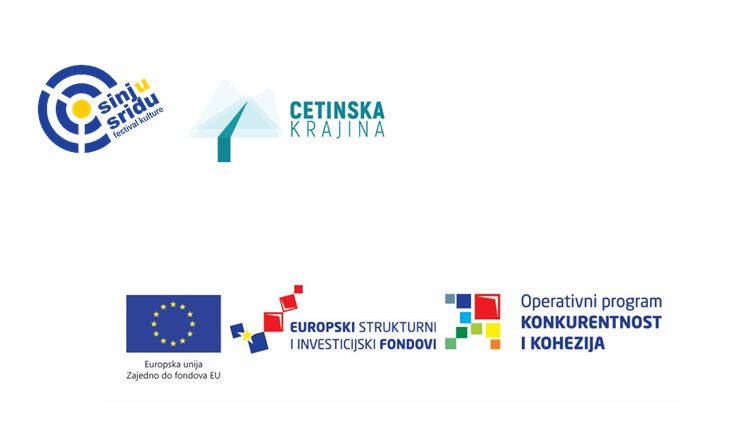
Visit the Trilj Region Museum
Trilj heritage museum was found in 1996 for the purpose of presentation of artifacts from nearby archaeological site (Roman legionary fortress Tilurium). Along with archaeological artifacts in a part of the museum ethnographic collection from Trilj and surrounding area is presented.
The Regional Museum of Trilj collects, explores, preserves and documents cultural heritage from the Trilj area presented through archaeological, ethnographic, cultural, historical and numismatic collection. Archaeological collection is classified in the chronological order into departments Prehistory, Classical period, Medieval period.
The Trilj Region Museum is an important focal point for the archaeological and ethnographic heritage of the immediate vicinity, and it is engaged in the research, purchase, documenting, preservation and presentation of its finds to the public. The museum includes an interesting lapidary arts museum.
Trilj’s most famous souvenir is an intriguing one, a walnut necklace. Traditionally, a necklace of walnuts was presented to a girl by her suitor. By accepting and wearing it, the young lady officially accepted the love of the donor.
Trilj’s gastronomic delights reflect its location and rich agricultural and eco-ethno potential. That Cetina once again plays a role, with river trout either roasted or fried, often after being covered by corn flour. Other specialities include Koštradina (smoked and dried lamb) and Pulestar (young rooster cooked under a Dutch oven).
The small town of Trilj is a pleasant 50-minute drive from Split and a world away from the bustle of the city. It is one of Dalmatia’s most interesting and lesser known destinations, a place of Roman heritage, adventure sports, impressive fortresses, agro-tourism and great food.
Given its location to the Cetina river, which has played an important role in the town’s history, it is perhaps not surprising that the Romans based themselves there to oversee the movements up and down the nearby river. The archaeological site of Tirulij and the Roman legion camp dating back to the 1st centuryand covers a 12 ha. area, part of which is covered by the village of Gardun.
Like everywhere else in the region, Trilj has endured a turbulent history, and attack and occupation were the norm in Dalmatia throughout the ages. One of the benefits for the modern tourist is the string of impressive fortresses dotted around the region, and the eleven fortresses on the Cetina each have their own individual splendour and legends. If you only have time for a couple, Nutjak and Cacvina are both accessible from Trilj
More interesting for the adventure tourist is the rich choice of activity available. Pit your skills against the mighty Cetina with white water rafting, kayaking or a canoe safari, or try some land-based pursuits such as horse-riding, hiking, mountain biking, climbing, trekking or fishing.
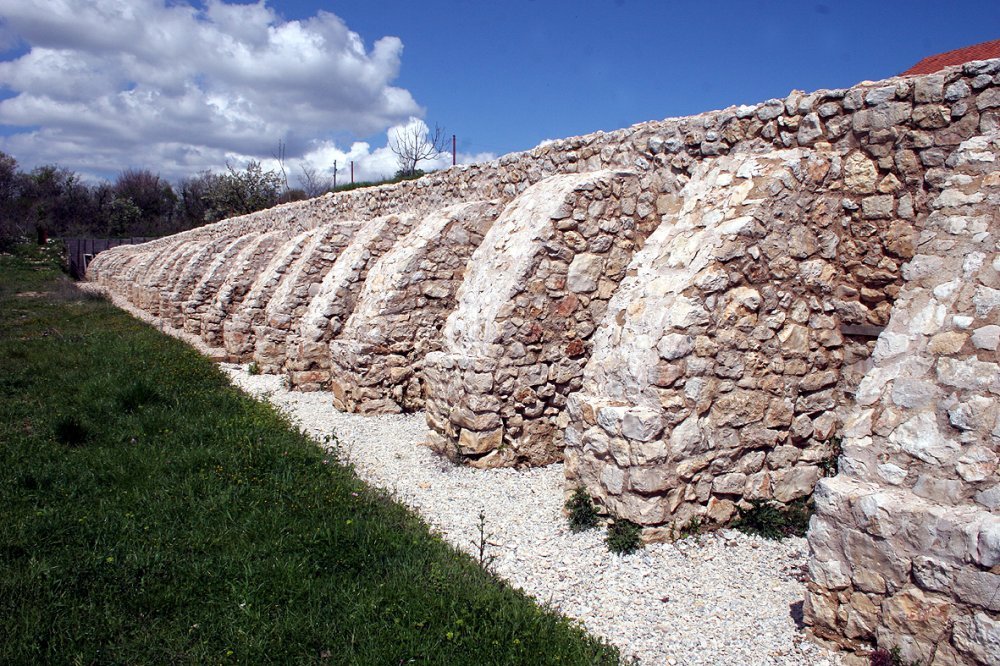

For more information, visit the Trilj Tourist Board online.
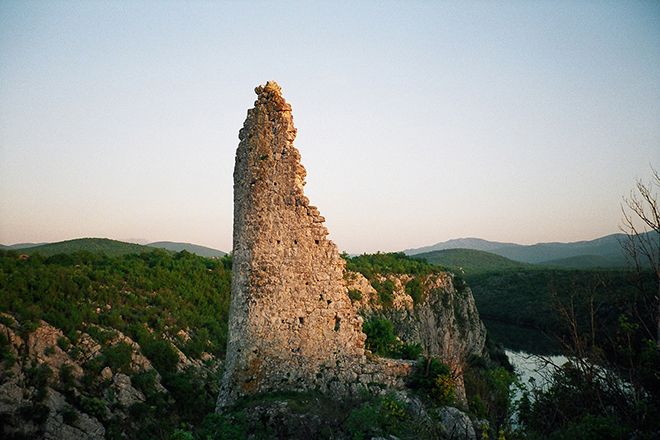
The Trilj Region Museum
Adress: Don Ante Bućana 3, 21240 Trilj
Tel/Fax: +385 (0)21 831 905
E-mail: [email protected]
Open:
MON-FRI: 9:00–14:00
SATURDAY: 8.30–12:00
Photo: TB Trilj
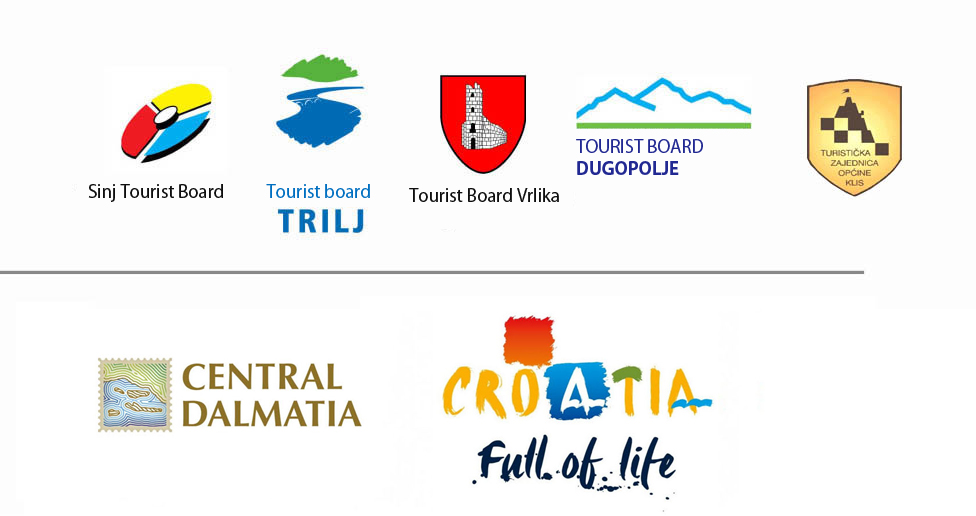
www.visitsinj.com
www.tz-trilj.hr
www.visitdugopolje.com
www.visitvrlika.com
www.tzo-klis.htnet.hr
Alka - dance of freedom
Spectacular blend of art, human skills and cultural heritage
Hot Sinj's summer brings numerous interesting events. In co-operation with Marija Šćekić, pioneer of vertical dance in Croatia, and artistic organization Histeria NOVA, project “Alka- dance of freedom” was designed. It is a spectacular blend of art, human skills and cultural heritage. Vertical dance is a very exciting and impressive form of modern dance in which artists - dancers perform in the air, with the support of a climbing rope.
Marija Šćekić is a winner of numerous significant international awards, and for years she has been cooperating with international artists, scientists and business partners.
She worked as a head of Department for contemporary dance on Art academy in Reykjavik on Iceland where she made contact with Italian choreographer Wanda Moretti and French choreographer Fabrice Guillot; there she became a part of international project Vertical Dance Forum co-financed by EU – programme Creative Europe.
She is a leader of her own project “Vrata Velebita” focused on preserving cultural-natural heritage of South Velebit and the Republic of Croatia. Art organization Histeria NOVA has been working for decades on exploration and promotion of contemporary dance as a unique blend of audio-visual and performative art.
With the reconstruction of walls of fort Grad in Sinj, the town joined association European Walled Towns that supports and is concerned with joint interests of fortified cities all around the Europe. “Alka – dance of freedom” will use south walls of the fort as its stage with 3D video mapping projection as a visual stage of the show. 3D video mapping is a new and exciting technique of projecting, which can turn almost every surface into dynamic video wall. It enables buildings to move, breathe, change their shape and even communicate.
Fort Grad lives in memory of Cetina region people as a place of mythical victory over by far superior Turkish enemy. In honour of the battle, even today after three centuries, in Sinj Alka – knight game is held. As a vow to Virgin Marry the Day of Our Great Lady is celebrated. According to the legend, she walked all dressed in white over the walls of the fort – and made the enemy retreat.
Thousands of people pilgrim in August to Sinj and pray to Miraculous Our Lady of Sinj.
The walls of Grad cherish till today famous history and eagerly watch over its town. “Alka – dance of freedom” will unite centuries old tradition of the locality and cultural heritage of Sinj and contemporary artistic move into unique audio-visual sensation.
Performance will be held on August 18.
The project has emerged within a greater project Sinj u sridu worth 68.114.000,00 kunas, of which 56.843.992,20 kunas are outright grants given by European Union.
Boom of moviemaking in Central Dalmatia!
With spring, fans of megapopular series cometh
The popularity of The Game of Thrones, a series rewarded with the 38 Emmys, is still at its peak. And this year many tourists will tour our coast looking for places where numerous scenes in the series were shot. The cellars of the ancient palace of Roman Emperor Diocletian in Split, the beautiful river landscapes of Žrnovnica, Kaštela, the green hinterland of Biokovo Natural Park rising above Baska Voda and Klis Fortress, as well as many other places filming locations are still hot fan targets. Everyone wants to be part of the filming history.
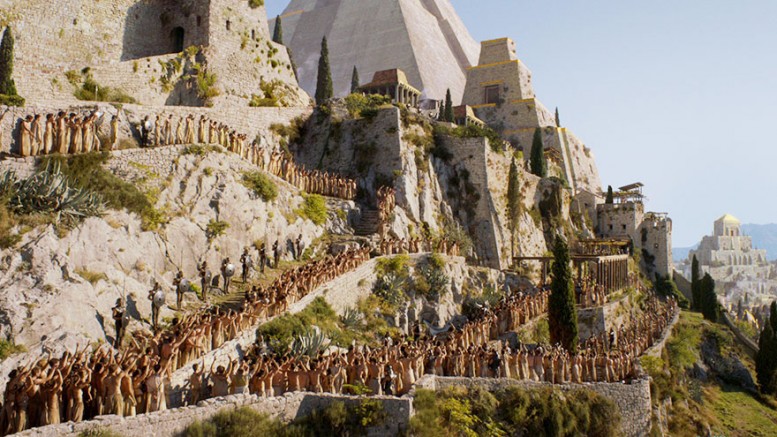
The Game of Thrones fever still runs high
Numerous travel agencies in Split and its surroundings took advantage of this very convenient moment and started a special tour of the main locations in the Dalmatian region, where scenes of the series were shot. This story has enriched an already exciting travel offer in Split & its surroundings. To tour the locations where the famous Mother of Dragons, Daenerys and her fiery flock strolled around, you will have to put some extra effort into booking your tickets!
Central Dalmatia swarms with highly attractive movie location
The coastal area as well as the array of green islands, quiet gravel beaches with the crispest of the seas on the Mediterranean, retreated under the slopes of the mountains, the green "heart" of Cetina and Jadro River valleys, is the “it” zone of the Adriatic coast, which attracted the producers of this series.

It happened to every visitor during the millennial history of Central Dalmatia – they were impressed with the views of the coves and the islands, picturesque hills and mountains, so our tourists and movie fans today experience the same - this region enchants them with the same natural beauty, as well as the rich historical heritage.


Not to forget, Salona made to the selected locations too – today it is the largest archaeological site on the eastern Adriatic coast, and it once was the capital of the Roman province of Dalmatia. The cultural heritage of Central Dalmatia was created and left into the heritage by inspired artists who engraved their art into wood, marble and stone walls of palaces in local towns.
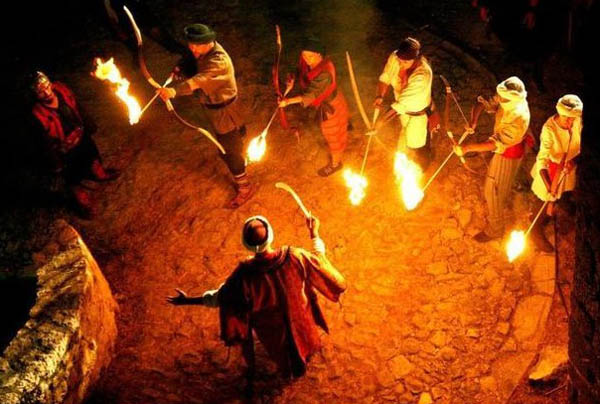
Among the famous sites included in the series we also have to mention the medieval fort of Klis, the picturesque settlement Žrnovnica, well known for its water mills, as well as Kaštela, a town settlement made of 7 smaller towns: Kaštel Sućurac, Kaštel Gomilica, Kaštel Kambelovac, Kaštel Lukšić. Kaštel Stari, Kaštel Novi and Kaštel Štafilić. Kaštel Gomilica was selected for the fourth season of the series, which features the events from the book "A Song of Ice and Fire", the third book in George R.R. Martin’s famous cycle.
Photo: TB Split - Dalmatia country, TB Stari Grad, Trogir, Klis, Solin
UNESCO’s intangible cultural heritage – ace for the cultural offer in Split-Dalmatia county
Tourist Board of Split-Dalmatia County has recognized the potential of cultural tourism as one of the priorities of tourism development strategy, to reduce seasonality and stimulate tourism activities for a larger part of the year.

Around 37% of all international travel is attributed to trips motivated by culture. With three sites included in the UNESCO’s World Heritage List, an extremely valuable and rich archaeological heritage and with the concentration of protected cultural and historical monuments, the Split-Dalmatia County is ideally positioned for the development of cultural tourism. Half of all Croatian, UNESCO-listed tangible and intangible cultural heritage properties, are located in the area of this county.

Intangible heritage includes various forms of folk and traditional cultural expressions such as language, oral literature, music, dance, games, mythology, rituals, customs and traditional crafts, as well as cultural areas or living communities in which these forms are still nurtured – hence the extreme importance to protect, present and put in service to tourism all of this valuable heritage.
Croatia proudly boasts with thirteen items included the UNESCO's list of Intangible Cultural Heritage.
Five of them are from the Split-Dalmatia County:
*agave lace as part of lacework in Croatia
*religious procession on Hvar Island named “Za Križen”
*the knight tournament “Sinjska alka”
*the traditional “silent” dance “vrličko nijemo kolo”
*a cappella singing by “klapa”

The agave lace in Croatia is made only by the nuns of the Benedictine monastery in Hvar town, and this skill has been present in Hvar since the mid-19th century. The lace is made of threads which are obtained by a special, painstaking process from the middle of the fresh agave leaves. After processing, the threads are white, fairly thin, and of a certain strength and length.

The religious procession “Za Križen” is a unique ritual of particular devotion, an expression of the religious and cultural identity of the inhabitants of the central part of the island of Hvar, which continues for five centuries and connects six island towns (Jelsa, Pitve, Vrisnik, Svirče, Vrbanj and Vrboska).

On the night from Maundy Thursday to Good Friday, processions start from six parish churches, guided by the “križonoša” – the cross bearer, carrying a cross weighing 18 kilograms. He is followed by a large number of believers and pilgrims, who stop at the churches and chapels of other villages and small towns, before they return to their parish church in the early morning hours. The procession takes eight hours and passes over 25 kilometers.

Sinjska alka is a knight tournament held in Sinj since 1717, on the first Sunday in August, to commemorate the victory over Turkish invaders, on August 14, 1715. During the competition, the rider races on the horses in gallop down the main street, aiming for the “alka” - the iron ring hanging on the rope. Tournament rules promote fair play and emphasize the importance of participating in community life. Also, Alka's participants must be members of families from the area of Sinj and Cetina area. Sinjska Alka is the only surviving example of medieval knight tournaments that were regularly held in Croatian coastal towns until the 19th century.

“Vrličko nijemo kolo” or the Silent Dance from Vrlika is unique for its performance, with no musical accompaniment or independent if such accompaniment exists (it is played by traditional “diple”, a bag-pipe-typed instrument, or by a specific way of singing in small groups by "shaking" the voice – “rera”, “ganga”, “ojkavica”).

It is performed in a round – in a “kolo”, only in the area of Dalmatian hinterland, but it can also be broken into pairs or performed during the entire dance in pairs, which are moving freely in the “kolo” or the dance area.

Klapa singing is a traditional polyphonic a cappella singing, without accompanying instruments. The tradition of klapa and klapa songs which we know today was formed in the mid-19th century, at the time when the cultural and musical identities of Mediterranean towns on our coast and islands, especially in Dalmatia, were profiled. The oldest model of klapa, the folk klapa, is an informal group of singers who occasionally sing to satisfy their love of singing, more than anything else. Tradition of oral expression, the simplicity of musical expression and spontaneous singing are part of the main features of this model of klapa. During the last decades, klapa singing has seen great changes and has gained great popularity even outside Dalmatia, the fatherland of klapa singing.
Photo: TB Split Dalmatia County, TB Stari Grad, TB Vrlika, TB Sinj
Cultural tourism in Dalmatian Zagora is blossoming: All the greater interest in visiting stećci in Imotski!
Stećci (standing tombstones) in Imotski region were listed on 8th place of world UNESCO heritage list
Imotski region has a rich history of legends and myths, beliefs in fairies and other surreal creatures connected to stećci (standing tombstones). Folk tradition has attributed their emergence to surreal creatures of great strength and power. These unique tombstones were often believed to have miraculous, healing properties.

Stećci in Split-Dalmatia County are a specific part of Croatian cultural heritage from Medieval Ages. Due to their significance and value, they are a great contributor to development of cultural tourism in our country. Therefore, plans for development of cultural tourism of Split-Dalmatian County include stronger marketing tools which would include sightseeing of Medieval tombstones that definitely deserve greater attention and thus contribute to development of that region.

It is known that Croatian history dates back to the 7th century, and our country is also proud of numerous historical sites. This fact is proven by Stećci – medieval graveyards, two of which were listed on 8th place of UNESCO world heritage list: Crljivica near Imotski, between Cista Velika and Cista Provo in Split-Dalmatia County and Dubravka – in Sv. Barbara in Konavli, Dubrovnik-Neretva County.
This way, somewhat mystical phenomenon of preserved stećci in our two Dalmatian places is listed with over 70 000 standing tombstones on 3 300 localities in Croatia, Bosnia and Herzegovina, Serbia and Monte Negro on a prestigious world heritage list. On this very list 28 necropolis have been included, among which are 2 aforementioned from Croatia, 3 from Serbia and Monte Negro and 20 from Bosnia and Herzegovina.

Origin of these Medieval tombs in Croatia dates back to the 12th century, and this way of burying dead continued until the 16th century. Stećci in Cista Provo and Konavli were made of limestone, which is typical for Dalmatia region. Of almost the same kind of limestones standing tombstones were built in other countries of the region, and its specificity is that it can only be found on this area. We can, for example, compare them to those made in Armenia or Ireland, but they are not completely the same. Stećci were cut out of great limestone blocks, then designed and decorated with different kinds of shapes and motifs and inscriptions inspired by religion and everyday life of local traditions.
Locality Crljivica was marked by UNESCO as the biggest and the most important collection of stećci in Croatia. On more western Mala Crljivica there is a small number of stećci decorated in relief. Till today around 90 tombstones of all types have been preserved (flagstones, coffins and ridged ones), among which there are 16 sarcophagi, 56 coffins and 15 tombstones shaped as flagstones.

Legend says that Crljivica originated when people, while escaping the Turks, covered a church located there with a pile of stones, in which valuable church vestments and chalices were hidden, together with one little bell. According to the legend, one mustn't dig there for he/she would become ill and all the crops would be destroyed by hailstorm. The oldest local people say that every year, in the period from Pentecost till St. Anthony during the night you can hear silent ringing of the buried bell.
While travelling along the road from Lovreć to Imotski, after about 5 km, one comes across a necropolis Mramor on Kamenjak locality. Legend says that standing tombstones belong to a wedding procession which was attacked by haiduks before the wedding. Under one of the tombstones, says the legend, rest the bride and the groomsman, under another one stander-bearer and under the third one the groom.
Within the programme of cultural tourism development there are many other cultural-historical sites being revitalized. Those are, for example, Roman roads in Central Dalmatia, used in ancient times by soldiers of Roman legions. It is exactly this project of restoration of net of Roman road communication in Central Dalmatia, which will include renewal and sightseeing of Medieval tombstones, that can lead to greater interest of tourists for cultural tourism in Croatia. And what Roman roads really looked like can be seen on Roman Roads Exhibition, which will be held on April 6 in Archaeological Museum in Zagreb.
Photo: TB Split-Dalmatia County, archive TB Imotski
Hvar -Croatian tourist pearl celebrates 150th anniversary of organized tourism!
The town of Hvar is going to dedicate the entire next year to celebrating grand 150th anniversary of organized tourism
ACCORDING TO EMINENT WORLD TRAVEL PORTALS, there is no world trendsetter who never wanted to visit this glamorous destination! Our domestic Saint Tropez attracts the attention of global media year after year, and it has been put in travel itineraries of world elite – from Hollywood A-listers to members of British royal family!
Almost every respected travel magazine has published a short guide about what to see and visit on Hvar; and we will tell you a secret – if you visit it in 2018, all the chances are you will feel – like a true celebrity! Namely, this is the year when Hvar celebrates a century and a half of tourist tradition, so on this occasion it decided to present itself in a special glow.
Accordingly, it put wild partying to an end with a specially organized campaign – at last, this occasion should be welcomed with dignity! – and like a true destination with strong cultural identity, it made sure that quality contents – are in abundance!
Hvar je oduvijek bio i ostao biser hrvatske turističke ponude, prepoznat zbog UNESCO lokaliteta i nematerijalne baštine, prirodnih ljepota i drugih specifičnosti, te je uvijek na svjetskoj turističkoj karti pozicioniran među pet najvažnijih odredišta u Hrvatskoj. I ove godine pozitivni turistički trendovi se nastavljaju, a jubilarna 150 obljetnica hvarskog turizma za mnoge će biti dodatni ili i novi motivator dolaska u destinaciju.
Hvar has always been a pearl of Croatian tourist offer, recognized for its UNESCO locality and intangible heritage, natural beauties and other specificities, and has always been positioned among top 5 destinations on a tourist map of Croatia. Positive tourist trends continue this year as well, and 150th anniversary of Hvar's tourism is going to be, for many, an additional motif or a new motivation for a visit.
IT HAS COME A LONG WAY since 15 May 1868, when in Hvar Hygienic Association was established. Central festivity of the grand anniversary, symbolically scheduled around this date, will last for even 5 days, while all the events (formal session of Hvar Tourist Board and a special programme on St. Stephen’s square, with gala concert and a reception) are going to have an international character.
During this anniversary year, all attractive Hvar’s locations will open their doors, so seize the opportunity and enjoy in almost kaleidoscopic range of contents!
Take a look at renovated historical Arsenal building with the oldest public theatre in Europe, enjoy in numerous exhibitions (like the one about history of tourism, exhibition of old postcards and photos, Orson Welles in Hvar, Hvar in a Film and others), book promotions and traditional manifestations.
There are some other anniversaries as well: 160 years of Hvar meteorological station, one of the oldest in Europe, 160 years of birth of dactyloscopy inventor – Ivan Vučeetić; so we can freely say that these kind of anniversaries can be found – nowhere else in the world!
CHOOSE ACCOMMODATION OF ROYAL GLOW. Hvar didn’t set aside visual experience – on the contrary! – so with the finishing of waterfront extension for 45 metres, as well as walking path on the west side of town, it is planning reconstruction of some of its most attractive hotels! We believe that with the greatest pleasure you will stay at the Palace Hotel, which will reach its 5th star, first in Hvar. Its construction was helped by Empress Elizabeth (Sissi) so staying in this renovated facility will actually be – royal!
ENJOY LIKE CYCLING SHEIKS. If you like places with great possibilities for active vacation, Hvar has a trump up its sleeve for this as well. The most recent news is that is simply delighted cycling sheiks – renowned UCI team Bahrain Meridu that estimated Hvar to have the best conditions, of all the other places in the world, for their training camp! Whether you are a professional or just recreational, you will enjoy in mild climate that enables two-wheeled adventure throughout the year, with roads of different difficulty levels that pass through idyllic Mediterranean landscape.
. It was exactly this beautiful ambience that delighted this prestigious team, and they noticed right away that Hvar, with cycling, is also perfect for rafting, canoeing, free climbing, trekking, kayak, sailing, diving and many other disciplines.
They also included enjoying in Hvar’s gastro story in their mandatory activities, what we warmly recommend to you, too! Try wines praised by the most appreciated sommeliers and combine them with excellent delicacies of Hvar’s cuisine, which skilfully blends traditional and modern. Get a few bottles of healthy and tasty olive oil, whose production lasts for incredible 2400 years. Do not miss to visit traditional villages, picturesque vine yards and lavender fields!
Experience Hvar in a manner of those who recognize good quality and don’t ask for price and you won’t miss anything of the magnificent experience of staying in this town. Although it celebrates 150 years of organized tourism – bright and diverse tourist future is yet to come.
Photo: TB Hvar, Otillo, Sunčani Hvar hotels

